
Love to read? Prefer the movie or TV series? Either way, see how your next binge can make a difference.

Visiting the Smithsonian Museum: 23 Helpful Tips
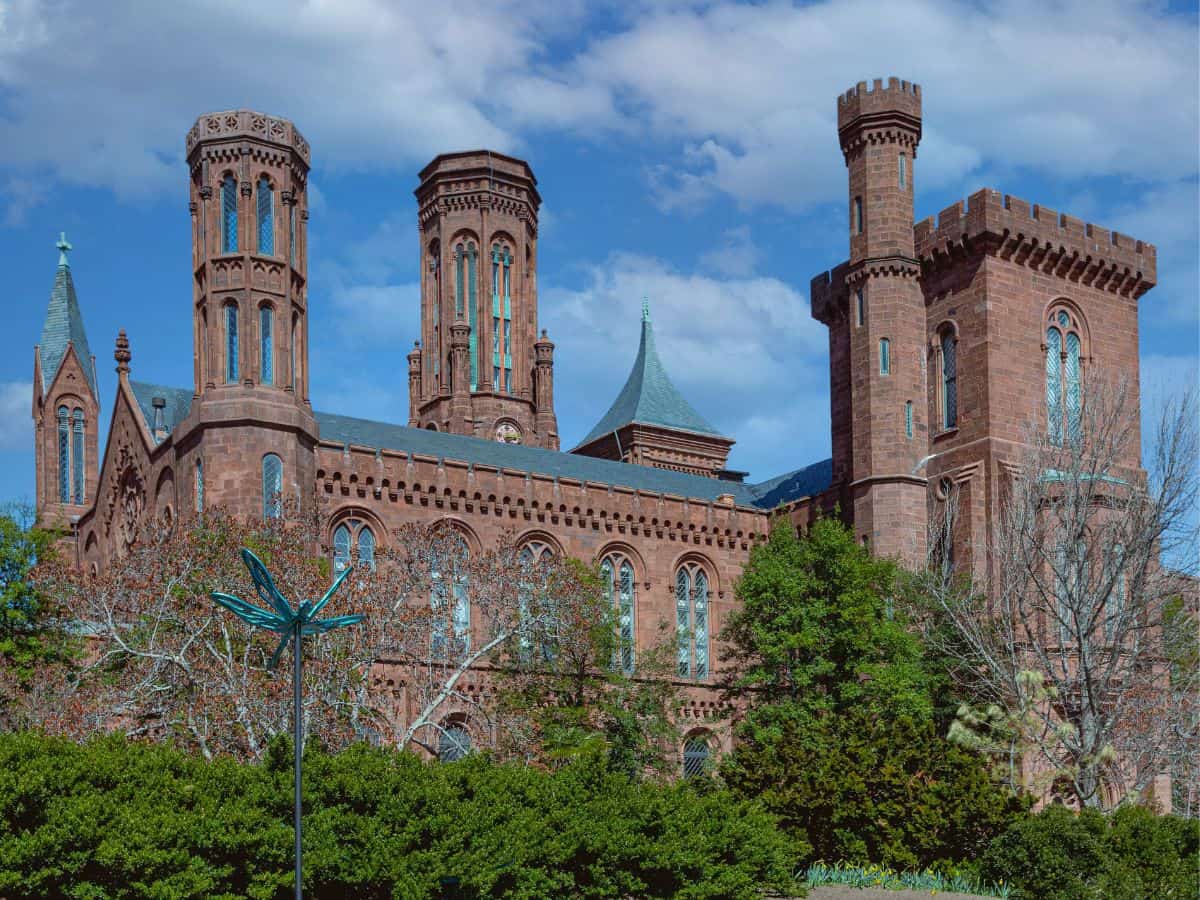
In this Article
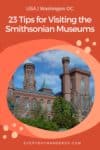
Tackling the largest museum complex in the world can be a tall task, so here are 23 Smithsonian Museum tips to help you make the most out of your visit to the Smithsonian museums in Washington, DC.
Despite what many people think, the Smithsonian isn’t a single museum. Rather, it is a collection of world-class museums, galleries, gardens, and a zoo. With 11 sites clustered around the National Mall and six other museums and the National Zoo elsewhere in the Washington, DC, area, the Smithsonian’s collection of knowledge centers serve as a treasure chest for visitors curious to learn more about the world. And w ith 1 40 million objects, works of art, and specimens, it’s no surprise that more than 30 million people visit the Smithsonian annually!
Fun Fact: In case the Smithsonian presence in Washington, DC, isn’t impressive enough, there are two additional museums located in New York City: Cooper Hewitt (the Smithsonian Design Museum) and the National Museum of the American Indian.
Sage Advice: Find the best place to stay in Washington DC based on your itinerary.
So how does one navigate the largest museum complex in the world? These Smithsonian museum tips will help!

To help offset the costs of running EverydayWanderer.com, you’ll find affiliate links lightly sprinkled throughout the site. If you choose to make a purchase via one of these links , there’s no additional cost to you, but I’ll earn a teeny tiny commission. You can read all of the legal blah blah blah (as my little niece says) on the full disclosure page .

Have You Visited the Smithsonian Museums?
Share your favorite photo with me by tagging @sagescott.kc on Instagram and using the hashtag #everydaywanderer

1. Go Mobile
Download Smithsonian Mobile to help you easily access maps, tours, podcasts, tips, photos, and more.
Sage Advice: The Smithsonian Institution has additional apps that you might find useful like the NMAAHC Mobile Stories app and the Smithsonian Channel app .
2. Or Go Old School
If you prefer paper, download a copy of the official Smithsonian Guide and Map . In addition to English, the Smithsonian Guide and Map is also available in 10 other languages. Visitors can pick up a Braille copy at the information desk of any Smithsonian museum.
Sage Advice: Get an overview of the Capital City with a guided tour of DC . For a unique experience, take a night tour , twilight tour , segway tour , or ghost tour !
Enjoying This Article?
Sign up for the newsletter!
Thank You for Subscribing!
3. Visit Virtually
Before you head to Washington, DC, consider taking a virtual tour of the Smithsonian museums. When you browse exhibitions online, you’ll learn more about what you’ll see when you visit in person. The digital exhibition experience will also help you create and prioritize your “must see” list. Some virtual tours even let you experience past exhibits that are no longer available to visit in person.
Examples of virtual tours offered by the Smithsonian include:
- The First Ladies Virtual Tour ,
- America’s Presidents Exhibition at the National Portrait Gallery,
- Against All Odds: Rescue at the Chilean Mine , a past exhibit at the National Museum of Natural History, and
- the Enid A. Haupt Garden outside the Smithsonian Castle
Related Article: 8 Things to See at the National Portrait Gallery After You’ve Visited America’s Presidents
4. enrich your experience.
Whether you’re traveling with children, alone, or with other adults, taking some time to learn more about the artifacts you plan to see can enrich your experience. In addition to Tip #3, here are some recommendations:
- Before going to the Air and Space Museum , read a book or watch a movie about Charles Lindbergh and the Spirit of St. Louis, the first plane to fly across the Atlantic Ocean
- If the National Zoo is on your itinerary, check out these fun facts about giant pandas
- Read a biography about one of the US Presidents before exploring the America’s Presidents exhibit at the National Portrait Gallery
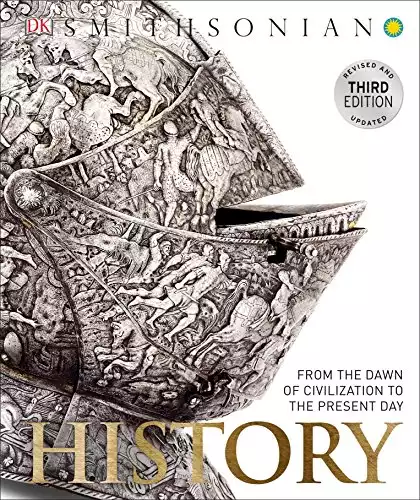
5. Open 364 Days a Year
Most Smithsonian Museums are open daily from 10:00 am to 5:30 pm, except Christmas Day (December 25th). But the Smithsonian Information Center opens at 8:30 am. Housed in the Smithsonian Institution Building (widely known as the Smithsonian Castle), this is a great first stop for your Smithsonian museum adventure. (See tip #9 to learn why.)
On the later side, the American Art Museum and the Smithsonian National Portrait Gallery are open from 11:30 am to 7:00 pm.
Sage Advice: For more to do and see after you’ve visited the Smithsonian museums, check out these tips on how to spend three days in Washington, DC .

6. Keep the Change
There is no cost to visit any of the Smithsonian museums in DC. Yes, you read that correctly, Smithsonian museum admission is absolutely free! So enjoy all of the Smithsonian museums, galleries, and gardens — including the National Zoo — at no cost. Thank you, Mr. Smithson (and American taxpayers)!
However, it is important to note that some Smithsonian Museums in DC — like the National Museum of African American History and Culture (NMAAHC) — are so popular that they require a free timed-entry ticket to visit.
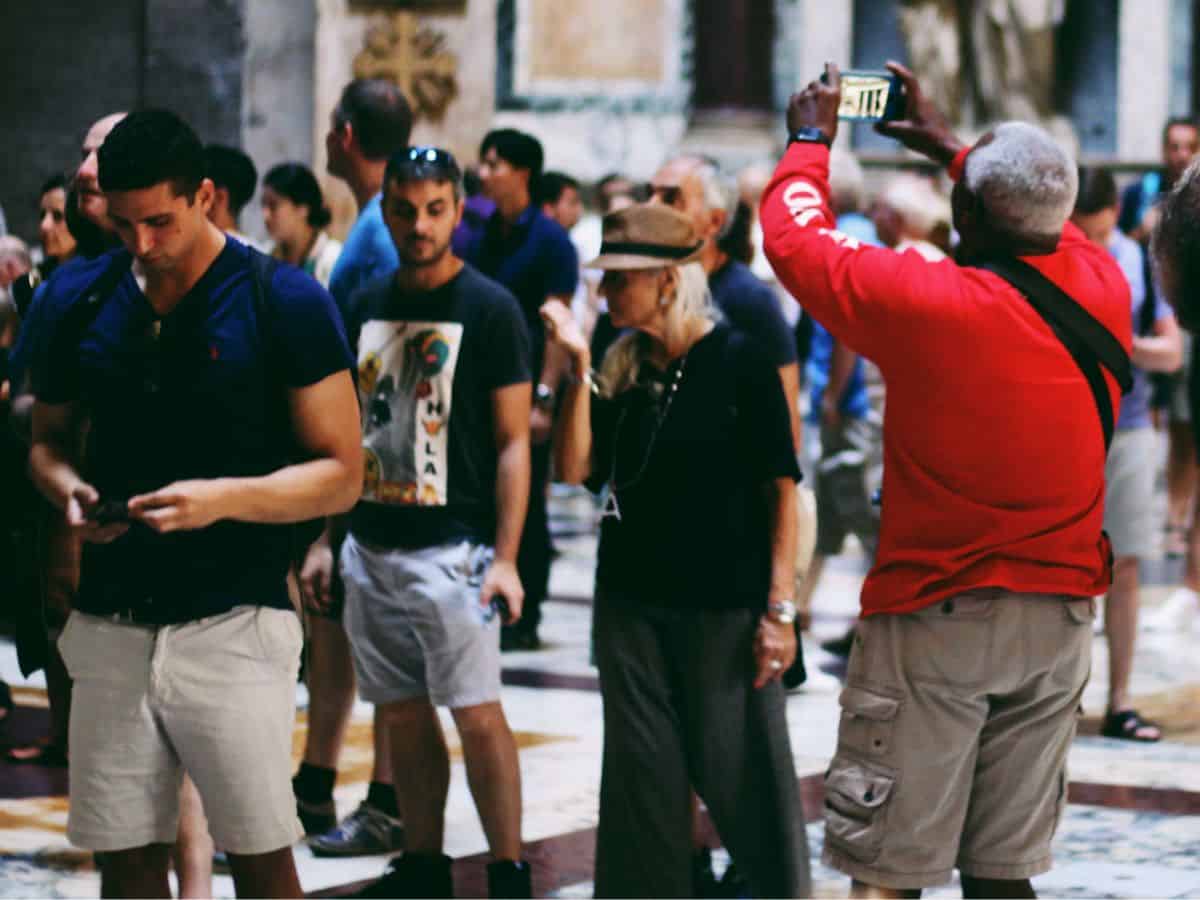
7. Avoid the Crowds
With approximately 30 million visitors each year, the Smithsonian museums can be busy even on slow days. For a less crowded experience, avoid visiting on the weekends, holidays, and during peak travel seasons like during the Cherry Blossom Festival in the spring.
Sage Advice: All Smithsonian museums are closed on Christmas Day, December 25th.
Related Article: Where to See Cherry Blossoms: 24 Enchanting Cities in the US
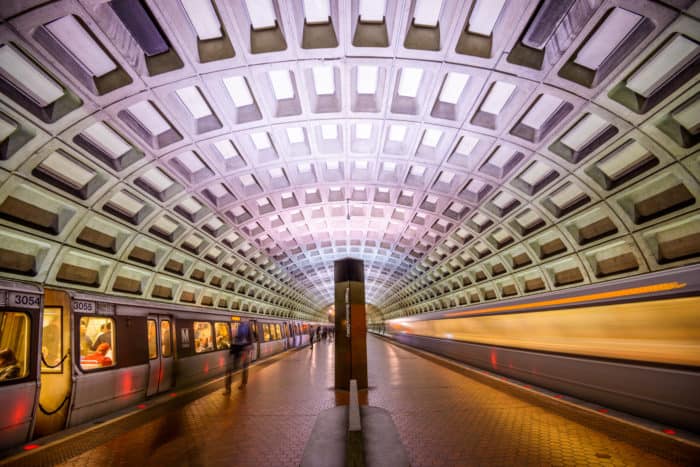
8. Make the Most of the Metro
One of the most important tips for visiting the Smithsonian museums is not to drive. The DC Metro is a fast, easy, and affordable way to get to the Smithsonian museums located on or near the National Mall. The Smithsonian metro station stop at 12th & Jefferson, SW, is just to the west of the Smithsonian Castle, the perfect place to begin your Smithsonian adventure. (See Tip #9.) This stop is available on the blue, orange, and silver lines.
If your itinerary includes visiting the Smithsonian museums on the east half of the National Mall, then the Archives Metro Station (on the green and yellow lines) or the L’Enfant Metro Station (on the green, yellow, orange, blue, and silver lines) may be more convenient.
Sage Advice: The Hop-On Hop-Off Trolley is another convenient way to get around Washington, DC. And, if you plan on visiting Arlington National Cemetery during your trip to Washington, DC, you can upgrade your ticket to include the cemetery and water taxi.
Related Article: The People and Places Behind Popular DC Metro Stations
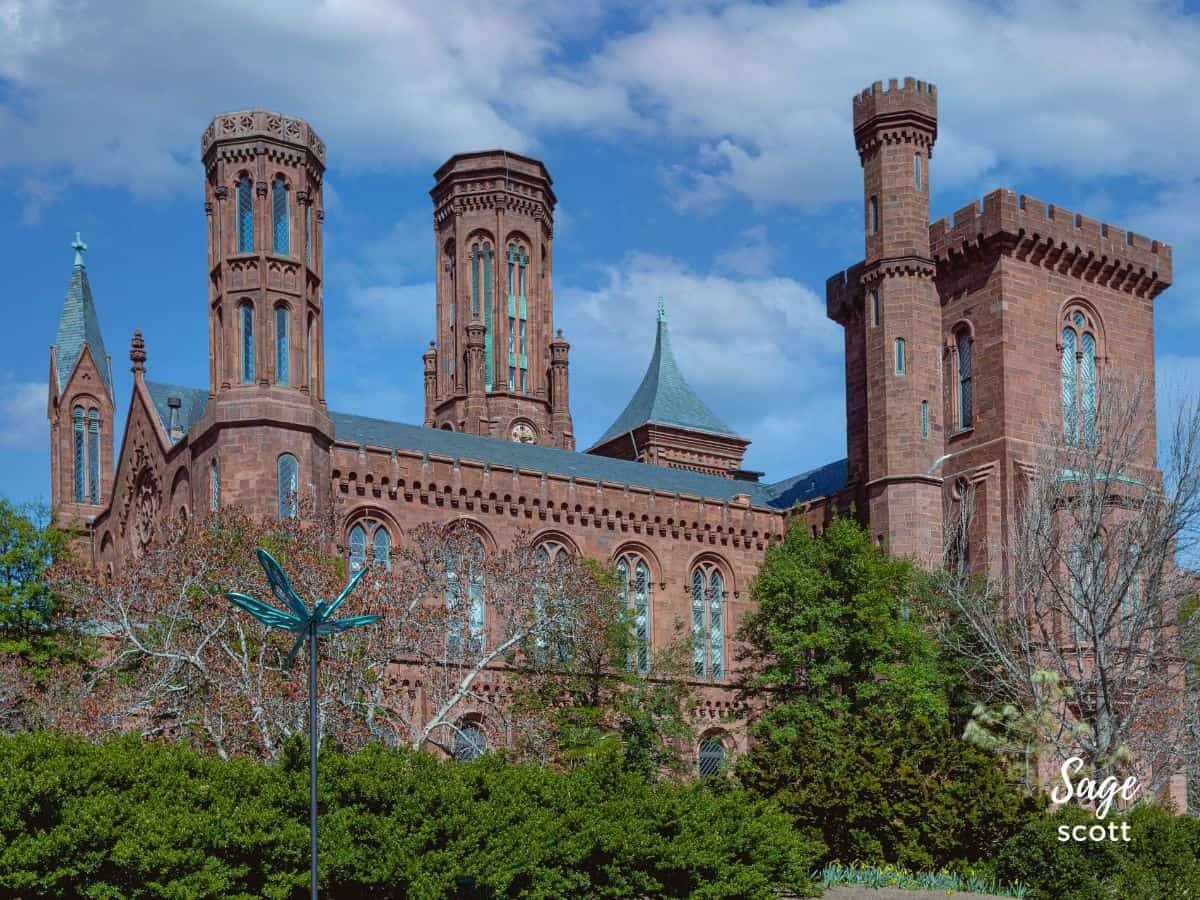
9. Start at the Smithsonian Castle
Mentioned briefly in tip #5, the red sandstone building at 1000 Jefferson Dr, SW, that looks like a 12th-century Norman castle is known as, um, the Castle. This Smithsonian Institution building houses the Smithsonian Visitors Center and is the perfect place to begin your Smithsonian Institution experience.
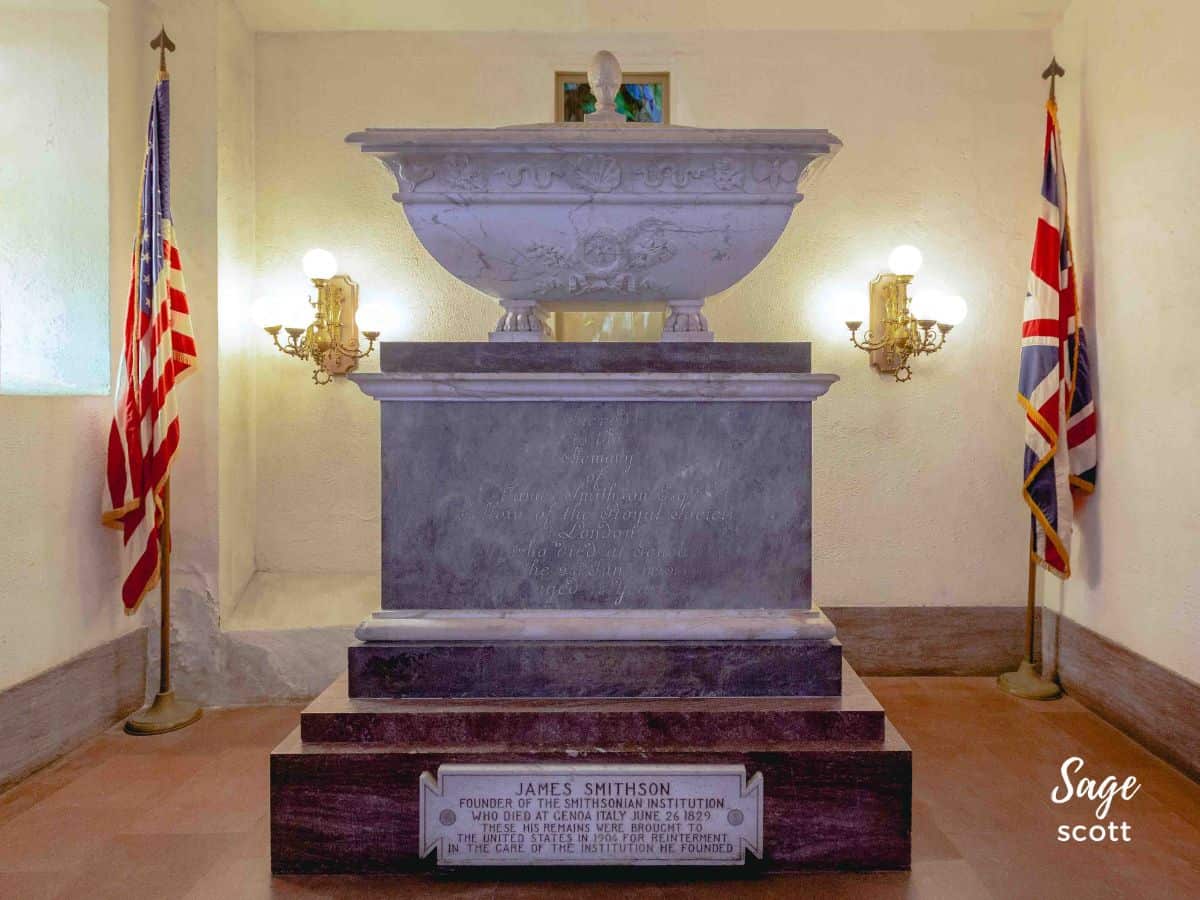
Don’t miss James Smithson’s tomb just outside the north entrance of the Smithsonian Castle. After all, if it weren’t for James Smithson, there wouldn’t be a Smithsonian Institution. This is also the place to get a fantastic overview of the collections at each of the Smithsonian museums as well as chat with in-house experts to fine tune your Smithsonian plans.
10. Then Move On to What Matters Most to You
As with any travel, it’s okay to skip the things that don’t interest you. Who cares if the Smithsonian Air and Space Museum is the most popular. If airplanes and moon rocks aren’t your thing, spend your time exploring what matters to you!
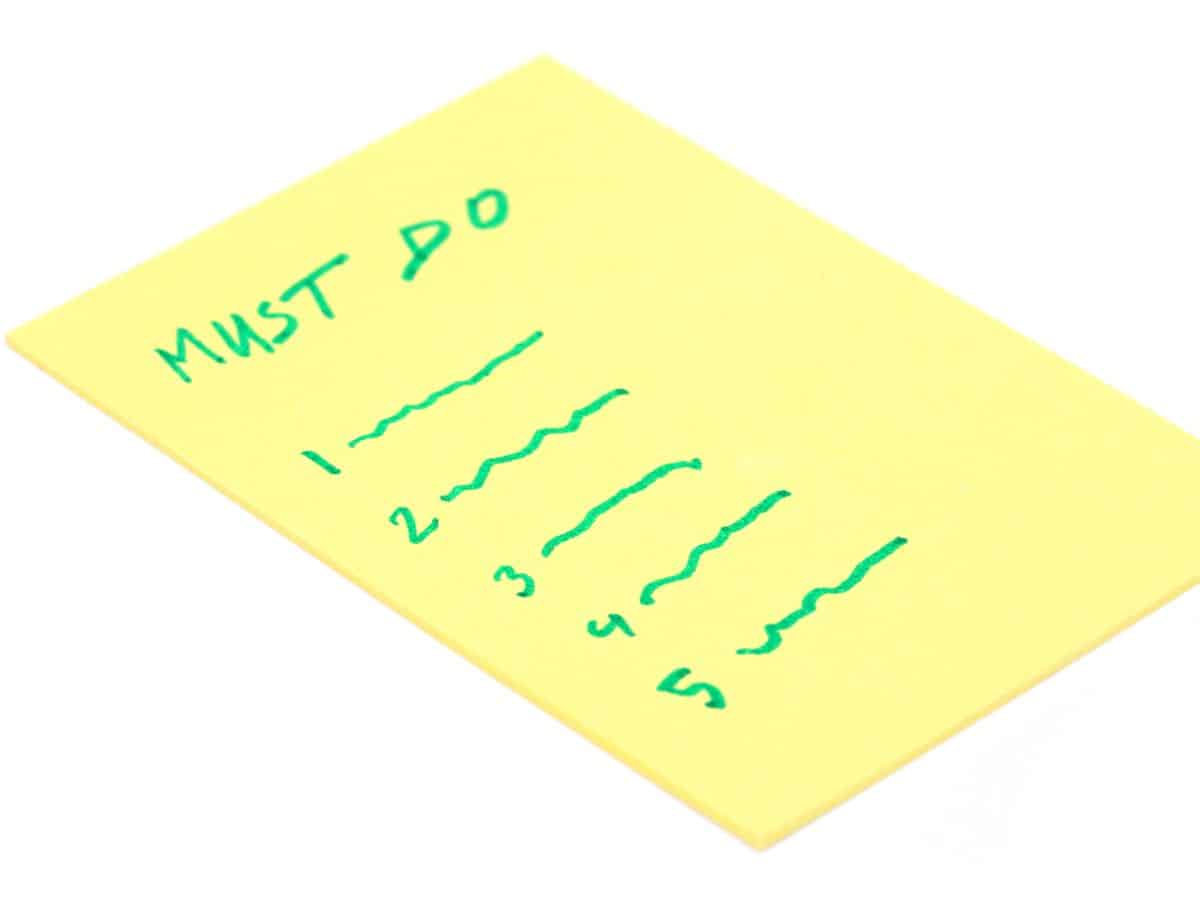
11. Have a “Must See” List
Even after you focus on the museums, exhibits, and artifacts that matter most to you, you likely still won’t have enough time to do and see it all. A little advanced planning will help ensure you don’t inadvertently overlook Julia Child’s kitchen in the Museum of American History or the America’s Presidents Gallery at the National Portrait Gallery.
Related Article: Spend an Hour with America’s Presidents at the National Portrait Gallery
12. Start at the Top
As you visit each Smithsonian Museum, consider starting on the top floor and working your way down. While it may sound like a salmon swimming upstream, this technique is a proven way of avoiding crowds.
13. Pack Lightly
For a fast, easy trip through museum security, try to limit your possessions to a small purse or similarly-sized bag. Any large backpack will be subject to additional search by security.
Sage Advice: Some Smithsonian Museums have lockers and check rooms available for coats, backpacks, shopping bags, and carry-on-sized luggage. As an alternative, check out Vertoe for a secure luggage storage option near the Smithsonian museum you wish to visit.
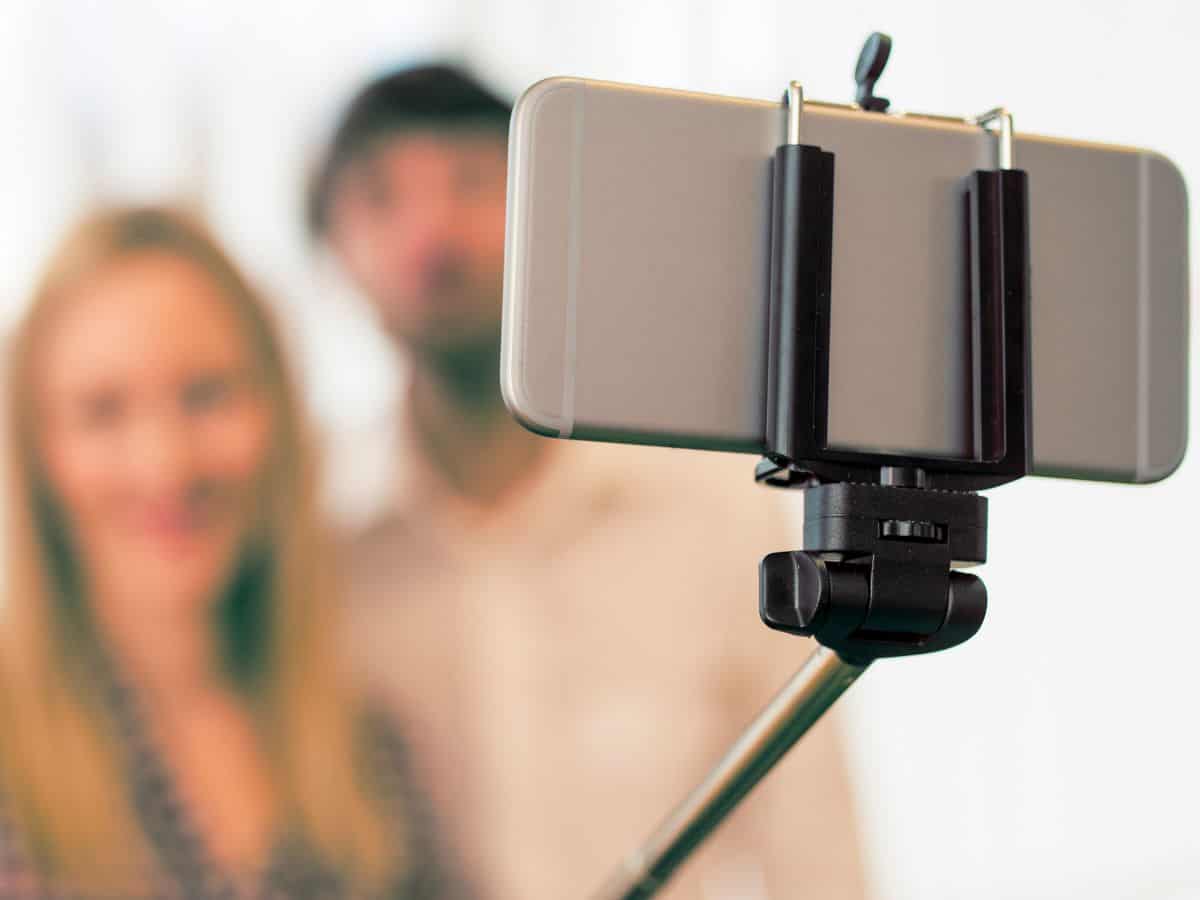
14. Leave Your Selfie Stick Behind
While non-flash photography is generally allowed, visitors may not bring tripods , monopods, or selfie sticks into the Smithsonian Museums.
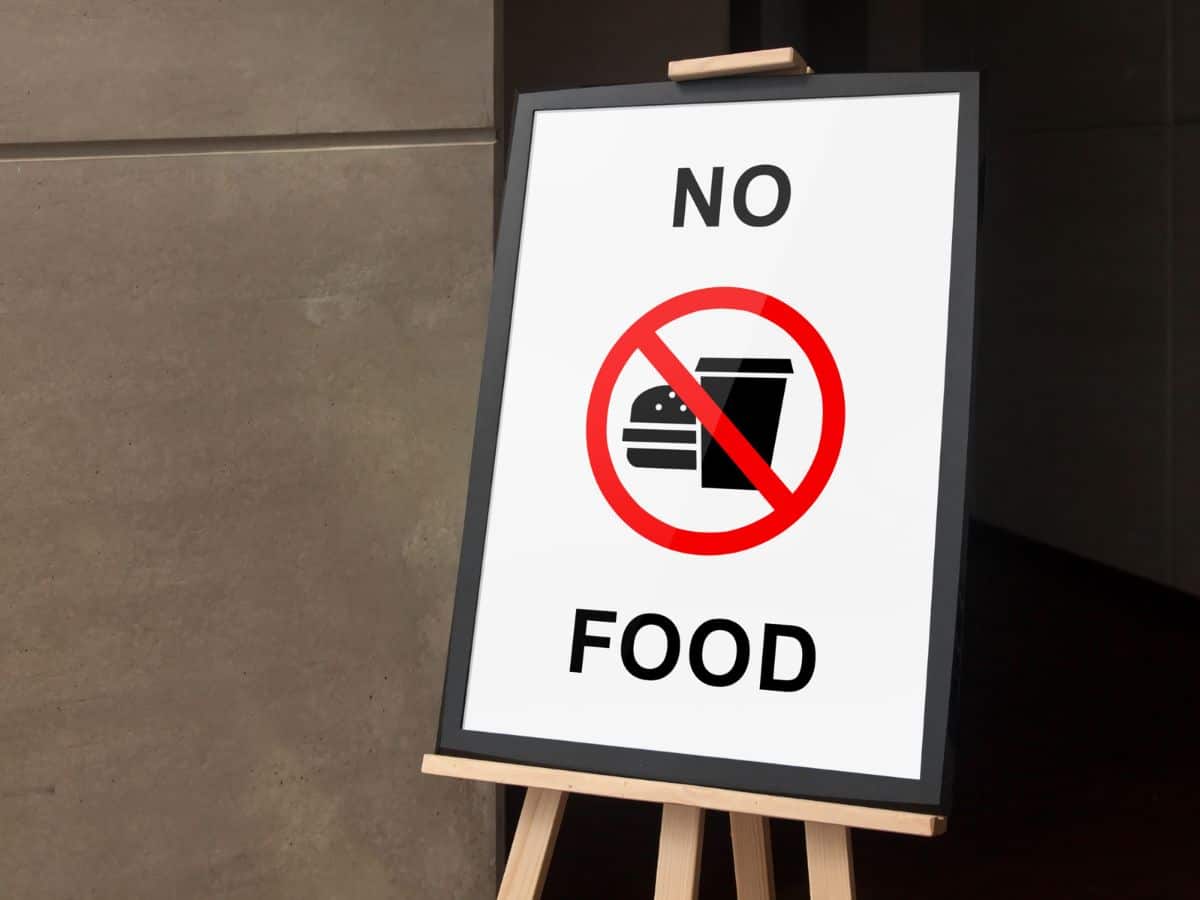
15. Can I Buy You a Drink?
Like any world-class museum, food and drink are not permitted in the Smithsonian museums. Sack lunches, water bottles , and snacks that are properly secured and stowed during your visit may be carried but not consumed except in designated areas. Remember that the cafes, cafeterias, coffee shops, and other dining facilities in the Smithsonian museums are for guests who have purchased an item there and not for food and drink brought in from the outside.
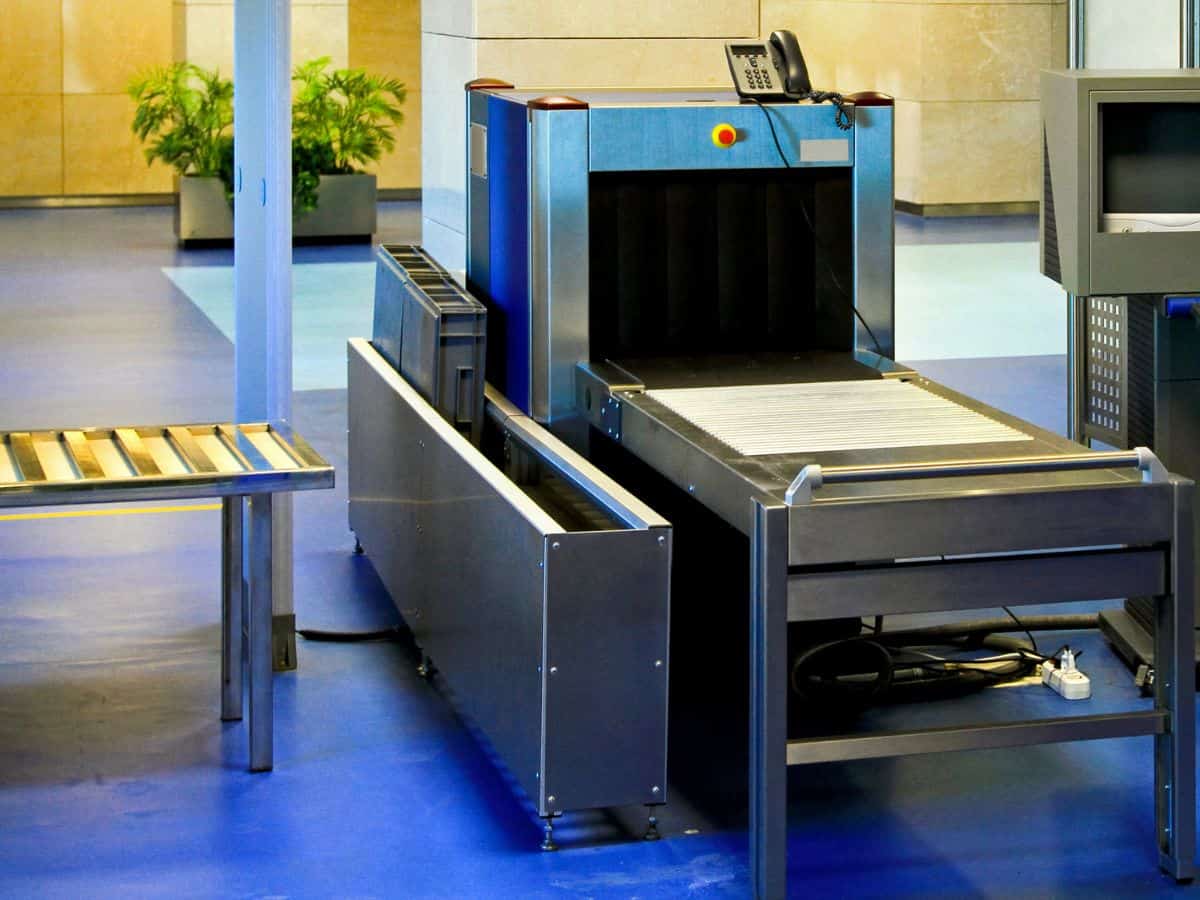
16. Step Lively
You’ll be expected to walk through a metal detector (or be hand-screened with an electronic wand) before entering nearly all Smithsonian museums. You should also expect to have your bag screened.
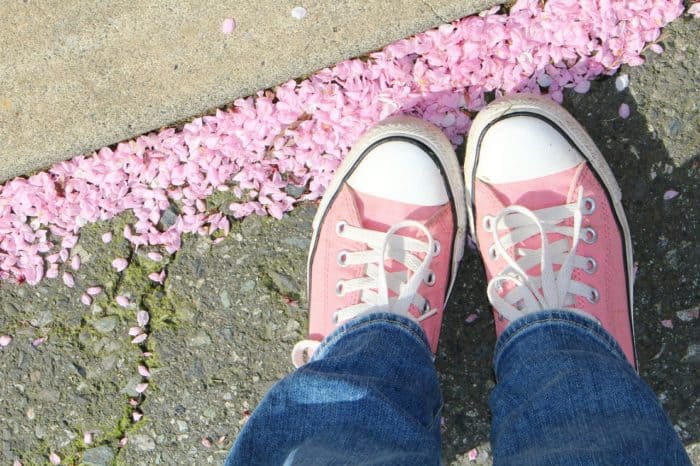
17. And Wear Comfortable Shoes
Of all the tips for visiting the Smithsonian museums, do not overlook the importance of wearing comfortable shoes ! Simply walking counter-clockwise from the Smithsonian Castle to the other Smithsonian museums located on the National Mall is a 2.5-mile undertaking. Add all of the miles you’ll walk exploring the exhibits, sculpture gardens, and other stops along the way, and you’ll likely walk a marathon.
Related Article: A Complete Guide to the Smithsonian Museums on the National Mall
18. Take a Load Off
Visitors of all ages and activity levels can easily tire from a day exploring the Smithsonian museums. Give your feet a rest by relaxing in the Enid A. Haupt Garden or the Hirshhorn Museum’s Sculpture Garden. Or, you can take in an IMAX movie at the Air and Space Museum.
If younger children will be visiting the Smithsonian museums with you, please note that strollers are allowed in all museums, and a limited number of strollers are available for rent at the Smithsonian National Zoo.
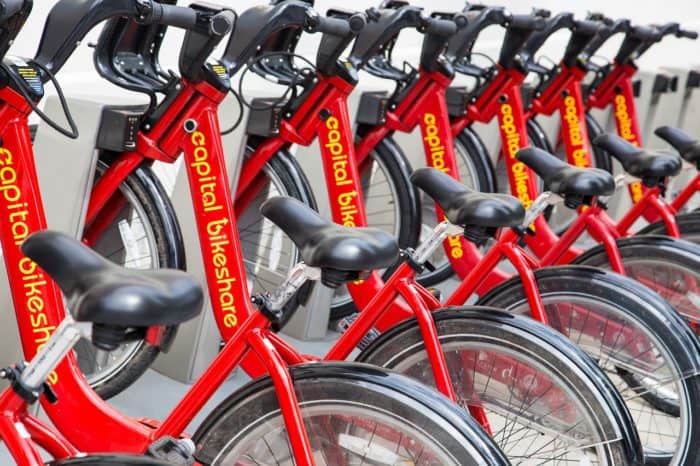
19. Biking Between Museums
To move between museums without wearing yourself out, consider biking. There are several places to rent a bicycle near the National Mall, and most Smithsonian museums have designated bicycle racks for secure storage while you explore the collections inside.
Related Article: 10 Essential Biking Rules Every Cyclist Should Know (Especially If You’re Renting a Bike to Explore)

20. A Brief Word About the First Amendment
Visitors are not allowed to carry placards, signs, or banners while on Smithsonian grounds. You are also forbidden from handing out ads, pamphlets, or flyers.
But there’s no ban on your favorite slogan t-shirt …
21. Use Your Inside Voice (and No Potty Mouth)
As with any museum, visitors are expected to use their inside voices and refrain from using abusive or obscene language.

22. Do You Have a Light?
Whether you answered that question “yes” or “no,” you won’t need it when visiting the Smithsonian museums because you are not able to smoke cigarettes, cigars, or pipes in any Smithsonian building. You are also forbidden from using electronic cigarettes, vape pens, and similar devices.

23. Have You Seen My _____?
This is one of the most important tips for visiting the Smithsonian museums if you fear you’ve lost an item. Each museum’s security office will hold lost and found items for 24 hours before moving them to a central lost and found office. You can reach the central lost and found office at 202.633.5630.
Frequently Asked Questions about the Smithsonian Museums
Where is the smithsonian museum.
The Smithsonian is a collection of world-class museums, galleries, gardens, and a zoo. The majority of Smithsonian sites surround the National Mall in Washington, DC. But there are additional museums in Washington, DC, and two museums in New York City.
How many Smithsonian museums are there?
By now you know that the Smithsonian is the world’s largest museum complex (and not just one museum). But how many Smithsonian museums are there? There are 23 distinct properties that make up the Smithsonian Institution including museums, gardens, and even a zoo!
How many Smithsonian museums are there in DC?
Here is a complete list of the Smithsonian museums in Washington DC:
- Anacostia Community Museum, 1901 Fort Place, SE, Washington, DC
- Arthur M. Sackler Gallery, 1050 Independence Ave., SW, Washington, DC
- Arts and Industries Building, 900 Jefferson Drive, SW, Washington, DC (temporarily closed)
- Freer Gallery of Art, Jefferson Drive and 12th St., SW, Washington, DC
- Hirshhorn Museum and Sculpture Garden, Independence Ave. at 7th St., SW, Washington, DC
- National Air and Space Museum, 655 Jefferson Drive, SW, Washington, DC (reopens October 14, 2022)
- National Air and Space Museum Steven F. Udvar-Hazy Center, 14390 Air and Space Museum Parkway, Chantilly, VA
- National Museum of African American History and Culture, 1400 Constitution Ave., NW, Washington, DC
- National Museum of African Art, 950 Independence Ave., SW, Washington, DC
- National Museum of American History, 1300 Constitution Ave., NW, Washington, DC
- National Museum of Natural History, 10th St. and Constitution Ave., NW, Washington, DC
- National Museum of the American Indian, 4th Street and Independence Ave., SW, Washington, DC
- National Portrait Gallery, 8th and G Streets, NW, Washington, DC
- National Postal Museum, 2 Massachusetts Ave., NE, Washington, DC
- National Zoo, 3001 Connecticut Ave., NW, Washington, DC
- Renwick Gallery of the Smithsonian American Art Museum, 1661 Pennsylvania Ave., NW, Washington, DC
- Smithsonian American Art Museum, 8th and G Streets, NW, Washington, DC
- Smithsonian Gardens: Enid A. Haupt Garden and Hirshhorn Sculpture Garden
- Smithsonian Institution Building (The Castle), 1000 Jefferson Drive, SW, Washington, DC
Which Smithsonian museum is the most popular?
Based on total visits in 2021, the National Museum of Natural History is the most popular Smithsonian museum. It’s followed by the National Zoo and National Museum of American History.
How big is the Smithsonian Museum of Natural History?
According to its published fact sheet, the National Museum of Natural History is 1.32 million square feet, with 325,000 square feet of public space and 146 million artifacts and specimens. About five million people visit in a typical year, eager to gaze at the impressive Hope Diamond, walk through the Butterfly Pavilion, examine fossils, and so much more!
When does the Smithsonian Air and Space Museum open?
The Air and Space Museum has been under renovation since 2018. It reopens on October 14, 2022, and free timed-entry passes are available starting September 14, 2022.
Are the Smithsonian museums free?
Yes! There is no cost to visit any of the Smithsonian museums in Washington, DC. However, some museums — like the National Museum of African American History and Culture — require you to reserve a free pass to visit.
Sage Advice: If you’re interested in visiting the Cooper Hewitt, Smithsonian Design Museum in New York City, it’s currently the only Smithsonian museum that charges admission.
Do you need tickets for Smithsonian museums?
In Washington, DC, free timed-entry passes are required to visit the National Museum of African American History and Culture and the National Zoo.
Are the Smithsonian museums open?
Most Smithsonian museums are open daily from 10:00 am to 5:30 pm, and all museums and the National Zoo are closed on Christmas Day, December 25th.
However, times vary by museum, and some buildings and exhibits can be temporarily closed for renovations, so be sure to confirm opening days and hours when you plan your visit.
Are Smithsonian museums open on Thanksgiving?
As a general rule, yes. The only day the Smithsonian museums are consistently closed all year is Christmas Day.
Are Smithsonian museums open on Memorial Day?
Yep! Just don’t plan to visit the Smithsonian museums on Christmas, and be sure to check the hours of the specific museum you want to visit before you go.
Share Your Smithsonian Museum Tips
What about you? Have you visited one or more of the Smithsonian Museums? What did you enjoy most about your experience? Do you have any additional tips for someone planning a trip to the Smithsonian museums to share in the comments section below?
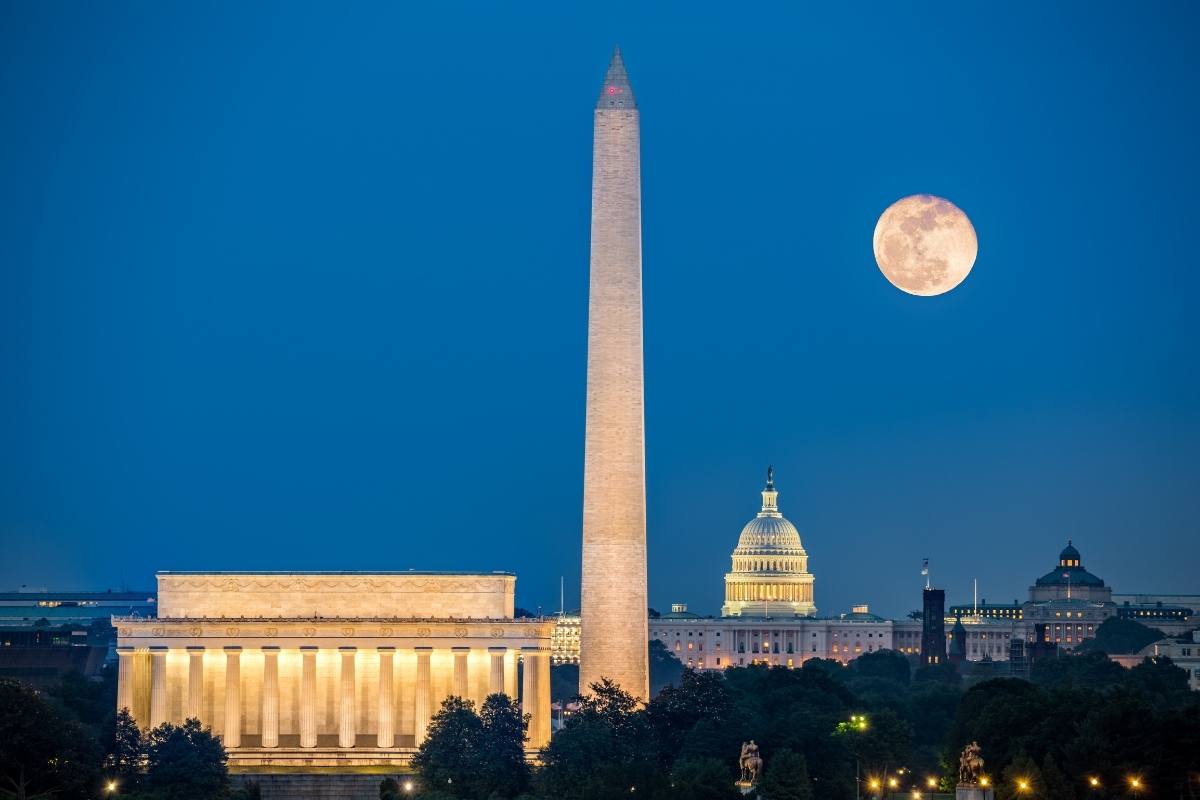
Looking for more information to plan your Washington DC vacation? Check out my additional recommendations to help you plan your trip to Washington, DC , including what to see and do in Washington DC, the best places to stay in Washington DC, where to eat in Washington DC, and more!
Ready to Go? Use These Helpful Links to Book Your Trip!
- Find low fares with airfarewatchdog and Skyscanner
- Book your plane ticket with Expedia or Kayak
- Or take the scenic route on an epic road trip in a rental car or an RV from Outdoorsy
- From hotels to private homes, find the perfect accommodation with Hotels.com or Vrbo
- Travel in style with a suitcase, carry-on, backpack, or handbag from eBags
- Save on tickets to attractions, sightseeing tours, and more with CityPASS , Tiqets , and Viator
- Don’t leave home without travel insurance from AXA
- Discover the sights, history, and culture of your destination with an interactive scavenger hunt
- Need something else to plan your perfect trip? Visit my travel resources page for more trusted partners. Happy wandering!
Thank you for sharing!
43 thoughts on “Visiting the Smithsonian Museum: 23 Helpful Tips”
Love this comprehensive guide muséums. 23 Smithsonian museums. I love the tip on going virtualcfirst, have a must-see lust, not forgetting the castle, zndcstarting from the top!
These are great tips for visiting one of the largest museum complexes. I will use them when visiting the Smithsonian Museum because it is on my bucket list. It’s a simple idea to download Smithsonian Mobile App to have access to maps, tours, and tips. I will also take a virtual tour before the real visit, as it seems like a perfect idea. For sure, I will prepare a “Must See” list.
Don’t miss James Smithson’s tomb just outside the north entrance of the Smithsonian Castle. After all, if it weren’t for James Smithson, there wouldn’t be a Smithsonian Institution. This is also the place to get a fantastic overview of the collections at each of the Smithsonian museums as well as chat with in-house experts to fine tune your Smithsonian plans.
Yes, I absolutely agree! It is pretty amazing that James Smithson’s estate was left to a new nation he’d never met. How lucky for us!
One visit at a Smithsonian Museum and your life will never be the same again. Thanks for putting together all these wonderful tips! Cheers, Elna
It’s truly a national treasure!
The Smithsonian museum complex looks amazing, it sure sounds like an incredible experience.
I had no idea that the entrance to these museums is free and it’s certainly good to know about the free timed entry ticket for the ones in D.C. These museums are a treasure trove of exhibits – definitely chalking out a must-see list in advance is a great idea.
I love downloading apps or listening to podcasts before I go to museums so that I can create a list of the things I know I really I want to see. But then leave the rest of the visit to chance and just wander around.
That’s a good strategy. When I take the time to do that (which isn’t 100% of the time), I find my experiences are so much richer! There’s nothing worse than getting home and reading about X or Y that you missed!
I’ve only been to the Smithsonian museums once, but they sure are awesome. And your list of tips is so helpful. It can be overwhelming to visit them, so your advice to see come prepared and focus on what interest you is perfect.
I’m glad you found it helpful!
Great tips on visiting the Smithsonian Museums! I like the idea of taking the load off and watching an IMAX movie or taking the rental bikes. Thanks for sharing!
This is a new fact for me. I didn’t know Smithsonian museum is the world’s largest. Thanks for sharing these incredibly handy tips.
An extensive source of information.
A thorough list on this iconic building which I am yet to visit. When I do, I will take up your suggestion on biking between the buildings. Great job with the suggestions. Enjoyed reading this.
i had heard of the Smithsonian museum complex but never visited. It looks and sounds like an incredible experience. May be if I ever get back to USA I will pay a visit.
Even just one day zipping through a few of the Smithsonian museums is a great experience when you visit Washington DC.
This is the one place that I wish I would have taken the time to visit during my short weekend in Washington, but I did not have enough time. I was actually looking at an online course from the Smithsonian just yesterday 🙂
They have a lot of great online content, virtual tours, and more. While it’s an amazing experience to visit in person, those digital options are a great plan b!
My Dad was in the military and we were stationed in Virginia on two different occasions for a couple of years. My family are big explorers so we hit every Smithsonian and I absolutely loved them. I have only been back to a few a quick side trip added to business trips for conferences and events there, but now since I moved to North Carolina, DC is six hours away and the perfect weekend trip – my hubby and I plan on hitting up these museums as my hubby has never been to any!
I’m also a military brat, and done of the absolute best perks is the chance to live and explore so many great places around the world. As you know, DC is FULL of great things to see and do, and I bet you and Monsieur Misadventures will have a blast!
The Smithsonian Museum is one of those world class places I’ve been to, have read about yet have never got to experience. I love old style museums, we are thankfully spoilt for world class museums in the UK, so it’s always nice to see others which are on a par with the quality we have here. But also, I had no idea there were so many Smithsonian Museums.
And us lucky Yanks… Did you know that Mr. Smithson (the namesake of the Smithsonian Institute) was actually an Englishman who directed that his estate be used to create a museum complex for a country he never visited?
These tips are great, Smithsonian Museum is on my and my daughter bucket list. I will pin your post for our future trip
I’m glad you found them helpful. You’re sure to enjoy the Smithsonian museums when you visit!
I feel so silly that for YEARS, I didn’t realize that “The Smithsonian” was actually several museums! I always thought it was just one massive museum. Fortunately, a visit to DC cleared that misconception right up! Thanks for the post!
LOTS of people make that mistake! I think in part it’s because folks talking about The Smithsonian Institution as a singular concept. Aren’t the museums full of amazing treasures?
Absolutely! We only had a few hours to spend checking them out, and of course it was nowhere near enough time!
Thanks for the thorough write up! These tips will be super helpful when i eventually visit DC, love the biking idea 🙂
In addition to the Smithsonian museums, bikes are a great way to see all of the monuments. Hope you enjoy your visit to DC!
I was not ready during our last visit to the Smithsonian. First we got there later than planned. Then it took us an hour to find parking. Then it fizzled from there. We went to 2 museums and missed the 2 that I really wanted to see. I wish I had your guide 4 months ago. Thank you for the info.
Oh, no, what a horrible experience! Although, my hat is off to you that you braved DC by car. Even when I lived there (back when the years started with a “1” and “uber” only meant something to Germans) I was a big fan of the Metro. The museums are really amazing, so I hope you’ll get another go at them! <3
Great post on an amazing landmark! I had no idea the museum were free. I especially liked your tip on downloading the app to find your way. Also the tip of making a “must see list” of most wanted attractions.
Thanks for stopping by! I’m glad you liked it!
This was a fun read and has so many useful tips!
Thanks! I’m glad you liked it.
Great tips. I had no idea that the only day the museums weren’t open were on Christmas. I can think a few holidays that would be great days to visit with light visitors. Love this.
I know! I wished I lived closer to be able to seize those same opportunities!
So, my family is from Northern Virginia, and over the Christmas holiday I went up to visit my mom and we were talking about how I hadn’t been to any of the Smithsonian Museums since I was like 12! Hey don’t make that wow face, I am not that old yet so it wasn’t that long ago, well maybe! Anyways, I told Darcee, the next time we go up I really want to go back to several of the museums so I love your tips on Visiting the Smithsonian Museums. For example: ~ I had no idea they were free! ~ I LOVE the idea of starting at the top and working my way backwards! Never would have thought to try that! ~ Using the Metro in the DC, Virginia, Maryland areas is actually very easy compared to driving; Parking plus it saves you tons of $$ ~ The Bike thing is genius if you are doing a couple of museums in a day! I don’t mind walking but they can be kind of spread out!
It is amazing how much museum goodness you get for no admission fee at the Smithsonian Institute!
Love these practical tips for making the most of a visit to the Smithsonian Museums! Starting at the visitors center is great insight.
Oh my gosh – these are such helpful tips! I went to the Smithsonian Museums when I was a child but would love to go back. Thanks for sharing 😉
Leave a Comment Cancel Reply
Your email address will not be published. Required fields are marked *
Get the latest articles delivered to you!
Thank You! You have successfully joined our subscrib er list.
MEET SAGE CONTACT US MEDIA KIT
DESTINATIONS
Travel interests.
ANIMAL ENCOUNTERS FOOD AND WINE GREAT OUTDOORS MUSEUMS AND MORE NATIONAL PARK SYSTEM ROADSIDE ATTRACTIONS SEASONAL TRAEL STREET ART TRAVEL PLANNING
TRAVEL RESOURCES
COMPANIES I USE TRAVEL GUIDES
LET'S CONNECT!

Disclosure Statement
To help offset the costs of running EverydayWanderer.com, you’ll find affiliate links lightly sprinkled throughout the site. If you choose to make a purchase via one of these links , there’s no additional cost to you, but I’ll earn a teeny tiny commission. You can read all of the legal blah blah blah (as my little niece says) on the full disclosure page .
Copyright © 2024 | Made with love in Kansas City by Sage Scott | Privacy Policy

Ultimate Guide To Visiting The Smithsonian Tips
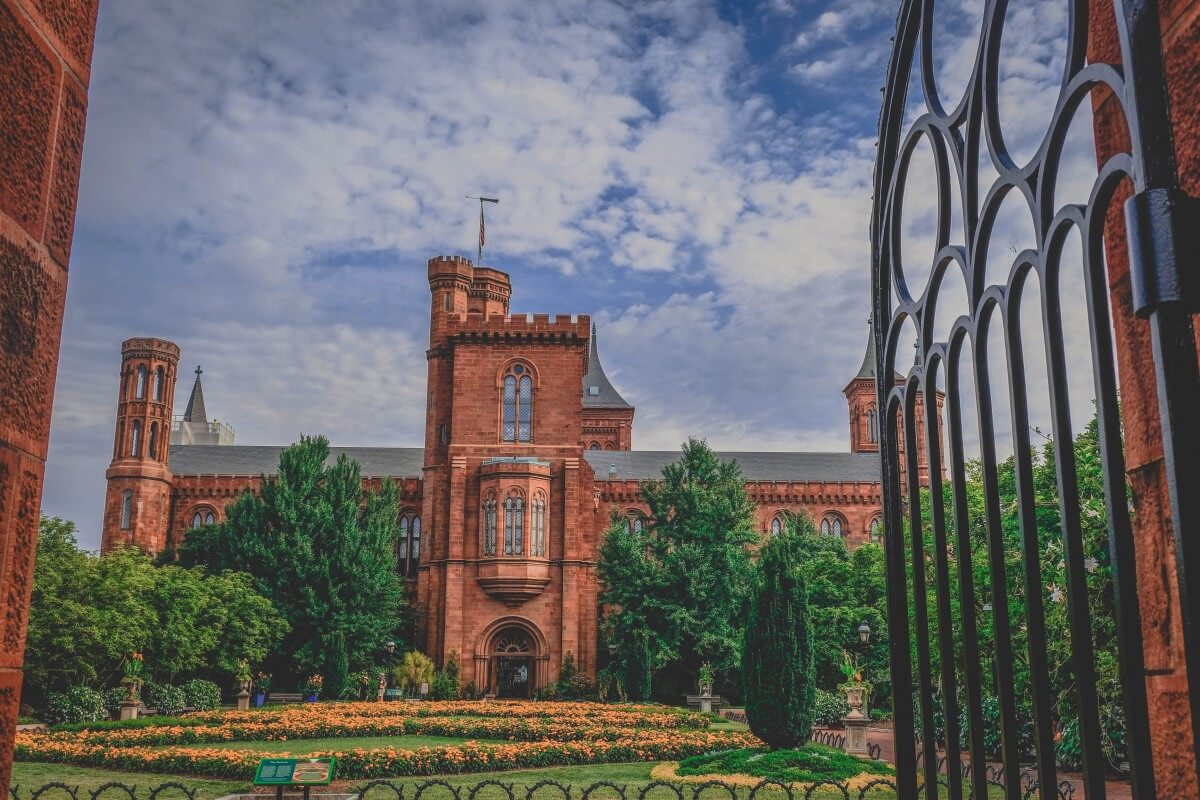
Growing up in Virginia, I ended up visiting the Smithsonian Institution a lot (like for every class trip, after-school trip, and weekend trip – y’all, Northern Virginia schools only have one go-to field trip idea).
I lived in a small(ish) town in NOVA , went to school roughly fifteen minutes from DC, and was a museum geek.
So (unsurprisingly) in elementary school and middle school, when my mum was done with work, we’d visit the Smithsonian together. And by the time high school rolled around, I practically lived at the Smithsonian ( I used to pretend to be a tour guide at the National Museum of Natural History – a cringe-worthy part of my life I’m trying to forget ).
But I hands-down love the Smithsonian Institution . Every time I go back, I immediately feel at home.
I’ve been to all twenty complexes, including the two in New York, and to every one of them at least a dozen or so times.
In this guide, I’m going to be spilling all my top tips for visiting the Smithsonian!
Table of Contents
Smithsonian Travel Guide
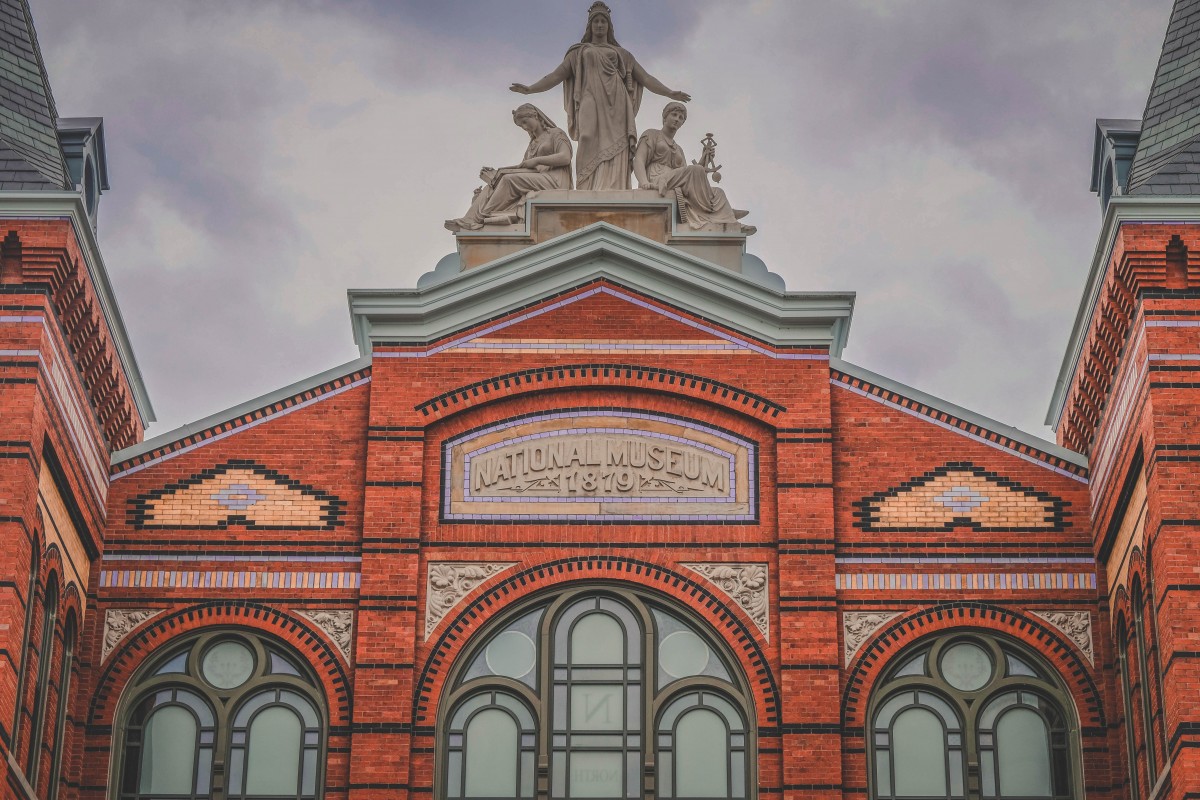
The Smithsonian Institution is a cluster of museums and research buildings on the East Coast.
Each year, roughly 28 million people visit the Smithsonian, making it one of the most popular cultural centers in the United States.
How Do You Get To The Smithsonian?

It’s really hard to find good parking near the Smithsonian ( especially for the museums by The Mall ).
Although D.C. follows an easy to understand grid system, driving in-and-around the city is not my favorite thing on the planet. Metered parking is expensive ( unless you are planning on visiting the Anacostia Community Museum ).
Parking at the National Zoo itself is $25 ( yikes )!
As a result, my favorite way to travel around D.C. is by metro.
You’ll need a metro pass ( which you can purchase at the station ). The metro stops by the main museums on the blue, green, orange, and yellow lines. I usually hop off the metro at the closest stop and walk from there.
Complete List Of Smithsonian Buildings
- African American Museum
- African Art Museum
- Air And Space Museum
- Air And Space Museums Udvar-Hazy ( Virginia )
American Art Museum
- American History Museum
American Indian Museum
- American Indian Museum Heye Center (New York)
- Anacostia Community Museum
- Archives Of American Art
- Cooper Hewitt ( New York )
Freer Gallery Of Art
- Hirshhorn Sculpture Garden
National Zoo
- Natural History Museum
- Portrait Gallery
- Postal Museum
- Renwick Gallery
- S. Dillon Ripley Center
- Sackler Gallery
- Smithsonian Castle & Gardens
Top 10 Smithsonian Museums To Visit
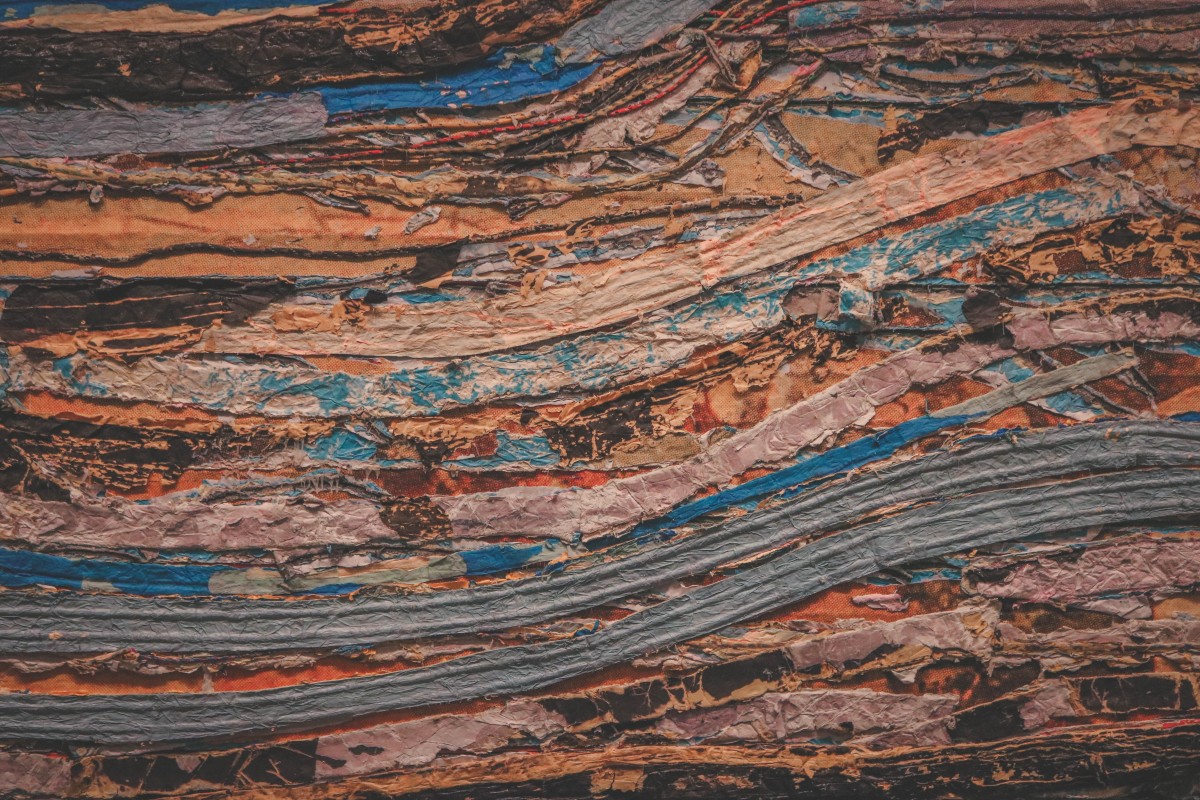
Over the years, I’ve definitely developed a soft spot for certain museums. Here are my personal favorites ( in no particular order ).
Smithsonian National Museum Of African Art
The African Art Museum is easy to miss. It’s right behind The Castle in a small square building topped by a blue dome. Inside is traditional African art – classic wooden statues that play on proportions, oil paintings that manipulate mood, vivid colored works cut to extravagant detail.
The museum is small so if you want a slower-paced visit ( where you don’t feel rushed to see everything ), this is one of my top picks!
National Museum Of Natural History
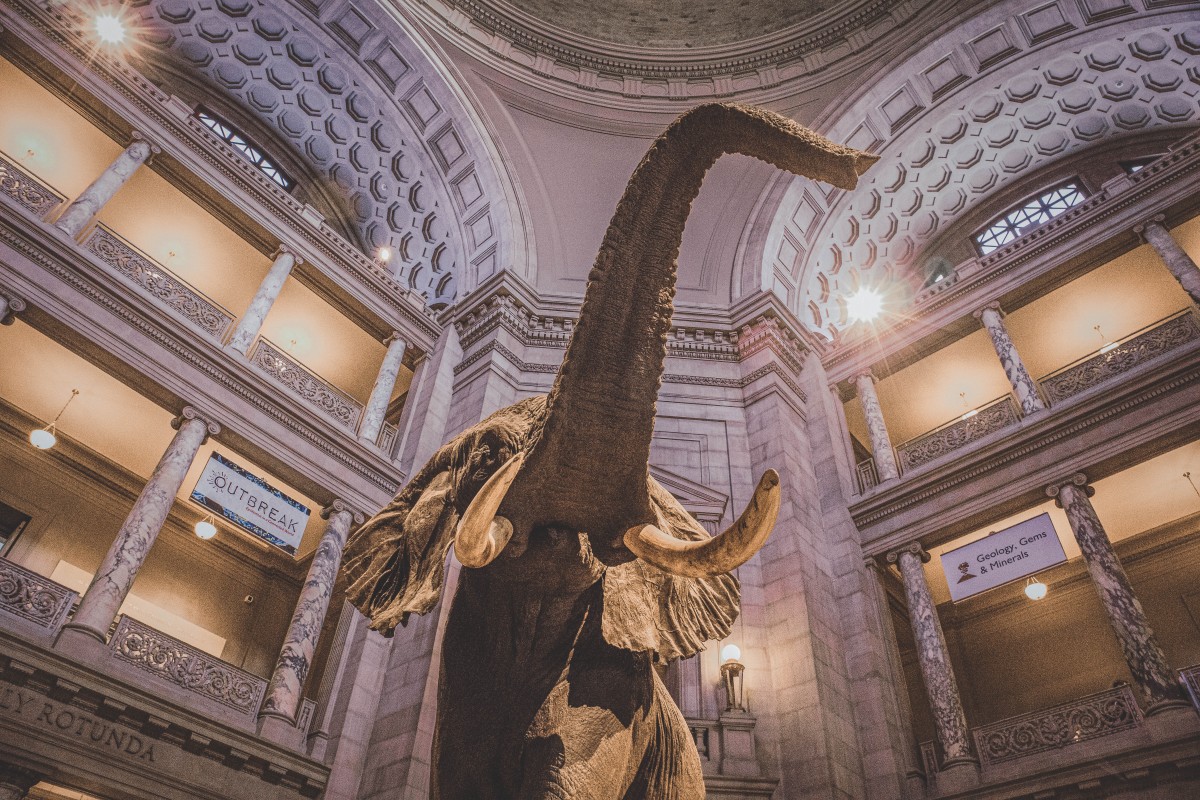
By far my favorite museum in the Smithsonian Collection is the National Museum of Natural History.
You’ll need an entire day ( or two ) to see this museum ( it is h-u-g-e ). And the exhibits vary from historic to art-focused to straight-up insect pavillions.
Travel Tip: You can take a virtual tour of the National Museum Of Natural History.
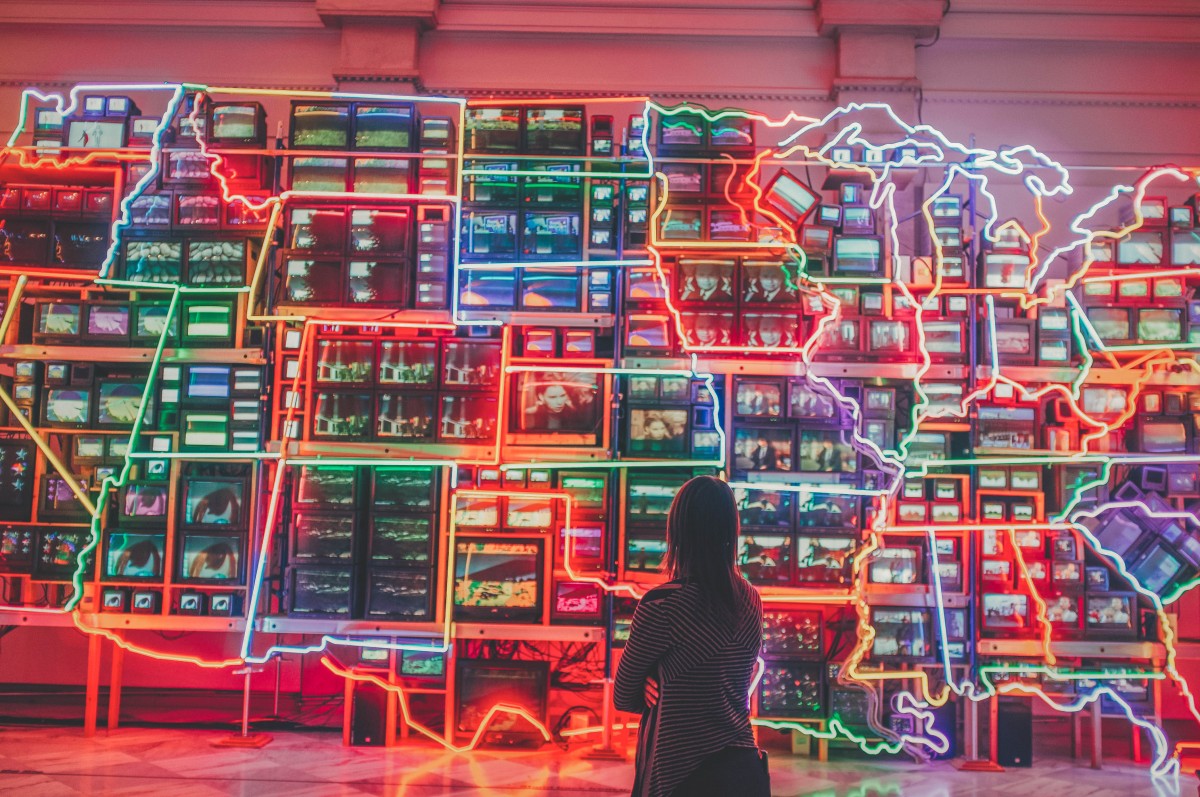
The interior of the American Art Museum feels like a time warp – extremely modern and charming at the same time.
Museums get a bad rap for being old, stuffy buildings, but the American Art Museum really slashes that stereotype. It’s incredibly photogenic .
P.S. One of my favorite oil paintings of all time, “Cape Cod Morning” by Edward Hopper is on the South Wing of the first floor. Despite the cheerful colors, it is stark and slightly broody, which is why I love it.
P.P.S. The National Portrait Gallery and American Art Museum are in the same building (so you can visit both whilst there).
My mum used to work five minutes ( by foot ) from the Freer Gallery Of Art so this is the Smithsonian Museum I ended up visiting the most ( so I’m a little biased when I say it is one of my favorites ).
Freer focuses on Asian Art . And the best exhibit ( though, they’re all good ) is the Peacock Room – an entire wall colored jade, shelves of bright vases, gold paneling.
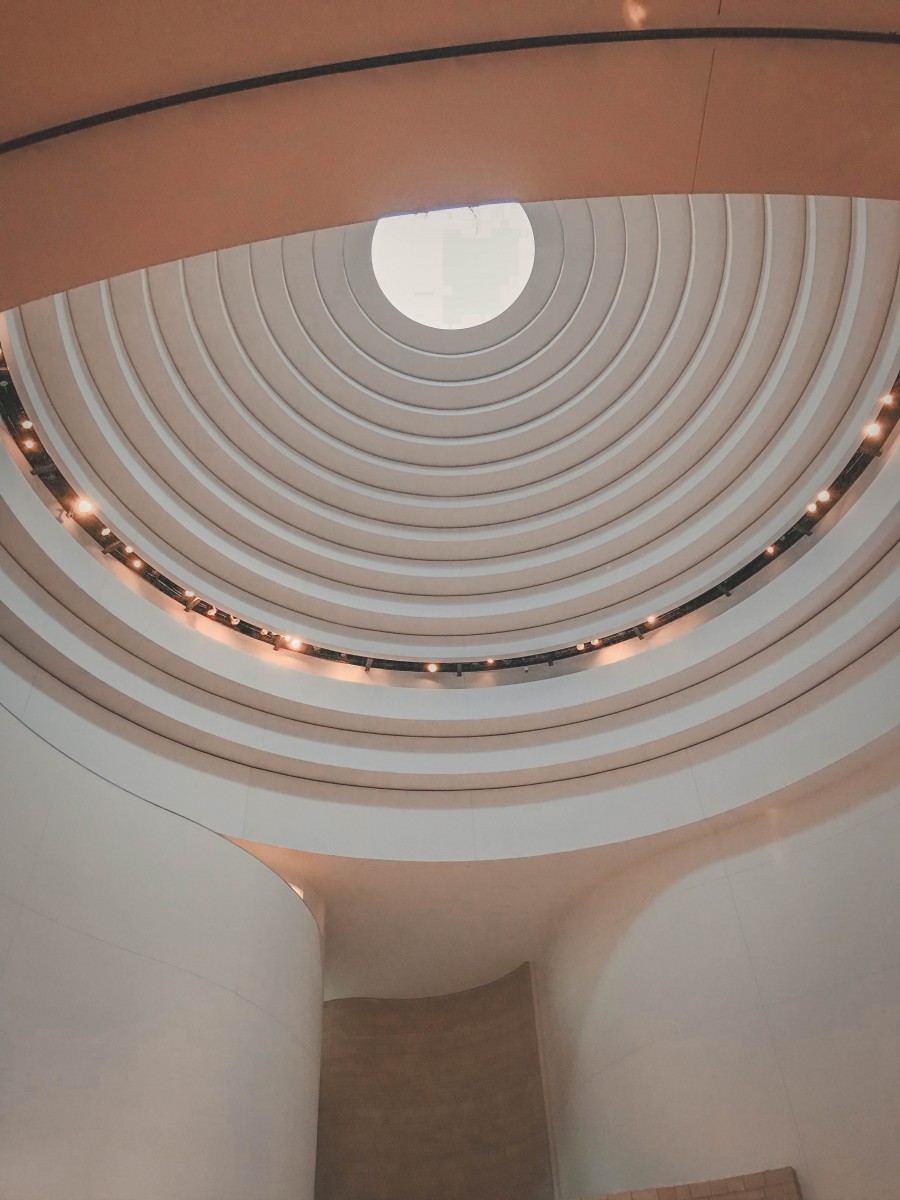
The American Indian Museum is my favorite museum architecturally . The building is beige and built to look like a ripple. The curved walls are layered like waves. It’s all-things modern, but the thin blocked windows are reminiscent of the distinctive Pueblo adobe-home style.
P.S. This museum has the best gift shop out of all the Smithsonian complexes ( the gift shop feels like an exhibit unto itself ).
American Museum Of National History
This is one of the lesser-visited Smithsonian Museums ( lots of tourists get it mixed up with the Natural History Museum and skip it, thinking they’ve already visited) .
The American Museum of National History is home to the star-spangled banner, but there are lots of other exhibits ( about everything from food during war times to women’s history stories ) that are worth seeing.
While I’ve stopped visiting zoos ( for environmental reasons ), I loved visiting the National Zoo as a kid ( so much so that it still warrants a mention ).
From the Cheetah Conservation Station to the Think Tank to Amazonia , there are so many animals here ( I actually wrote a book when I was eight based on what I observed at this zoo. It was just as terrible as you’d expect and I’m so incredibly grateful it remains unpublished, collecting dust in my parent’s house ).
National Museum Of African American History
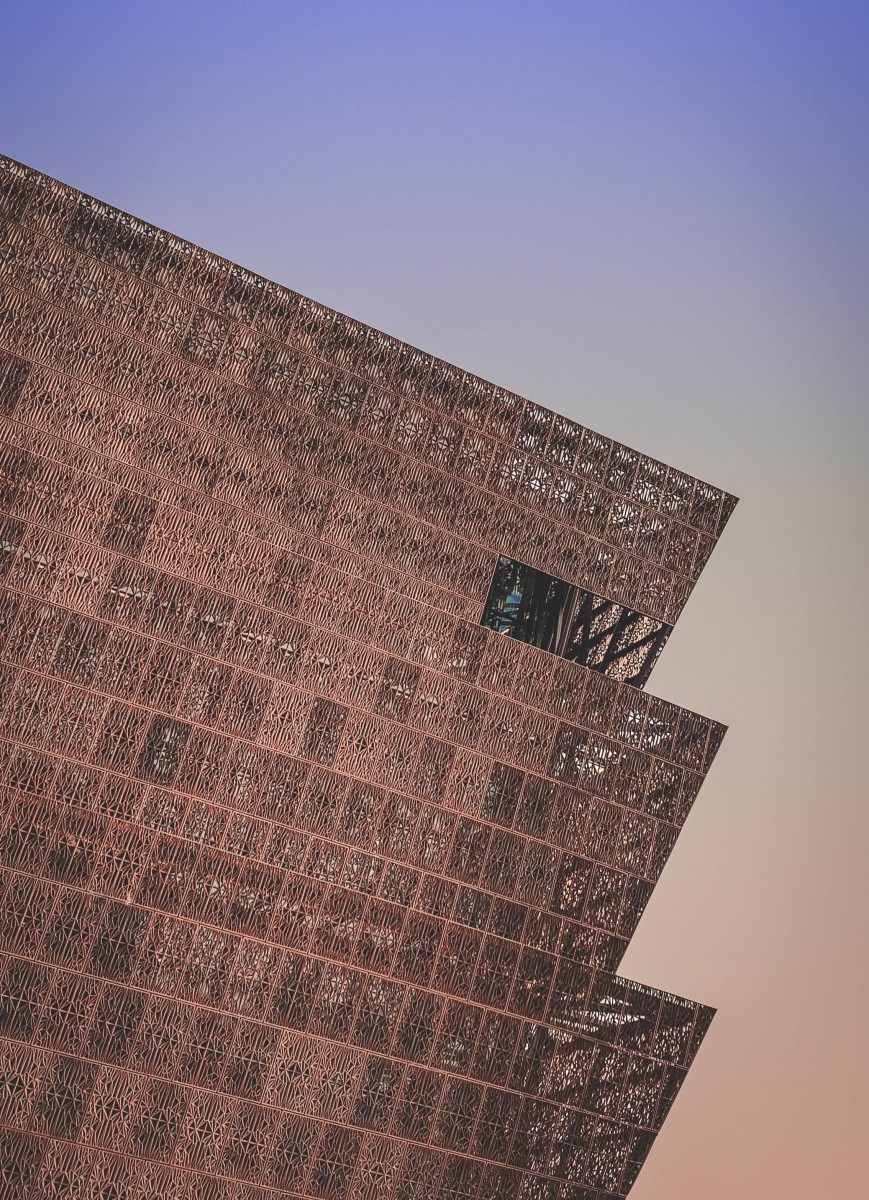
This museum was under construction while I lived in Virginia so I only got a chance to see it during my most recent trip to the Northeast ( a few days after visiting Philadelphia ).
And it’s now one of my favorites. To make the most of your visit, hit up the history exhibits first ( before heading to the L-level community galleries ).
10 Travel Tips For Visiting The Smithsonian
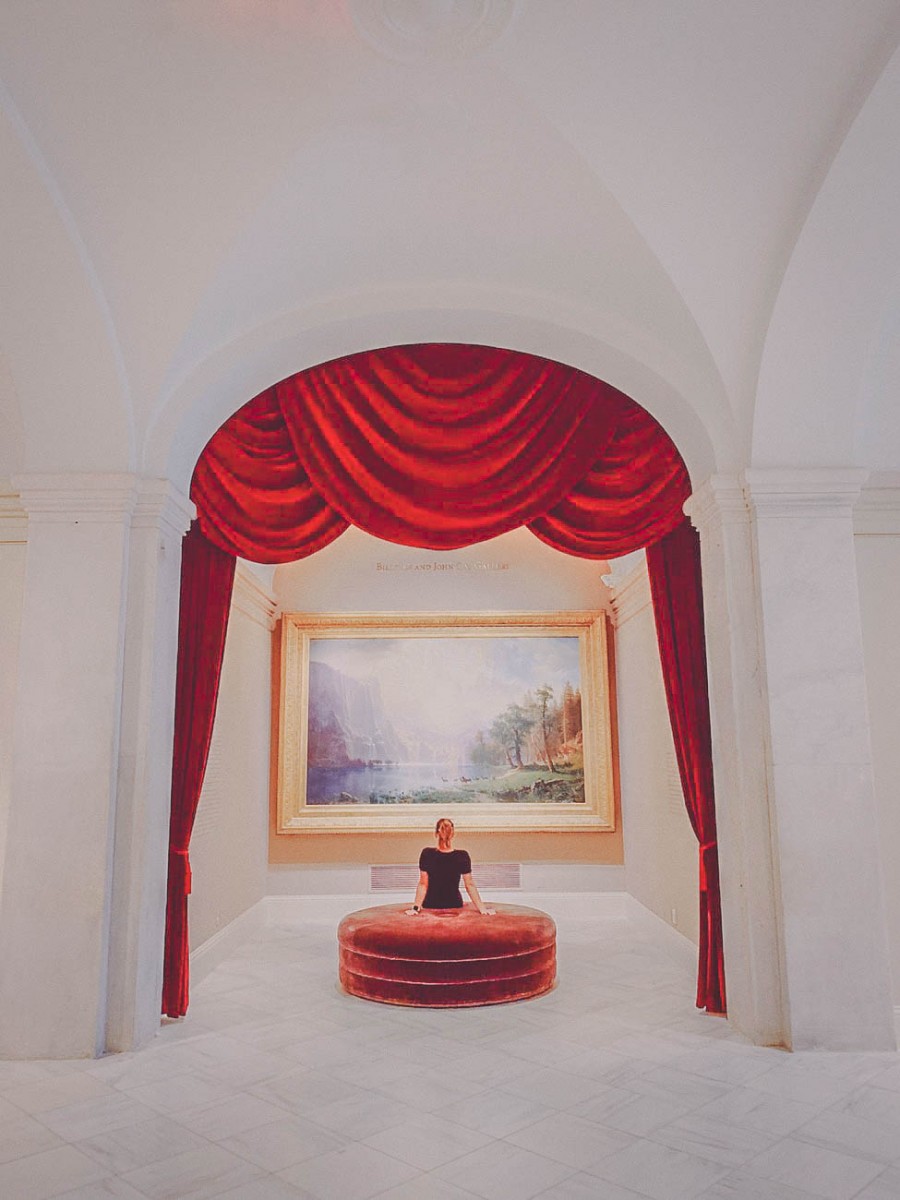
- Although you can’t bring food into the museums, you can bring bottled water ( which I highly recommend because the museums are gigantic and you’ll be walking a lot ).
- You’ll want to plan for a max of two museums a day ( just to take in the whole experience ).
- And you don’t have to visit every museum! Just visit the ones you are truly interested in ( it took me a full year to see them all as a quasi-local so if you only have a weekend, don’t stress out ).
- The Hope Diamond is the Natural History Museum’s premier display and it gets off-the-walls crowded ( so head there first, when the museum opens at 10 AM, then make your way around the rest of the floors ).
- The National Postal Museum is a bit further away so it gets very few visitors, but it’s also one of the coolest museums to visit if you love stamp collecting ( they sell gorgeous stamps in their gift shop too ).
- A few of the museums have IMAX theatres. With the exception of the Udvar Hazy Museum ( hint ), these get really crowded ( to guarantee good seats, try to select a documentary-style movie versus big-budget screenplay ).
- Street food right outside the museum is much cheaper ( and better ) than what’s served inside.
- The best time to visit is early in the week ( Mondays, Tuesdays ) in the fall, winter, or spring.
- Empty your pockets before the screening ( and try to pack light ) to streamline the security process.
- The National Gallery of Art has a gelato bar. You can thank me later ( just kidding. but seriously, I hope you enjoy it as much as I do ).
Did you find this guide to visiting the Smithsonian (plus Smithsonian tips) useful? Let me know your top Smithsonian tips for visiting the Smithsonian in the comments below!
Editor-In-Chief
Anshula grew up with a love of stories and places. Thirty-five states and 100 bookstores later, she's made her hobbit home in Middle Tennessee. Her Tookish side still takes over and leaves her chasing window seats, literary destinations, adventure books, sunrise coffee, and indie bookshops. She's appeared as a travel source on HuffPost, Reader's Digest, and MSN.
Related Posts
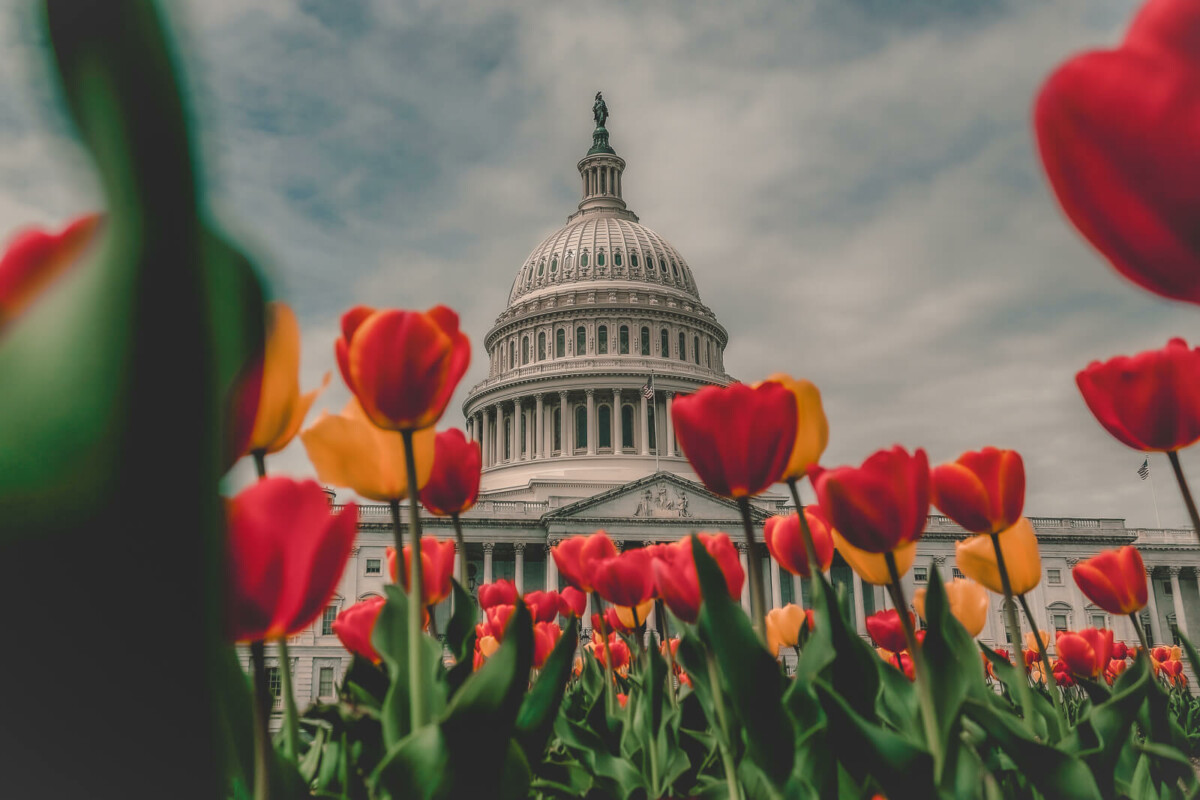
Best Time To Visit Washington DC (2024)
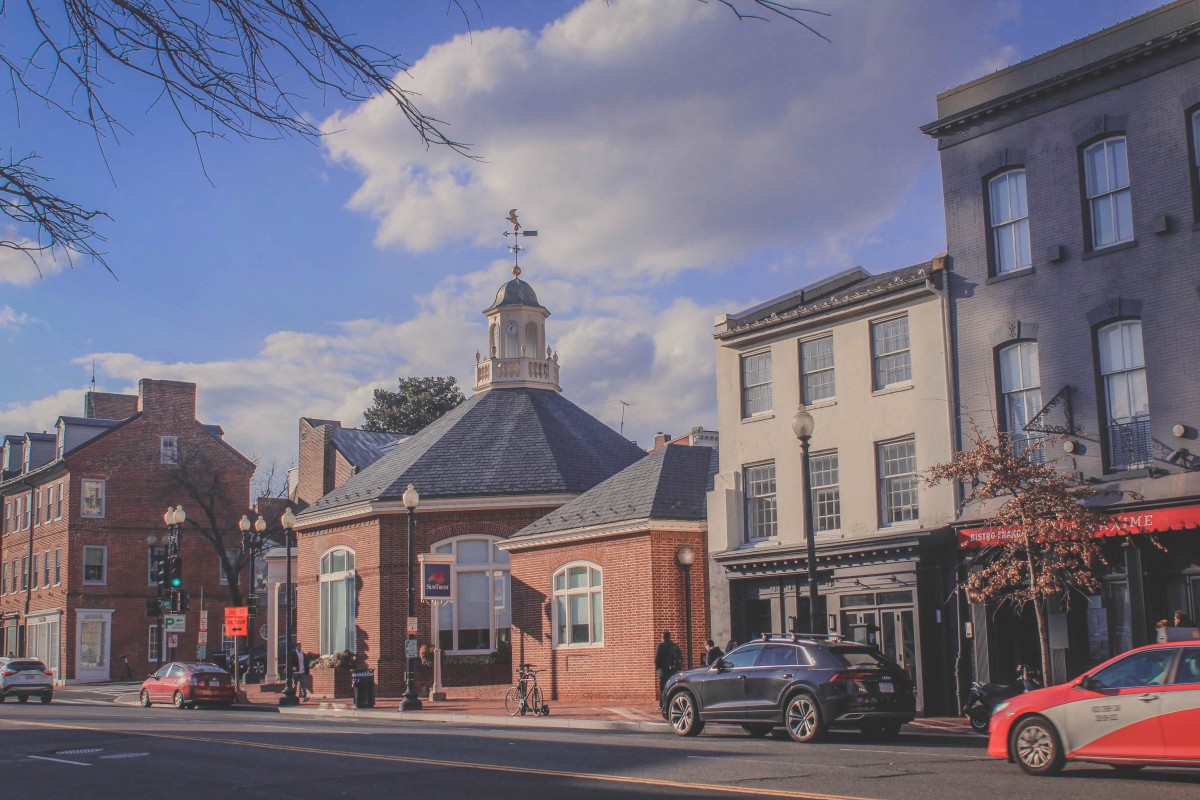
Top 10 Things To Do In Georgetown DC
35 comments.
Quite a tour. Thank you for sharing it.
Thank you! I’m glad you enjoyed it!
Awesome post! I haven’t gotten to the smithsonian yet, but will save this post for future-lots of good tips!
Thanks! I used to live near DC, so I ended up visiting quite a bit 🙂
Love this! I had no idea there were so many different parts of the Smithsonian.
Oh, yes! There are actually several other parts – the Postal Museum and the American History Museum, just to name two, but they never had a huge impact on me, so I left them out of the list.
This will be on my list of places to see now! Thanks for the tips 🙂
Yay! I’m so glad you found my guide to the Smithsonian useful 🙂
First of all, I love your writing! Very fun to read. And I went to the Smithsonian several years ago but didn’t have enough time to go through all the museums. I definitely want to go back!
Thank you so much! I’m excited to know that you’ve visited some of the museums as well! Which ones did you visit?
This is a great post! I live in the DC area and absolutely love going to the Smithsonian(s). This post is what I aspire to right about! Lovely writing voice, too! Subscribing. 🙂
Thank you! That means so much to me! What is your favourite Smithsonian institution? P.S. I think it’s amazing that Dave Grohl inspires you to write 🙂
Thank you! I think my favorite is a toss up between the Zoo and the Air & Space Museum. Both are so great, but so different!
Yes! My personal favourite is the Zoo, but I love the Air & Space Museum as well (it’s the most visited for a very good reason).
Hi Anshula! Love this post!I really like you pics of the beautiful flowers and national zoo.Very helpful guide and great tips.
Thank you so much! I’m glad that you found it helpful!
Great post! Bookmarking for future travels 🙂
Wow! I had no idea on the history. Fab tips Anshula 🙂
Thank you so much! The history is kind of swept under for the most part. No ones like to admit that Smithson pretty much just donated money to upset his father, but I’ve always found it fascinating.
I would love to get there soon! It’s been on my list for awhile now! Awesome info! This will definitely be useful whenever I go 🙂
Thank you so much! I’m so happy that you found my little guide useful 🙂
Great post! We love all things Smithsonian! It inspired my daughter so much that she has decided to become an archaeologists. On a side note: I’m totally jealous of those hydrangeas!
That’s amazing! PS: I wish I had Smithsonian-level hydrangeas too.
I’ve never been to the Smithsonian but I have always heard some incredible things. I’ll be sure to check it out the next time I’m in Washington!
The Smithsonian is wonderful! It is definitely a Washington bucket list item!
Love the infograph. Such a great idea. The botanical gardens look amazing! I could spend a day there!
I’m so glad you liked the infograph! The Botanical Gardens are indeed amazing (I’ve been there six times already and I still want to go back)!
Really great guide to the Smithsonian! Makes me really want to go! My favourite museum might be the ROM (Royal Ontario Museum). I went there when I was a kid, and I remember I loved it so much. It was huge and had so much in it!!
I’ve never been to the Royal Ontario Museum, but I just googled ROM and it looks architecturally astounding! That geometry is crazy! I’m definitely adding it to my bucket list!
i’ve always wanted to go! it’s on my list for soon.
You should go if you’re in D.C.! Visiting the Smithsonian is a great way to spend a day or two or three 😉 Every time I revisit, I manage to find something new.
Oh, we’ve spent only 4 days in Washington, D.C., but loved the Smithsonian so much! Te castle is so beautiful and we ended up spending 1,5 days of our 4 in the Natural History Museum alone. We have to go back one day, it’s so much to see there. And your pics about the botanical gardens are quite tempting… 😀
There is so much to cover in the Natural History Museum. I still don’t feel like I’ve covered it all (and this is coming from a girl who spent fourteen days there). Yes! Definitely see the botanical gardens the next time you go. Did you visit any other institutions on the other three days? What else did you see?
Haha, we believe you! We mostly visited the attractions of the National Mall during our stay in DC and honestly, we haven’t really planned to spend much time in any of the Smithsonian museums, but we just couldn’t resist the temptation in the end. But we did it right. 😀 We briefly visited the National Museum of American History, too, but that was really just a couple of hours before closure.
Leave a Reply Cancel reply
Your email address will not be published. Required fields are marked *
Notify me of new posts by email.
What are you looking for?

- Travel Guide
- Recommended Hotels
Smithsonian Museum Tips for Washington, DC Visitors
Smithsonian museums are a core part of the Washington, DC visitor experience. Get the most out of these by following our eight top Smithsonian museum tips.

1. Plan your Smithsonian visit in advance
There are so many Smithsonian museums and individual exhibits that it can feel overwhelming to navigate. It is really helpful to look at the websites for the Smithsonian museums in advance so that you can see what exhibits are going to be on display when you arrive. There are also smartphone apps for these museums that you can download and bookmark your favorite exhibits.
Another important Smithsonian museum tip is to check to see if you need a ticket for a particular museum or exhibit. Since it’s opening if you want to attend the National Museum of African American History and Culture you need a free timed ticket. Check out our blog post for specific details about getting one.
2. Don’t overdo it!
Since the Smithsonian museums in DC are completely free, visitors often try to cram in as many as they possibly can during their trip. This often leads to exhaustion. Think of it another way, if you went to a different city that didn’t have free museums, you wouldn’t go and buy a ticket to every single museum in town and then try to cram all of them in during your trip. You’d probably pick one, maybe two, of the museums that interest you the most and visit those. That’s the same strategy you should pursue in DC as well.
Smithsonian museums are free but they’re also huge, which means you’re going to do a lot of walking, which is physically draining. You’re also going to do a lot of reading, which is mentally draining. So, this is the reason for picking two or three museums for a one-week long trip or one to two museums for a weekend trip. And remember that while these museums are excellent educational opportunities, kids don’t have quite the same stamina or attention span as adults.
3. Go against the flow.
Because many of them are free, some Smithsonian museums can get very crowded. This is especially true for the big three museums: Air and Space , Natural History, and American History . These are some of the most visited museums in the entire world. You can use a few basic strategies to avoid the heaviest crowds. For example, if you’re visiting a museum when it first opens at 10:00 a.m. go straight to the exhibit that’s farthest away from the door. Most people naturally walk into a museum and then go straight to whatever exhibit is closest to them. You can go up in the elevator to say, the top floor, and start seeing the exhibits up there to get maybe an hour or two with fairly limited crowds.
4. Use the “back doors”
This is a Smithsonian museum tip that a lot of Washington DC locals have used for years. Most Smithsonian museums on the National Mall have two entrances. There is one facing the grassy park called the National Mall, and another facing either Independence or Constitution Avenues, depending on which side it’s on.
Tour buses only unload on the National Mall side and there is nothing worse than getting stuck behind a busload of 8th graders on a school field trip. Museum security is kind of like airport security where they will ruffle through your bag and make you walk through a metal detector. Going through the non-bus door doesn’t guarantee that you won’t have to wait in a line but it does reduce the risk that you’ll get stuck behind a huge group.
5. Leave the National Mall
Even though most Smithsonian museums in DC are located right on the National Mall, there are some other really great museums elsewhere in the city. A few blocks north of the Mall you’ll find the National Portrait Gallery and the Smithsonian’s American Art Museum , two different museums that share the same building. The Portrait Gallery is exactly what the name suggests, a museum of portraits, including the very popular Hall of Presidents .
Across the street from the White House on the north side of Pennsylvania Avenue you’ll find the Renwick Gallery , which is an art museum that focuses on crafts and other decorative art, and it hosts a lot of cool rotating exhibits.
A personal favorite of ours is the National Postal Museum which is located right next to Union Station. A lot of people take for granted as a mail is kind of bland, but the Postal Museum is a really interesting look at American history through the lens of the postal service. And if you’re a stamp collector you’re going to love it here. They have some of the most amazing stamp collections in the entire world. And one of our favorite Smithsonian museum tips is you can buy stamps at the gift store here 7 days per week,so you don’t have to make a special errand to one of our post offices.
6. Seek out Good Food
The National Mall is not known for having great food. But don’t despair! One of the best Smithsonian museum tips around is to eat at the “culture” museums.
Every museum is going to have a little cafe. They’re fine, you’ll get fed, but you also probably won’t have a very memorable meal. The exception to this is at the Smithsonian American Indian Museum , which is highly recommend if you’re in the area or if you can get a ticket, the Sweet Home Cafe at the African American History and Culture Museum. Both of these “culture” museums use food as a way to immerse visitors in the experience.
And unless there’s some sort of fast food connoisseur, don’t eat at the McDonald’s at the Air and Space Museum. Nobody wants to pay museum prices for the same Big Mac you can get anywhere else in the world.
7. Take advantage of Highlight Tours
A lot of the Smithsonian museums offer free highlight tours a few times every day. These are led by trained and knowledgeable tour guides. If you think you might be interested in a museum, but aren’t quite sure about some of the exhibits, a highlight tour is a great way to get an overview. The one downside is that since these are free tours the group sizes can get fairly large. But, do not let it deter you from taking one.
8. Take advantage of extended hours
Most Smithsonian museums close at 5:30 p.m. every day, but there are a few exceptions. The Portrait Gallery and American Art Museum are open until 7 p.m. every day. In the summer select museums offer extended hours and stay open for two extra hours until 7:30 p.m on selected dates during the summer. If you’re going to take advantage of one of these Smithsonian museum tips, it is extremely important that you check the extended hours calendar on the Smithsonian website. This is to make sure that you know which dates are having extended hours for which museums.
Coming to Washington DC and want us to show you around? Trip Hacks DC was founded by Rob, a veteran tour guide in the Nation’s Capital. Trip Hacks DC provides tips, tricks and travel hacks for planning your trip; and guided tours to show you around once you get here. Our tours are family and school group friendly and our guides specialize in the major Washington, DC sites. Click here to check out the upcoming tour options and to book your tour here today! Feel free to contact us if you have any tour questions.
Book a Tour!
Private Tour with Rob Monumental Trivia Tour Historic Georgetown School Group Tours
About Trip Hacks DC
Trip planning resources.
- The Ultimate Washington DC Travel Guide (2024)
- DC Airports: a Guide to Navigating DCA, IAD and BWI
- Hotels in DC: A Guide On Where to Stay
- The 5 Best Local Washington DC Tours
- Washington DC Trip Planning: Trip Hacks DC E-book
- Packing for Washington DC: What To Bring for Your Trip
Newest Podcast Episodes
- Podcast Ep.62 Unique Eats and Eateries of Washington DC
- Podcast Ep.61 Washington DC Transportation Guide for Visitors and Tourists
- Podcast Ep.60 Why Take Tours When You Visit Washington DC
- Podcast Ep.58 Tips for Attending Pro Sports in Washington DC
- Podcast Ep.57 Everything Visitors Should Know About Washington DC Cherry Blossoms
- Podcast Ep.56 Managing Your Washington DC Travel Expectations
- Podcast Ep.55 What to Expect for Washington DC Tourism in 2024
- Podcast Ep.54 Every Holiday in Washington DC
Proceed Booking
Already a member.
Username or E-mail
Forget Password?
Don't have an account? Create one.
Or continue as guest.

The Ultimate Guide to the Smithsonian Museums
“Can we visit the Smithsonian?” It’s a common question I get asked when people visit me from other states. But the Smithsonian isn’t just a single place that you can visit in a day! The Smithsonian Institution includes 21 museums plus the National Zoo making it the largest museum, education, and research complex in the world. Most of the museums are on the National Mall in Washington, DC plus two in New York City and one in Chantilly, VA. So, it’s going to require some time to visit everything! That said, the Smithsonian museums are a great way to spend any kind of day in the city. They are perfect for first-time tourists, locals, and escaping any kind of harsh weather.
If you are visiting DC or guiding out-of-town friends, remember that bucket list item to “visit the Smithsonian” might take a little more planning for someone who didn’t realize how big it is. This guide will break down the 21 museums and give you a sense of what you’ll see when you visit.
Visit the Smithsonian Museums on the National Mall
Smithsonian gardens.
- Independence Ave SW
- L’Enfant and Smithsonian
- Recommended time: 1 to 2 hours
- No tickets required
The Smithsonian Gardens are behind the Smithsonian Institution Building, affectionally referred to as The Castle. The Castle is a great place to start your trip as it is home to the Smithsonian Visitor Center. While you are there, make sure you take photos of The Castle and visit the garden in the back. You’ll find the Enid A. Haupt Garden, Moongate Garden, and Kathrine Dulin Folger Rose Garden. The gardens change with the seasons and make great backgrounds for photos year-round.
The gardens are walkable from 2 metro stops: Smithsonian & Federal Triangle (orange, blue, silver) and L’Enfant Plaza (green, yellow, orange, blue, silver). Open daily except Christmas.

National Museum of Natural History
- 10th Street and Constitution Ave NW
- Free ($8 for the Butterfly Pavillion)
- Smithsonian, Federal Triangle, Archives
- Recommended time: 2 to 4 hours
The National Museum of Natural History is one of the most recognizable of the Smithsonian museums due to the large African Elephant in the lobby. You’ll find larger-than-life exhibits, including the Hall of Fossils (lots of dinosaurs), Ocean Hall, and the Hall of Geology, Gems, and Minerals (including the Hope Diamond). Plus, don’t miss the smaller natural world with the Insect Zoo and Butterfly Pavilion.
This museum is great for all ages, but it is also a particularly good place to start if you are traveling with children. There is so much to see, and a lot of it is interactive. Because of the sheer size of many exhibits, it’s easy to keep short attention spans interested and fill an entire afternoon. At the same time, because the exhibits are fairly easy to pop in and out of, this museum is great if you have a short amount of time. For extra fun, check out the Butterfly Pavillion with live butterflies. It’s open Tuesday to Saturday, and tickets are $8/adult or free on Tuesday. Plan for 2-4 hours.
The Museum of Natural History is easily walkable from three metro stops: Smithsonian or Federal Triangle (orange, blue, silver) and Archives (green, yellow). Open daily except Christmas Day. Timed tickets are not required.

National Museum of American History
- 1300 Constitution Ave NW
- Recommended time: 1 to 4 hours
Many of the Smithsonian museums cover aspects of our country’s history, but the Museum of American History is a great place to start. This museum usually features a variety of rotating exhibits to cover as much history as possible throughout the year.
Ongoing exhibits include American Democracy, The First Ladies, Food: Transforming The American Table, and The Star Spangled Banner: The Flag that Inspired the National Anthem. The Museum of American History is great for all ages but might be better for kids and teens with some context for history through school. This is another large museum you can get lost in for hours or just hit a few highlights if you are short on time.
National Museums of African American History and Culture
- 1400 Constitution Ave NW
- Smithsonian, Federal Triangle
- Recommended time: 4 to 6 hours
- Tickets required
The Museum of African American History and Culture opened in 2016 and remains among the most popular Smithsonian museums. You can easily spend an entire day exploring this museum. Generally, the museum covers early American history on the lower flowers and works its way up to the present day. If you only have a few hours, I recommend selecting a few museum sections, including the two lower floors or the pop culture exhibits on the top floor. You’ll find everything covering slavery and freedom, sports, pop culture, visual arts, and more. The lower floors do a great job of winding you through the history, but this makes it difficult for a short trip. If you have less than 2 hours, save this museum for another day or just plan to visit a few exhibits on the upper floors.
Timed tickets are required to visit the Museum of African American History. They are available for groups up to 6 people 30 days in advance on a rolling basis. The museum is walkable from 2 metro stops: Smithsonian and Federal Triangle (orange, blue, silver). Open daily except Christmas.
National Museum of African Art
- 950 Independence Ave SW
The National Museum of African Art features both traditional and contemporary art representing the entire continent. Current ongoing exhibits include Currents: Water in African Art and Visionary: Viewpoints of Africa’s Arts. This is a great museum to stop at if you are short on time but want to see a museum during your time on the National Mall. Not only is the museum on the smaller side but it tends to be less crowded. Even if you only have an hour or so, you’ll have room to spend as much time as you’d like with each piece.
The museum is walkable from 2 metro stops: Smithsonian (orange, blue, silver) and L’Enfant Plaza (green, yellow, orange, blue, silver). Open daily except Christmas.
National Museum of Asian Art
- 1050 Independence Ave SW
The National Museum of Asian Art includes the Freer Gallery of Art and the Slacker Gallery. The art collections across both galleries include more than 45,000 objects from the present day, dating back to Neolithic times. You’ll find pieces from China, Japan, Korea, South and Southeast Asia, and the Islamic World. It is also home to the world’s largest collection of works by James McNeill Whistler. Walking tours are available at 1:00 pm from Thursday to Sunday.
This museum is also smaller than some of the other Smithsonian museums and can still be appreciated if you are short on time. Or pair it with the National Museum of African Art right next door for a longer day of art appreciation.
Hirshhorn Museum
- 7th Street and Independence Ave SW
- Recommended time: 1 to 3 hours
- Tickets required for select exhibits
The Hirshhorn Museum features modern and contemporary art. You can visit anytime, but some of the more popular temporary exhibits require timed passes. Always check the website before you go to see what is on display. Also, don’t miss the sculpture garden right outside the museum with sculpture and water features. You can also visit the notable cafe with coffee and small snacks.
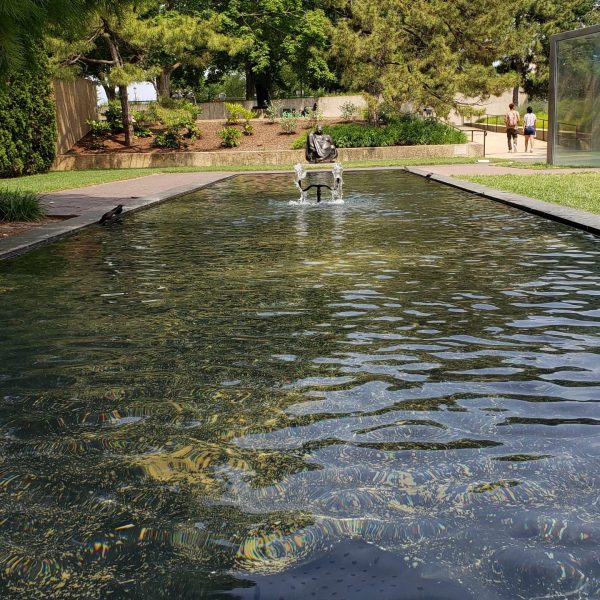
The Air and Space Museum
- 600 Independence Ave SW
- Free but there is an extra cost for the planetarium
The Air and Space Museum in Washington, DC, was recently renovated in 2022 and features a variety of exhibitions from The Wright Brothers, the first trip to the moon, and the exploration of other planets. This museum requires free timed passes to visit, released in 6-week blocks. While the exhibits at the museum are free, you may want to consider a planetarium show which is $9 per adult. (The planetarium is closed until March 10, 2024 for renovations.)
National Museums of the American Indian
- 4th Street SW
- L’Enfant, Smithsonian, Federal Center
- Recommended time: 2 to 3 hours
The National Museum of the American Indian is home to one of the most expansive collections of Native artifacts. Like the African American History Museum, this museum has a wide variety of exhibitions covering both the extensive history of the American Indians and their impact today. One of my favorite exhibits is the powerful Americans exhibit highlighting Native American images used in pop culture. Connecting rooms dive deeper into the truth behind 3 widely known but frequently misunderstood historical events including the story of Pocahontas, the Trail of Tears, and the Battle of Little Bighorn. The Mitsitam Cafe is known to have some of the most interesting options among the museum cafes on the National Mall. The menu is divided into different regions with dishes representing native tribes across the continent.
The museum is walkable from 2 metro stops: Smithsonian & Federal Triangle (orange, blue, silver) and L’Enfant Plaza (green, yellow, orange, blue, silver). Open daily except Christmas.
Renwick Gallery
- 1661 Pennsylvania Ave NW
- Farragut West and Farragut North
The Renwick Gallery is very close to the White House and is set a little farther away from the rest of the museums on the National Mall. This gallery is a branch of the American Art Museums that focuses primarily on contemporary art. It is on the smaller side but is highly visual with regularly rotating exhibits. Art lovers of all ages will find these exhibits fun and engaging.
Smithsonian Museums in Downtown DC
Portrait gallery.
- 8th Street and G Street NW
- Gallery Place – Chinatown
The Portrait Gallery is the only place you can see all the Presidential Portraits outside of the White House. Wandering through the progression of US Presidents not only highlights snapshots of American history but also highlights pop culture and art trends used to portray each one. Additionally, you’ll find paintings and photographs of notable people from various points in history. While portraits of early Americans are often limited to the wealthy and powerful, The Portrait Gallery is actively working to ensure all Americans’ stories are represented.
The Portrait Gallery is connected to the American Art Museum by a large covered courtyard. You can easily experience both in the same afternoon. Outside food is allowed, so you can grab a bite from a nearby restaurant to enjoy in the courtyard. The courtyard also has Wi-Fi and is a lovely place to spend a “work from home” day.
The museum is walkable to the Gallery Place – Chinatown metro stop (green, yellow, red). Open daily except Christmas.
The American Art Museum
The American Art Museum is home to one the largest and most inclusive collections of American art in the world. Collections include photography, paintings, sculpture, and more representing artists from a variety of backgrounds and cultures. Currently, you can see a special exhibit from self-taught American artists. Because it is located so close to the Portrait Gallery, visitors get to see both artistic interpretations of both the American people as well as American life and culture in the same afternoon.
Be sure to spend some time in the courtyard that connects the Portrait Gallery and the American Art Museum (mentioned above).
The museum is walkable from the Chinatown metro stop (green, yellow, red). Open daily except Christmas.
Smithsonian Museums Outside Downtown DC
Anacostia community museum.
- 1901 Fort Pl SE
The Anacostia Community Museum is a space in the Anacostia neighborhood that is committed to telling the overlooked stories of the city. Exhibits are meant to shed a positive light on the stories of people making the most impact toward creating a more equitable future for all. Highlighted issues include social, economic, and environmental opportunities for growth.
The museum is about a 30-minute walk from the Anacostia metro stop (green). Open daily except Christmas.

National Postal Museum
- 2 Massachusetts Ave NE
- Union Station
The National Postal Museum is committed to the preservation and study of postal history. Dive into postal history with a massive collection of stamps and a special look at baseball through the lens of postal history. Visitors can also learn about what happens once a letter is dropped in the mail and how letters, magazines, and packages have traveled for the past 200 years.
The museum is walkable from the Union Station metro stop (red). Open daily except Christmas.
Steven F. Udvar-Hazy Center
- 14390 Air and Space Museum Pkwy Chantilly, VA
- Free but parking is $15
- Parking on site
The Steven F. Udvar-Hazy Center is located outside the city in Chantilly, Virginia. It is an extension of the Air and Space Museum on the National Mall. The Udvar-Hazy Center is worth a trip for all aviation lovers to see bigger aircrafts including Space Shuttle Discovery. While the planetarium remains closed in DC, don’t miss the IMAX theatre at the Chantilly location. Shows include topics like the moon landing, deep sea exploration, and aircraft carrier history. The theatre also features special showings of popular mainstream movies.
The Udvar-Hazy Center is not metro accessible but has plenty of on-site parking. The museum is free like the rest of the Smithsonian museums but plan to pay $15/car. Open daily except Christmas.
National Zoo
- 3001 Connecticut Ave NW
- Free but bring money for snacks
- Cleveland Park and Woodley Park
- Recommended time: 2 to 5 hours
The National Zoo in Washington, DC is free but requires timed tickets to visit. In the warmer months, the best time to visit the zoo is in the morning before the animals get too hot. There are also many food stalls available and daily animal demos.
While many of the food stands are closed during the winter, the colder months are an under-rated time to visit. The zoo is not very crowded and you can warm up in a little of the indoor exhibits including the Small Mammal House and Reptile Discovery House.
The National Zoo is easily walkable in a day but sometimes feels like it’s uphill both ways. If you have small children, it’s important to keep their physical limits (and yours if you are pushing a stroller!) in mind.
While the zoo offers plenty of snacks, consider grabbing lunch nearby at restaurants like Duke’s Counter or Open City.
The National Zoo is walkable from 2 metro stops: Woodley Park and Cleveland Park (both red). Open daily except Christmas.
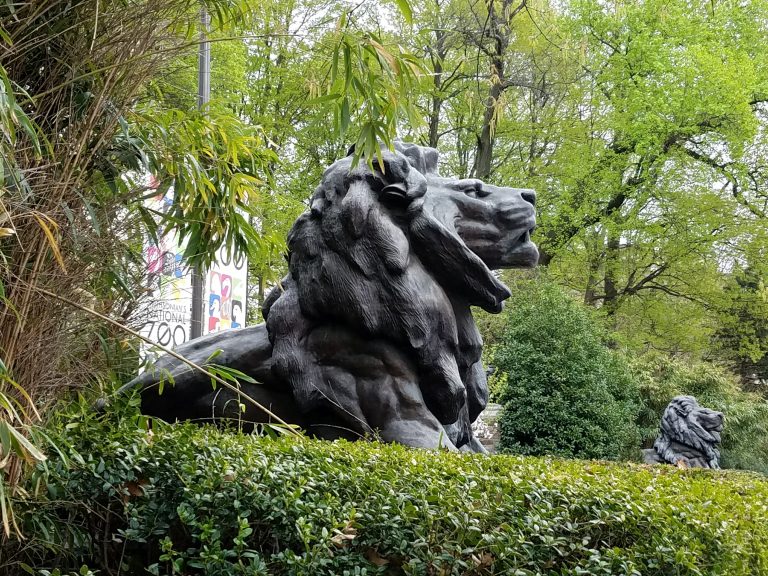
- Search Please fill out this field.
- Newsletters
- Destinations
- United States
- Washington, D.C.
- Things To Do
A Visitor's Guide to the Smithsonian Museums in Washington DC
A Guide to All of the Museums in Washington DC
:max_bytes(150000):strip_icc():format(webp)/Rachel-58092b055f9b58564c6639af.jpg)
The Smithsonian Museums in Washington, DC are world class attractions with a variety of exhibits ranging from a 3.5 billion-year-old fossil to the Apollo lunar landing module. Visitors enjoy examining more than 137 million objects, including many irreplaceable historic artifacts, works of art, scientific specimens and cultural exhibits. Admission to all of the Smithsonian museums is free. With 19 museums and galleries, there truly is something for everyone. Guided tours, hands-on activities and special programs are available. Although many of the museums are located within walking distance to each other on the National Mall, several of them are located in other parts of the city.
Following is a guide to help you plan your visit to the Smithsonian.
General Information
- Frequently Asked Questions
- A Map of the Smithsonian Museums
- 10 Things to Know About the Mall in Washington DC
Museums Located on the National Mall
- Smithsonian Institution Building - 1000 Jefferson Drive SW, Washington, D.C. The historic building, also known as the Castle, is a good place to start your tour of the museums. The Smithsonian Information Center is located here and you can find a map and schedule of events.
- Smithsonian Arts and Industries Building - 900 Jefferson Drive SW, Washington, DC. The original home of the National Museum is currently closed for renovations.
- Smithsonian National Air and Space Museum - Jefferson Drive, between 4 th Street and 7 th Street, SW, Washington, D.C. This impressive museum displays the largest collection of air and spacecraft in the world as well as smaller items like instruments, memorabilia, and clothing. Learn about the history, science, and technology of aviation and space flight.
- Smithsonian Hirshhorn Museum and Sculpture Garden - Independence Ave. and 7th St. SW, Washington, D.C. The modern and contemporary art exhibits include arts of traditional historical themes and collections addressing emotion, abstraction, politics, process, religion, and economics.
- Smithsonian Freer Gallery - 1050 Independence Ave. SW, Washington, D.C. The world-renowned collection highlights art from China, Japan, Korea, South, and Southeast Asia, and the Near East. Paintings, ceramics, manuscripts, and sculptures are among the favorites of this museum. The Eugene and Agnes E. Meyer Auditorium provides free programs relating to the collections of the Freer and Sackler galleries, including performances of Asian music and dance, films, lectures, chamber music, and dramatic presentations.
- Smithsonian Sackler Gallery - 1050 Independence Ave. SW, Washington, D.C. This unique building is connected underground to the Freer Gallery of Art. The Sackler collection includes Chinese bronzes, jades, paintings and lacquerware, ancient Near Eastern ceramics and metalware, and sculpture from Asia.
- Smithsonian National Museum of African Art - 950 Independence Ave. SW, Washington, D.C. The collection includes ancient as well as contemporary works from Africa. There are special events, storytelling, demonstrations and children’s programs.
- Smithsonian Natural History Museum - 10th St. and Constitution Ave. NW, Washington, D.C. At this family favorite museum, you will see a variety of artifacts including an 80-foot dinosaur skeleton, a life-size model of a blue whale, an enormous prehistoric white shark, and a 45-and-a-half karat jewel a known as the Hope Diamond. The Discovery Room is a great hands-on display for young children. Feel the skin of a crocodile, examine the jaws and teeth of different animals or try on clothes from around the globe.
- Smithsonian American History Museum - 12th to 14th Sts. NW, Washington, D.C. With more than 3 million artifacts of American history and culture, visitors learn about the nation's history from the War of Independence to the present day. At the heart of the museum, the Star-Spangled Banner—one of the most recognized symbols of the nation—has been given a new state-of-the-art gallery. New galleries such as the Jerome and Dorothy Lemelson Hall of Invention, presenting “Invention at Play,” join old favorites including “The American Presidency: A Glorious Burden” and “America on the Move.”
- Smithsonian National Museum of the American Indian - 4th St. and Independence Ave. SW, Washington, D.C. The newest museum on the National Mall in Washington, DC showcases Native American objects from ancient pre-Columbian civilizations through the 21st century. Multimedia presentations, live performances, and hands-on demonstrations will bring the Native American people’s history and culture to life.
- Smithsonian International Gallery - 1100 Jefferson Drive, SW Washington, D.C. Housed in the S. Dillon Ripley Center, this is the education and membership branch of the Smithsonian Associates and hosts a variety of traveling exhibits. The Smithsonian Discovery Theater and conference facilities are also located here.
- Smithsonian National Museum of African American History and Culture - Independence Ave. SW, Washington DC. The 300,000-square-foot museum is under construction and is expected to open in 2016. The museum has created a website to involve the public in planning a variety of exhibits and educational programs on topics such as slavery, post-Civil War reconstruction, the Harlem Renaissance, and the civil rights movement.
Don't miss the other Smithsonian Museums that are located off of the Mall:
- National Zoo - Rock Creek Park , Washington, DC. The National Zoo is a part of the Smithsonian Institution with more than 435 different species of animals. Open year-round, the world-class property offers the opportunity to view and learn about favorites including giant pandas, elephants, tigers, cheetahs, sea lions and much more. The Smithsonian Biology Conservation Institute , the Zoo's conservation, and research center, located in Front Royal, Virginia, is a breeding preserve for rare and endangered species.
- Smithsonian Anacostia Community Museum - 1901 Fort Place SE, Washington, DC. This small museum focuses on African American culture. Exhibits rotate and feature regional and national topics.
- Smithsonian National Postal Museum - 2 Massachusetts Ave. NE, Washington, DC. The museum displays the largest stamp collection in the world and examines the development of the postal system using interactive displays. This museum is located under Washington's old Main Post Office near Union Station.
- Smithsonian Renwick Gallery - 70 9th St. NW, Washington, DC. The building was the original site of the Corcoran Gallery and is furnished with American crafts and contemporary arts from the 19th to 21st centuries. The museum features unique works of art in an impressive setting across the street from the White House.
- National Portrait Gallery and the Smithsonian American Art Museum - 8th and F Streets NW., Washington, DC. This restored historic building in the Penn Quarter neighborhood of downtown Washington, DC, houses two museums in one building. The National Portrait Gallery presents six permanent exhibitions of nearly 20,000 works ranges from paintings and sculpture to photographs and drawings. The Smithsonian American Art Museum is the home of the largest collection of American art in the world including more than 41,000 artworks, spanning more than three centuries.
- Steven F. Udvar-Hazy Center - 14390 Air and Space Museum Pkwy, Chantilly, VA. The Smithsonian National Air and Space Museum opened a companion facility on the property of Washington Dulles International Airport to showcase additional aircraft, spacecraft, and other artifacts. The museum has an IMAX Theater , flight simulators, a museum store, guided tours, and educational programs.
Related Articles
More related articles.

- Ultimate Family-Friendly Guide to the Smithsonian: Unearthing DC’s Treasures
Sharing is caring!
Washington DC with Kids: The Ultimate Family-Friendly Guide to the Smithsonian
Embark on an unforgettable family vacation to Washington DC with my expert guidance tailored specifically for families. As you plan your trip, navigating through the vast array of attractions can feel overwhelming, but fear not! With my insider knowledge and experience, I’ll lead you through the maze of museums, galleries, and hidden gems that the capital city has to offer.
Prepare to delve into the captivating world of the Smithsonian museums, where history, culture, and science come alive through interactive exhibits and engaging displays. From the National Museum of American History to the National Air and Space Museum, each venue promises a wealth of educational opportunities and immersive experiences for visitors of all ages.
But the adventure doesn’t stop there! I’ll also reveal lesser-known treasures and off-the-beaten-path attractions that are perfect for families seeking unique and memorable experiences. Whether it’s exploring the vibrant neighborhoods of DC, indulging in delicious cuisine, or embarking on outdoor adventures in the city’s parks and gardens, there’s something for everyone to enjoy.
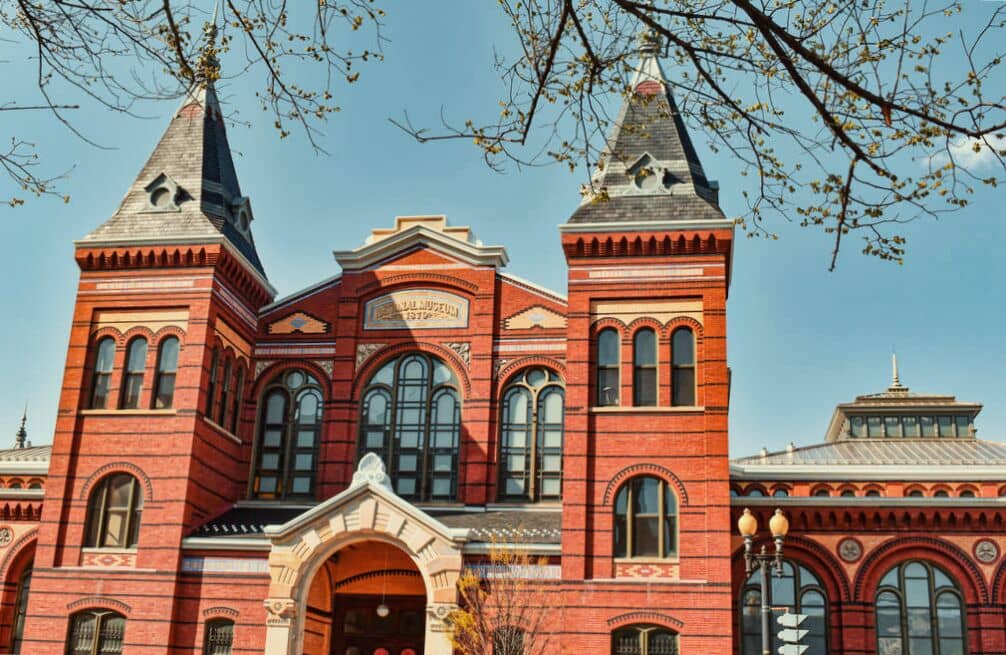
And to ensure your family getaway is truly perfect, I’ll share exclusive tips and tricks on how to plan and optimize your itinerary, including advice on accommodations, transportation, and budgeting. With my guidance, you’ll be able to create cherished memories and make the most of your time in the nation’s capital.
So, if you’re ready for an adventure-filled journey that’s tailored to the interests and needs of your family, join me as we uncover the wonders of Washington DC together. Let’s turn your dream vacation into a reality!
Family-Friendly Guide to the Smithsonian: Unforgettable DC Adventure
Unearthing the smithsonian’s treasures.
Washington DC is often synonymous with the Smithsonian, but it’s not just one museum—it’s a treasure trove of 19 museums, a zoo, and enchanting gardens , all scattered across the vibrant city. As a family-focused travel agent, I understand the importance of engaging experiences for all ages, and the Smithsonian delivers just that.
Let’s dive deeper into the Smithsonian’s wonders, highlighting some must-visit museums and attractions tailored for families.
National Museum of American History
Step back in time and immerse yourself in the rich tapestry of American history at the National Museum of American History. Marvel at iconic artifacts such as the First Ladies’ Inaugural Gowns, which provide a glimpse into the elegance and prestige of past presidential inaugurations.
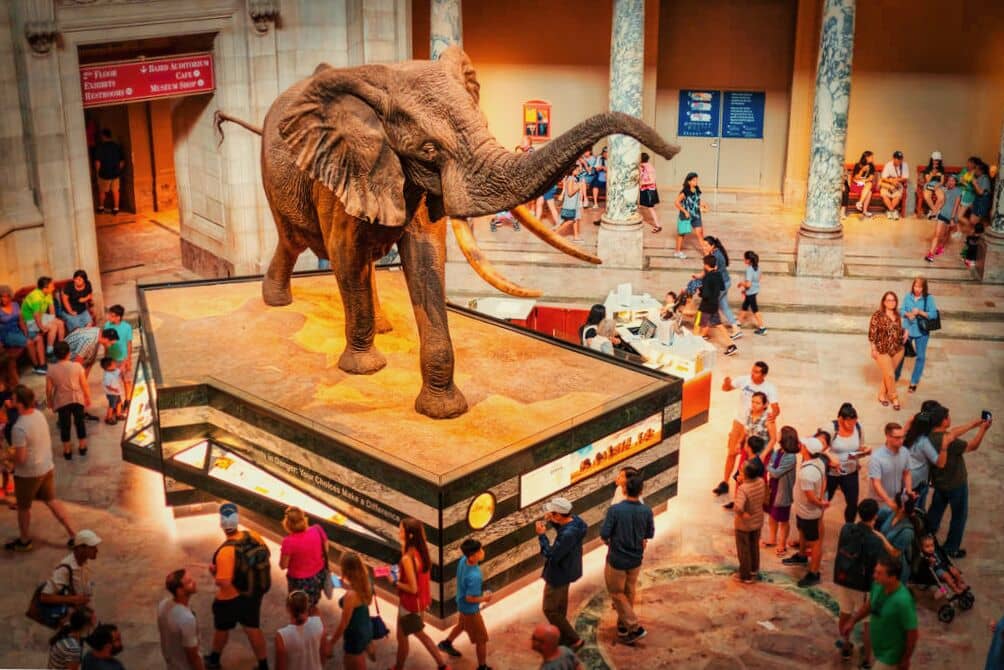
Be captivated by the sight of the Star-Spangled Banner, the flag that inspired Francis Scott Key to pen the words of the US national anthem. Through these exhibits and more, visitors of all ages can embark on a journey through the pivotal moments and defining moments of American history.
National Museum of Natural History
Prepare for a journey of discovery and wonder at the National Museum of Natural History. Here, you’ll encounter awe-inspiring exhibits that bring the wonders of the natural world to life.
Delight in the sight of towering dinosaur skeletons, marvel at the brilliance of the Hope diamond, and unravel the mysteries of ancient civilizations through exhibits featuring Egyptian mummies. Dive into the Hall of Human Origins, where the story of human evolution unfolds before your eyes, sparking curiosity and fostering a deeper understanding of our place in the natural world.
National Air and Space Museum
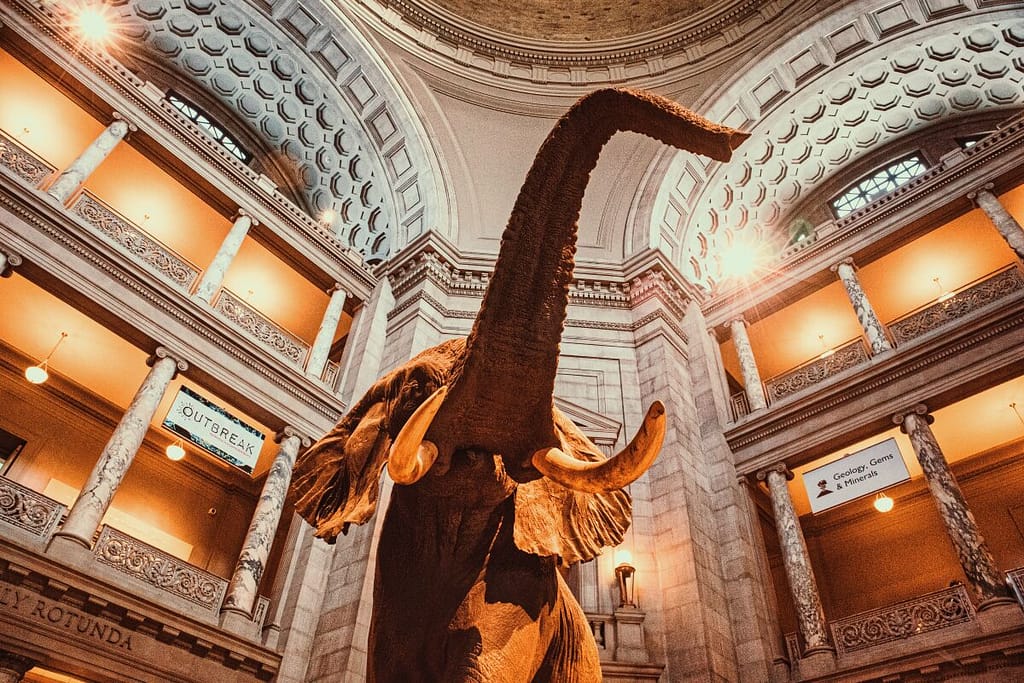
Embark on a thrilling adventure through the skies and beyond at the National Air and Space Museum. Delve into the fascinating world of aviation and space exploration as you explore exhibits showcasing historic aircraft, spacecraft, and artifacts. Experience the thrill of flight firsthand in the museum’s planetarium, where immersive shows transport you to distant galaxies and celestial wonders.
Then, journey to the stars in the museum’s IMAX theater, where larger-than-life films take you on exhilarating journeys through space. Whether you’re a budding astronaut or a seasoned aviation enthusiast, there’s something for everyone to enjoy at the National Air and Space Museum.
National Museum of the American Indian
Gain a deeper appreciation for the rich tapestry of Native American cultures and traditions at the National Museum of the American Indian. Here, visitors can explore exhibits that celebrate the resilience, creativity, and diversity of indigenous peoples across the Americas. Discover the spirit of Native American artistry through stunning displays of traditional crafts, textiles, and pottery.

Gain insight into the deep connection between Native communities and the natural world through exhibits exploring traditional lifeways, spirituality, and environmental stewardship. Through immersive exhibits and engaging programming, the museum offers visitors a unique opportunity to learn, reflect, and celebrate the enduring legacy of Native American heritage.
National Postal Museum
Journey through the fascinating history of communication at the National Postal Museum, housed within the beautifully restored Union Station. Explore exhibits that trace the evolution of postal systems from ancient times to the present day, showcasing rare stamps, postal artifacts, and historic vehicles. Marvel at the intricacy of postage stamps from around the world, and learn about the pivotal role of the postal service in shaping American history and culture.
Discover the stories of postal workers who braved harsh conditions to deliver mail to remote corners of the country, and gain a new appreciation for the ingenuity and dedication of those who have kept the mail moving throughout history.
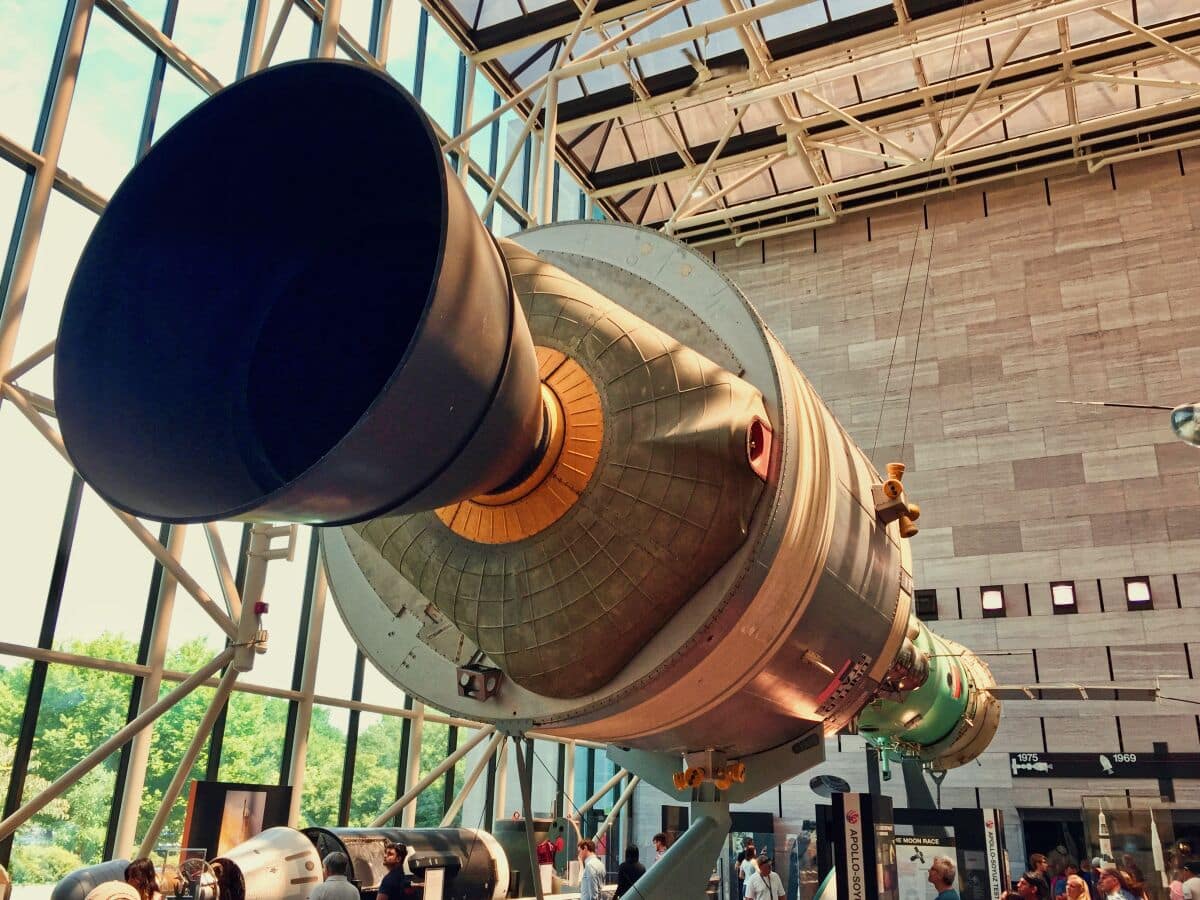
Each museum offers a unique educational experience, and many provide hands-on activities and interactive exhibits perfect for engaging young minds.
The Smithsonian Galleries
While the museums are a big draw, DC also boasts a range of galleries showcasing exquisite pieces:
Freer Gallery of Art and Arthur M. Sackler Gallery
Immerse yourself in the exquisite world of Asian art at the Freer Gallery of Art and Arthur M. Sackler Gallery. From ancient treasures to contemporary masterpieces, these galleries offer a comprehensive journey through the diverse cultures and artistic traditions of Asia.
Marvel at intricately carved sculptures, delicate ceramics, and vibrant paintings that showcase the beauty and complexity of Asian art. Explore galleries dedicated to Chinese, Japanese, Korean, and South Asian art, each offering a unique perspective on the region’s rich cultural heritage. Whether you’re a seasoned art enthusiast or simply curious about Asian culture, the Freer and Sackler Galleries promise an unforgettable experience filled with beauty, history, and inspiration.
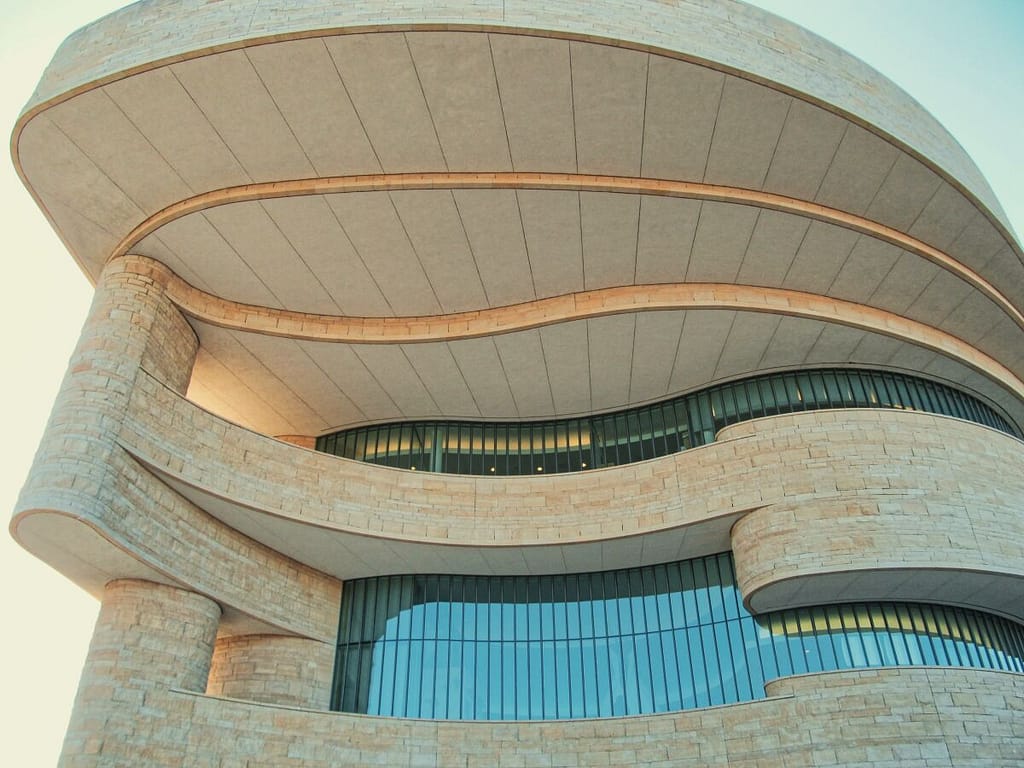
National Portrait Gallery
Step into the National Portrait Gallery and embark on a captivating journey through American history and culture. Here, you’ll encounter iconic portraits that offer a glimpse into the lives and legacies of the individuals who have shaped the United States.
From founding fathers to modern-day leaders, the gallery’s collection spans centuries of American history, showcasing the faces of those who have left an indelible mark on the nation. Marvel at portraits of presidents, civil rights activists, artists, and innovators, and gain a deeper understanding of their contributions to American society.
Don’t miss the opportunity to see iconic portraits of figures such as the Obamas, whose images capture the spirit and essence of their time in the White House. Through these compelling portraits, visitors can connect with the stories of the past and gain insight into the people who have helped shape the nation’s identity.
Renwick Gallery
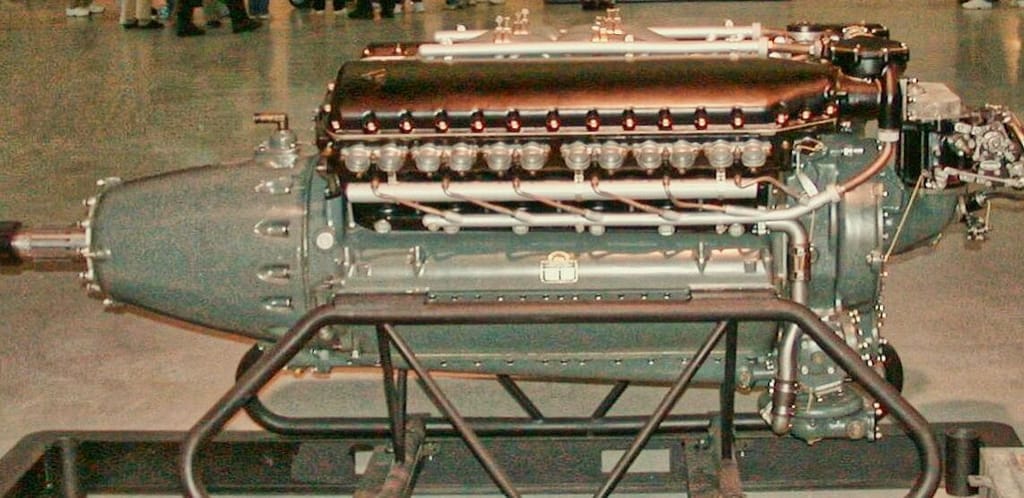
Prepare to be dazzled by the innovative and thought-provoking works of contemporary American craft at the Renwick Gallery. Nestled in the heart of Washington DC, this museum showcases a dynamic range of artistic expressions, from traditional craftsmanship to cutting-edge design.
Explore galleries filled with stunning examples of glasswork, ceramics, fiber art, and more, each piece showcasing the creativity and ingenuity of American artists. Marvel at larger-than-life installations that challenge perceptions and push the boundaries of artistic expression, such as Nick Cave’s mesmerizing Sound Suit and Wendell Castle’s whimsical Ghost Clock.
Whether you’re a connoisseur of contemporary art or simply curious about the latest trends in American craft, the Renwick Gallery offers a unique and immersive experience that’s sure to leave a lasting impression.
These galleries offer a different perspective on art and culture and provide an excellent opportunity for family discussions on creativity and self-expression.
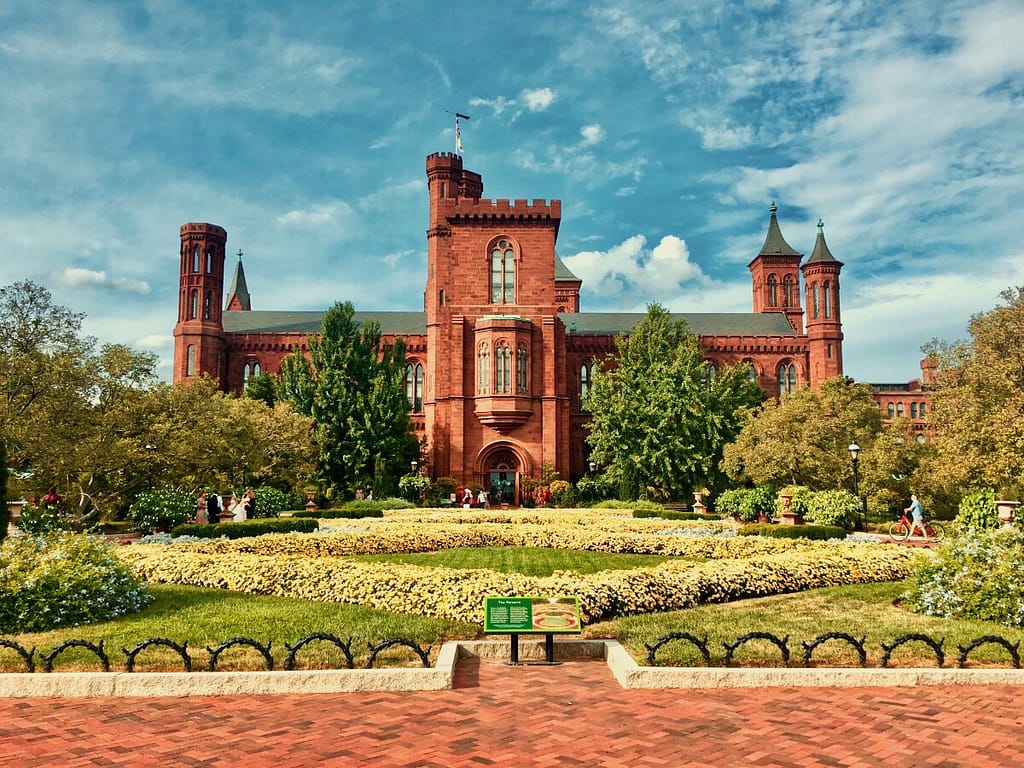
Beyond Museums – Unique Smithsonian Buildings
The Smithsonian’s offerings extend beyond traditional museums and galleries:
Archives of American Art
Step into the Archives of American Art and uncover the treasures of the nation’s creative heritage. As the world’s largest collection of American artwork, this repository preserves the diverse voices and visions of artists across the country. Explore a vast array of paintings, sculptures, photographs, and manuscripts that offer insight into the evolution of American artistry over the centuries.
Delve into the personal archives of renowned artists, from Georgia O’Keeffe to Andy Warhol, and gain a deeper understanding of their creative process and cultural impact. Whether you’re a seasoned art aficionado or simply curious about the artistic legacy of the United States, the Archives of American Art offers a rich tapestry of inspiration and discovery.
Art and Industries Building

Step back in time and experience the storied history of Washington DC at the Art and Industries Building. Once the first United States National Museum, this architectural gem now serves as a hub for special events and exhibits that celebrate the city’s rich cultural heritage. Explore galleries filled with artifacts and memorabilia that offer a glimpse into the city’s past, from its early days as a bustling port city to its evolution into a vibrant cultural capital.
Marvel at historic treasures such as the original Star-Spangled Banner and the Wright brothers’ first airplane, and immerse yourself in the stories of the people and events that have shaped the nation’s capital. Whether you’re a history buff or simply curious about the city’s past, the Art and Industries Building promises an enriching and memorable experience for visitors of all ages.
Discover a fusion of art and nature at the Hirshhorn Museum and Sculpture Garden, where contemporary art meets serene garden landscapes. As a hub for contemporary art and culture, the Hirshhorn showcases an eclectic mix of avant-garde works by leading artists from around the world. Explore galleries filled with cutting-edge installations, provocative sculptures, and multimedia experiences that challenge perceptions and spark conversation.
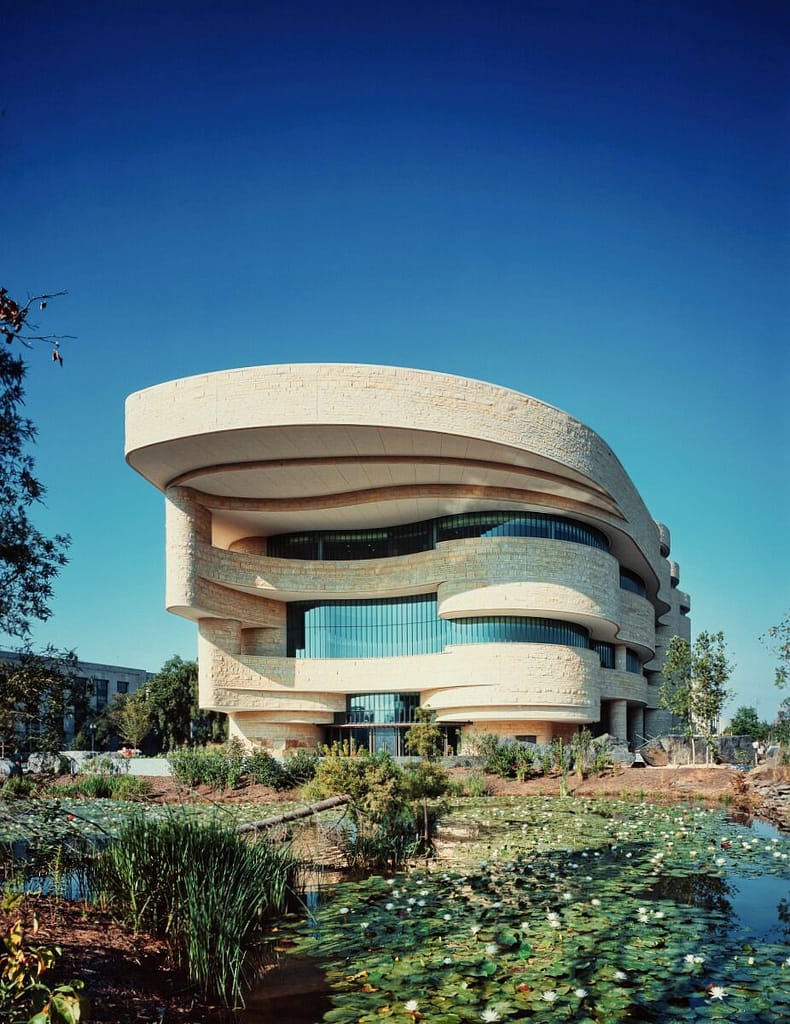
Then, step outside and wander through the museum’s lush Sculpture Garden, where towering sculptures and tranquil pathways create an oasis of calm amidst the hustle and bustle of the city. Families can explore together, engage with interactive exhibits, and enjoy picnics surrounded by stunning works of art. Whether you’re a seasoned art lover or simply looking for a peaceful escape, the Hirshhorn offers a one-of-a-kind experience that’s sure to inspire and delight.
The Smithsonian Gardens: Museums Without Walls
Thirteen beautiful gardens surround the Smithsonian museums, offering a serene escape from the city’s hustle and bustle. These tranquil spaces are perfect for a leisurely family stroll or a peaceful picnic amidst stunning flora.
A Castle, a Dome, and More
Don’t forget to visit the stunning Smithsonian Institution Building, known as “The Castle.” It’s the visitor center, housed in a remarkable castle-like structure. Wondering about the copper dome? It’s the S. Dillon Ripley Center, home to the Smithsonian Associates, Traveling Exhibition Service, and Discovery Theater.
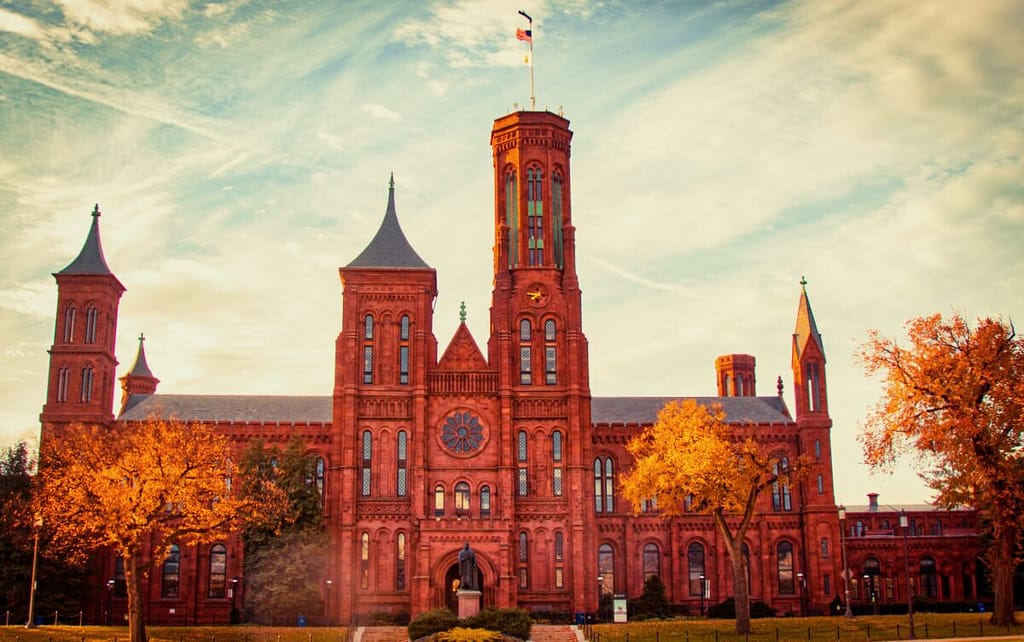
For the Wildlife Enthusiasts
If museums and galleries aren’t your family’s cup of tea, fear not! Washington DC also hosts the National Zoo. It’s home to over 1,500 animals representing 300 different species, promising a day filled with excitement and learning. Your family can explore various ecosystems, from the African Savanna to the Amazon Rainforest, and get up close to fascinating creatures from around the world.
Conclusion: Crafting Your Perfect Family Adventure
So, as you plan your trip to Washington DC, remember that there’s always something amazing to do, and the Smithsonian offers a treasure trove of experiences. Whether your family is passionate about history, art, or wildlife, DC has it all. If you have any questions or need personalized recommendations for your family’s visit, don’t hesitate to reach out. Join my email list or book an appointment, and let’s chat about planning your next unforgettable vacation!
In this extended guide, we’ve uncovered the wonders of Washington DC, providing you with a comprehensive roadmap for an unforgettable family adventure in the nation’s capital. Whether you’re exploring museums, galleries, gardens, or the zoo, your family is sure to create lasting memories in this vibrant city.
Read More About Your Trip To DC:
Educational & fun: the ultimate 48-hour family vacation in dc, discover the best family-friendly festivals in dc, the ultimate family vacation guide in montgomery: tips and tricks for a memorable trip.
- Exploring Hallyu: Your Ultimate Family Vacation at the Korean Cultural Center
Family Travel Expert
Kiara is a family travel specialist who helps busy families take their trip ideas from a time-consuming concept to a booked vacation that best suits their lifestyle and needs.
Similar Posts

4 Amazing Must-Visit Beaches in Cuba To Try Right Now With Your Family

The 10 Best Family Friendly Attractions in Paris

Discover the 10 Ultimate Outdoor Adventure in Utah for Families
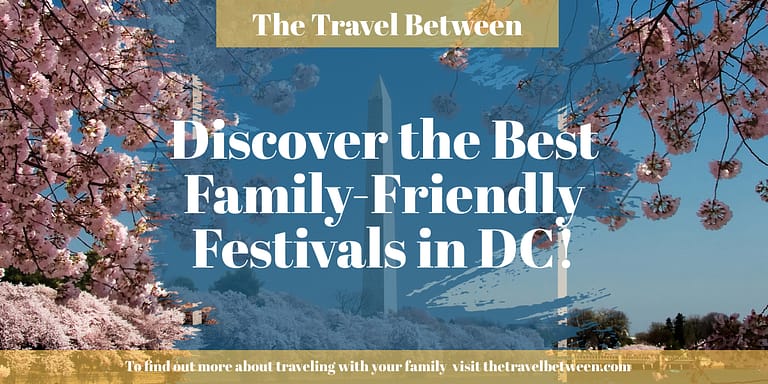
Leave a Reply Cancel reply
Your email address will not be published. Required fields are marked *
Save my name, email, and website in this browser for the next time I comment.
This site uses Akismet to reduce spam. Learn how your comment data is processed .

Food service will be limited today (September 17) to the Ocean Terrace Cafe located on the first floor adjacent to the Sant Ocean Hall.
Visitor Tips
Prepare for security.
We are committed to visitor safety and have security measures in place to keep you and Museum objects protected. When you arrive at the Museum you can expect a full security screening similar to what you might experience at the airport, except you can keep your shoes and belts on.
- Firearms or ammunition
- Knives (including pen, pocket or "Swiss Army"-style knives)
- Aerosol cans (including pepper spray and Mace)
- Tools (screwdrivers, awls, etc.)
- Placards, signs, or banners
- Pets (except service animals)
- Wagons (collapsible and fixed wheel)
- Selfie sticks
- Skateboards or Scooters
- E-cigarettes
- Mobility aids (canes, walkers, etc.)
- Service animals. Not emotional support animals.
- Bottled water
Check the Smithsonian's security policy for the most up-to-date information.
The Security Office is located on the Ground Floor in the north (Constitution Avenue) lobby next to the elevators.
Bag Lunches
Seating for bagged lunches is not currently available. Bagged lunches must be stowed away at all times while visiting the museum and must be eaten outside of the museum. The museum has no refrigerated storage for lunches.
Pets (except service animals) are not permitted in the museum. Emotional support animals are not permitted in the museum.
Photography
The Smithsonian permits still and video photography for noncommercial use only in its museums and exhibitions, unless otherwise posted. For the safety of our visitors and collections, the use of tripods, monopods, and selfie sticks is not permitted at any time. Working members of the media who need to use a tripod or monopod must obtain permission from the museum’s Press Office and must be escorted by a museum staff member while in the building.
Notice: Visitors may be filmed, photographed, or recorded by the Smithsonian for educational and promotional uses, including for posting on the Smithsonian’s and other public websites.
The museum provides free Wi-Fi access; choose the "si-visitor" network on your device. No password necessary. This is a public, unsecured network.
Smoking is prohibited in all Smithsonian facilities. This includes e-cigarettes.
Health & Safety Guidelines
Masks are not currently required to visit. While not required, all visitors who feel more comfortable wearing a face mask during their visit are encouraged to do so.
Our current health and safety measures are based on guidance from the Centers for Disease Control and Prevention (CDC) and local governments. These measures may change in response to changing CDC COVID-19 Community Levels, so we encourage visitors to regularly check our website before their visit for the latest guidelines.
- General Inquiries: [email protected]
- Smithsonian Institution
- Terms of Use
- Privacy Policy
- Host an Event
The Best Way To Visit the Smithsonian in D.C.

One of Washington, D.C. ’s crown jewels for visitors and residents alike is the Smithsonian Institute . From Dorothy’s ruby slippers to the Wright brothers’ airplane to Earth’s prehistoric dinosaurs, there is literally something to pique everyone’s interest and, being free, it can be one of the most affordable getaways you take all year. As a result, being the world’s largest museum complex it’s also the most visited, welcoming tens of millions of guests per year.
Here are a few tips to help navigate your way through the marble halls of the Smithsonian.
- Stick to a plan: The Smithsonian is an enormous complex, made up of 18 museums, galleries and even a zoo. Although spread across the city, the major museums are centrally located along the National Mall sandwiched between the U.S. Capitol and Washington Memorial. Before going, make a plan -- what are "musts" on your list? What can wait for a second visit? Don’t try to tackle too much in one day, especially if you have kids in tow. If you want to see the museums from top to bottom, it might be safe to plan no more than two in a single day.
- When to go: If at all possible, take a look at a school calendar and visit the museums any day a majority of kids are in school. It goes without saying, if school is out the museums are packed, particularly on weekends and holidays. Clearly if you’re a family your flexibility is limited, so arrive early in the morning and knock the Air & Space Museum and the Natural History Museum off your list first, as these can be the most popular museums in the collection and can become overwhelming by mid-day. Both open at 10 a.m.
- Getting around: Whatever you do, don’t drive. There’s virtually no parking along the National Mall, and you’ll either spend the day trying to find a coveted space or end up at an expensive garage that still requires some walking. There are three Metro stations that can get you pretty close, depending on which museum you’re visiting -- the Smithsonian (along the blue and orange lines) and the L’Enfant Plaza (along the blue, orange, yellow and green lines) stations have good access to the south side of the Mall; the Archives station (along the yellow and green lines) has good access to the north side of the Mall. A cab can also take you straight to a museum’s entrance, but beware it can be difficult to find one once you’re there. Either way, you’re doing a ton of walking so wear comfortable shoes!
- Off the beaten path: As noted, some of the most popular museums are along the National Mall, but two institutions off the beaten path are well-worth a visit. The National Zoo (also free) is one of the world’s largest and well known for its giant pandas. It lies north of downtown D.C. and can be accessed by the Metro red line’s Woodley Park/Zoo station as well as the green line of the Circulator bus. The Udvar-Hazy Center is an extension of the National Air & Space Museum and houses hundreds of aviation and space artifacts too large for the main museum along the Mall. The center is close to Dulles International Airport, so it can be more difficult to get to without a car and while free itself, parking costs $15.
- Lip-smacking gelato: While it’s not part of the Smithsonian, the National Gallery of Art is a worthy diversion set amid the museums. In addition to a world-class collection, the gallery has the best gelato I’ve had this side of the Atlantic. In the lower level, there’s an espresso and gelato bar that’s well worth a respite. There are almost 20 flavors to choose from, so if you’re in town for a few days it might be worth repeat visits.
Related Offers
Browse our collections, more deals & tips.
- Trending Deals
- Last-Minute Deals
Your location
Where are you.

Create an account.
Just one more thing..., check your inbox., create your password..
- Access to exclusive travel, entertainment, and lifestyle experiences
- Hand-picked offers, personally reviewed by our global team of deal experts, delivered to your inbox
- Dedicated club-member customer support
Sign in to your account.
Enter your password.
Please accept this confidentiality pledge:
I agree to maintain the strict confidentiality required to access Travelzoo’s confidential offers. I will not reveal details of these confidential offers publicly, which includes not posting about it on social media. I will not attempt to purchase a confidential offer for anyone else. I understand that violating these conditions can result in my access being revoked.
To view confidential offers, we require that you sign a confidentiality agreement.
Don’t know password?
You're all set, join travelzoo, sign in to unlock, don't miss out, our deal experts have negotiated member exclusive rates for people like you., and you’re in..
Welcome, Travelzoo Member . You now have access to confidential offers. To access Confidential Offers in the future, you can use the link from your email, or the link under My Account on the Travelzoo website. This page is only accessible to Confidential Offer members.
You now have access to all our deals.
Here are the details of the deal you were interested in.
Sign in to save and manage your deal alerts
Sign in to save this deal to favorites., already a member, not a member yet.
Tips for Visiting the Smithsonians in Washington DC
It’s hard to visit Washington DC without visiting at least one Smithsonian Museum. But what if you want to do them all? Can you do it on a weekend? Or do you need a full week?
There were a few museums that blew me away, while others, I quickly found a few Smithsonians that I probably could have skipped altogether. Here is your guide to the Smithsonians in Washington DC.
A Guide to Visiting the Smithsonians in Washington DC
The Smithsonian Institutions is the world’s largest museum complex, housing over 145 million artifacts and works of art. One of the nation’s most popular attractions, the Smithsonian is a collection of 19 museums, research centers, and galleries, with 24 satellite facilities.
Although many of the museums in D.C. can be visited for free, many require tickets, so be sure to plan ahead of your visit. The largest concentrations of museums in on the Mall in Washington DC.
General Tips
The Smithsonian Institute gives a long list of tips to get you through security faster and have a better experience. I put them to the test and found out that they don’t all pan out. So let’s break them down a bit.
Skip the backpack to get through security quicker
That’s because there are usually a dozen or more people in front of you all with bags. In some cases having the bag may make it easier to go through security, especially if you forget to pull a dime out of your pocket and then set off the alarm. But since they don’t have a line for people without bags, it doesn’t help.
The trick is to have as few pockets as possible and very little inside.
Each museum has different security protocols. Sometimes your bag will go through an x-ray and other times you’ll have someone poke through it… literally.
To ensure things go quick, bring the bare minimum to the museum. Have as few pockets on your bag as possible.
Avoiding the Crowds By Skipping Peak Times
The Smithsonian Institute recommends avoiding visiting on weekends, holidays, during the National Cherry Blossom Holiday Festival and Winter Break. Arriving early on weekends and late on weekdays. For the most part, they are spot on.
During the week, the crowds are manageable. In the morning the museums will be flooded with younger kids and teenagers on field trips. That’s why they recommend going later in the day.
The sweet spot really is from 4-5:30. You can get through the museum in that amount of time, as long as you don’t linger.
If you have to do it on the weekend, get there early. I’m talking about being one of those people lined up waiting for the place to open.
From then, go straight to the top. By the time you get to the bottom, there will be crowds, but at least you’ll have the top floor to yourself.
Pro Tip for Planning Your Visit
Most people are in Washington DC for a set amount of time and can’t always be there just during the sweet spot for low traffic.
That’s why you should prioritize your visit to the Smithsonians based on their traffic levels. This will give you a better idea of how popular they are.
Try and arrange your itinerary around so you are on the most popular museums during the week and you’ll have a better experience overall.
In 2019, here are the most popular Smithsonian Museums: National Museums of Natural History – 4.2 Million National Air and Space Museum – 3.2 Million National Museums of American History – 2.8 Million African American History and Culture – 2 Million American Art Museum – 2 Million National Zoo – 1.8 Million National Portate Gallery – 1.7 Million National Museum of the American Indian – 960 Thousand *Data from the Smithsonian News desk. 2020 data the museum were not opened consistently to gauge traffic levels.
Can I bring a Camera?
The Smithsonian museums love it when you bring your camera. Feel free to share and hashtag your pics. There are a few things that they do not want you to photograph, like the Star-Spangled Banner flag.
It’s too fragile and can’t handle flashes. They don’t want to risk someone having it going off, so no pictures at all. If there is something that you can’t take pictures of, you’ll see plenty of signs and usually staff nearby reminding you that there is no photography.
What about Strollers?
Visiting the Smithsonians with young kids can be challenging. A limited number of strollers are allowed in the building. With the crowds and trying to navigate inside, I recommend leaving them at home if possible.
A few locations, like the Museum of Natural History, rely mainly on stairs, where others use escalators. They all have elevators for those that need them, but who wants to wait for them if you don’t have to.
How Long Do You Need?
Give yourself 1-3 hours per museum depending on your level of interest. It’s possible to see 3-4 in one day. It will be an exhausting day, but feasible.
If it’s 4:30 and you’re trying to decide if you can get into another one, you can. At around 5:15, they’ll start warning you they will be closing before they officially kick everyone out.
Do We Need to Buy Tickets?
The Smithsonians are all free to visit. The Museum of African America History and Culture & the National Zoo in DC requires timed entry ticket.
It’s still free but harder to come to because of its popularity. There are also some same-day online passes and walk-up passes available too.
Visiting the Smithsonians Museums in DC
National air and space museum.
The power of what humans can do is unreal. The museum is filled with lots of fun artifacts, including spaceships, lunar landers, space suits, and original aircraft.
Add ons inside include things like simulators and shows about our galaxy for a fee. But it is still one of my favorite museums to visit.
You don’t need as much time on this one because of the size of the artifacts. A lot of the things were prototypes, as the original lunar modules were left on the moon.
The museum was going through some changes while I was there, getting new displays ready so a portion of the building was blocked off.
My biggest complaint was that some rooms were hot while others had air conditioning. I also found limited places to sit. On a 90 degree day, while you’ve been walking non-stop, it was noticeable.
The National Air and Space Museum is a Must See Museum.
National Museums of Natural History
The National Museums of Natural History was on my list for a long time. Inside it is filled with bones from all different creatures, including Dinasores.
It has precious jewels and gems like the hope diamond and Marie Antoinette’s Diamond Earrings. They had multiple Mummys on display and other random things.
The place was nuts when we visited, making it hard to get up close to anything. Beyond that, it felt like dumping ground where they put things that didn’t have a good category.
I was disappointed the other animals on display were only of their skeletons. I would have liked to see the fur and depiction of what it would have looked like. I also felt that charging $7.50 admission to a butterfly garden was a little steep.
The National Museum of Natural History is one you can skip .
National Museums of American History
The National Museums of American History holds some of America’s most iconic treasures. You’ll find things like Dorthey’s Ruby Red Slippers from the Wizard of Oz and Captain America’s Shield from the Marvel Comic Movies.
Almost every First Lady’s Inaugural Dresses are displayed along with China from the White House Collection. This is something you don’t get to see on the White House Tour .
Not everything has a pop culture reference though. Things like a life jacket from the Titanic are on display. There is a representation from every war.
Memorabilia that is at the Vietnam Memorial is picked up every night and included in the museum’s display. But the most shocking artifact was some steel beam leftover from the World Trade Center.
My personal favorites were getting to see the Star-Spangled Banner. The Flag is 30 x 42 feet. It was made by Mary Pickersgill and inspired our National Anthem.
The flag is hidden behind a glass wall. Because of its condition, they won’t let guests take pictures. My other favorite piece was the microphone that FDR used for his fireside chats.
The National Museum of American History is a Must See Museum.
The National Zoo
The only place to see pandas in the US is the National Zoo. Surprisingly, the Smithsonians also cover living animals and not just artifacts. They just left the San Diego Zoo to return back to China.
I thought it was a good zoo overall, but small. There was a nice mix of different animals, including Lions and Tigers and Bears. Except the Tigers were hiding when we were there.
The panda enclosures were a lot of fun to see. They had multiple enclosures and vantage points at all of them. Getting there at 9am and making them a priority, allowed us to see them when they were most active and eating.
A few criticisms of the place. 95% of the zoo was all outdoors on a hill. You start at the top and work your way back up. There were brief sections indoors for the animals.
Some buildings like the Amazon didn’t open until 10 am. If you are using Uber to get there, make sure to select the front entrance.
The GPS coordinates the app took our driver was to a back entrance. Thankfully our driver re-routed us to the front making it easier to get picked up.
Visit the National Zoo if you have time or pandas are on your list.
National Museum of the American Indian
One of the newest museums to hit the scene is the National Museum of the American Indian. American Indian includes everything in North and South America, which threw me off a little.
They had artifacts from lots of different tribes all ranging in different climates. It was interesting to see their way of life.
There was also a section completely relating to their influence on America and how they shaped the cultures. Peace Pipes, Treaties, and other things are on display. They also delved into how they shaped pop culture with Sitting Bull, comics, magazine depictions, and Indian Motorcycles.
This was the best of all the Museums for me and the least crowded. Everything was on the top two floors of the building. They also had great air-conditioning.
The National Museum of the American Indian is a must see for all Americans.
Other Things to Note
Things to note about the Smithsonians is that they have so many different artifacts hiding away. They do a great job of mixing in the artifacts with informational displays. But the balance is skewed towards informational displays. I would have liked to see more stuff.
Especially knowing how much they have. The Dorthy’s Ruby Red Slippers, for example, have a wing of the museum all to themselves. On busy days, they may need that much space.
But I would love to have seen more collectibles in the room. I also noticed on a lot of signs they were reproductions or models of the originals. When I go to a museum, I want to see the real thing.
I also didn’t get a chance to visit the African American History and Culture Museum. It is in high demand and not something we planned for initially on our visit.
There are a few other Museums including 9 different art galleries and the Postal Museum that we didn’t have time for either. I prioritized seeing the Van Goghs that are housed at the National Gallery of Art. If I have time, I would love to have done them all.
The last time I was in Washington DC visiting the Smithsonians was over 10 years ago. Walking into the Smithsonian it was completely different.
They are constantly working on remodeling, fixing, and changing out the exhibits. It’s a great feature that keeps people coming back. It also means that you may find yourself blocked off from portions of the museum like we were for the Air and Space Museum.
Use Public Transportation to Get there
The majority of the Smithsonian’s are all right next to each other or withing a few buildings of each other on Mall. If you need to get around, I recommend borrowing a Bike in DC . They will help you get clear across the mall, or to the offsite museums.
We used the Bikes for the our DIY Monuments tour and it was amazing !
Are Visiting the Smithsonians Worth It?
Yes! Yes! and Yes! I may be a little critical of visiting the Smithsonians but that’s only because most people have limited time while they are in DC. I know their potential and some live up the hype.
I think they do a great job of displaying our history. It’s hard not to leave without finding something completely new and exciting.
Pin it for later
Minnesota native and Midwest travel expert Jennifer provides insider tips and budget-friendly trip ideas for families looking to explore the Land of 10,000 Lakes. Through her travel blog DayTripper28, she draws on first-hand experience to recommend the best hidden gems, outdoor adventures, road trips, and weekend getaways around Minnesota and the Midwest. With her passion for uncovering local flavors and culture along the backroads, Jennifer shares affordable itineraries for creating memorable experiences across the region.
Similar Posts
Hiking the st. croix boom site: a journey through minnesota’s logging past and scenic riverfront.
One Friday morning, my husband and I loaded our kids onto the school bus and we took off in…
Best Flashlight for Backpacking and Night Hikes: Why you need one?
Backpacking and hiking at night require a flashlight. Most of the time, a headlamp will do. If you want…
Cossetta’s St. Paul Old World Italian | The Best Food in Town
Looking for some old world Italian without breaking the bank? Head out to Cossetta’s Alimentari in St. Paul. We…
On this day in MN History: Mystery Unearthed in Minnesota Fields
On November 8, 1898, Swedish immigrant farmer Olof Ohman uncovered a curious artifact while clearing trees on his Douglas…
Lyndale Park Rose Garden in Bloom in 2024
Looking for a beautiful destination in Minneapolis? The Lyndale Park Rose Garden is a must-see! Established over a century…
21 Best Hikes Near Minneapolis and St Paul 2024
Current Problem- there are so many hikes I want to do and not enough weekends in the year to…

The Ultimate 4 to 5 Days in Washington, DC Itinerary
Last Updated on January 29, 2024
by Audrey Webster
Disclaimer: This article contains affiliate links. That means if you click a link and make a purchase, we may make a small commission. As an Amazon Associate we earn from qualifying purchases. For more information, see our privacy policy.

Planning out a Washington DC itinerary can be a challenge when you consider all there is to see and do in the US capital. History aficionados will fall in love with Washington DC. There are few other places in the world that house so many museums and monuments from a single country’s history.
During your 4 or 5 days in Washington DC, you’ll have access to the Smithsonian’s iconic network of museums, historical monuments, and slices of history that you won’t easily find anywhere else.
Table of Contents
How Many Days in Washington, DC?
If you’re wondering how many days to spend in Washington DC, it can vary dramatically based on what you want to see. It’s a city that is loaded with activities that could keep you busy for several days.
You should plan to spend a minimum of 3 days in Washington DC. This will grant you ample time to catch the highlights at a leisurely pace. Even then, you’ll still have to prioritize what you see during your visit to the nation’s capital.
With 4 days in Washington DC, you have a little more time to see the museums and historical landmarks.
5 days in DC allows you to take a day trip to a nearby site like Arlington Cemetery, Mount Vernon, or somewhere even further. You can easily hop on the metro for a quick day trip out of the city itself.
You also could easily use this time to explore some of the other neighborhoods around DC, such as Dupont Circle or Georgetown.

Getting To & Around Washington, DC
If you’re coming from far away, you’ll likely arrive in Washington DC by plane. There are three major airports: Dulles, Ronald Reagan, and Baltimore-Washington.
Visitors can use the metro to reach inner-city Washington DC from these airports. Alternatively, rideshare services and taxis are easily available and you can also book a transfer ahead of time.
DC is also well-connected via rail to a number of other cities on the East Coast, including New York, Boston , Philadelphia and even Providence. You can view train schedules here.
When getting around the city, take the metro. It’s clean, reliable, and reaches all the city’s main landmarks. That said, you should walk around the National Mall and Tidal Basin. You can easily reach most major monuments and museums just by walking around the National Mall.
The Tidal Basin offers its visitors a pleasant walk any time of day while getting to see iconic memorials and monuments.

4 to 5-Day Washington DC Itinerary
For the days with two museums, we recommend visiting one in the morning and one in the afternoon after taking a lunch break. You can mix and match depending on your interest, but consider the highlights listed below to be the most highly recommended stops for your DC itinerary.
Day 1 – White House, Tidal Basin, Memorials & More!
While the sites on the first day of this itinerary can be visited independently it is also possible to take several guided tours such as this bus tour , this bike tour or this evening tour if you want to see the monuments at night.
Washington Memorial and White House
We’ve added the White House and Washington Memorial to the top of your itinerary because they are can’t-miss sites in Washington DC. These two marble structures are iconic.
The Washington Monument stands at just over 555 ft tall. There is an observation deck at the top that grants visitors excellent views of the National Mall.
You can also book a tour of a portion of the White House to see some of the building’s most famous rooms.
Lincoln Memorial
The Lincoln Memorial is a favorite monument for many first-time visitors to Washington DC. It’s the site of Martin Luther King Jr.’s “I Have a Dream” speech. Where he stood at the top of the monument’s stairs is marked by an engraving.
The reflecting pools before the monument make for an iconic Washington DC photo op. Make sure to check out the Lincoln Memorial at night too. The monument lit up is a stunning sight to see.
Walk the Tidal Basin
Walking the Tidal Basin is an absolute must no matter what time of year you’re visiting, but the spring and fall are the most stunning.
Every spring the cherry blossom trees bloom casting the basin into a beautiful pink floral park. Here you’ll find the Jefferson Memorial, Franklin D. Roosevelt Memorial, and MLK Jr. Memorial.
You can rent paddle boats to explore the basin from the water. It’s a highlight of your Washington DC itinerary.

Vietnam Veterans and Korean War Veterans Memorials
Continuing your walk of the National Mall, visit the Vietnam and Korean War Veterans Memorials. The Vietnam Veterans Memorial, also known as “the Wall”, is a long black granite wall with the names of 58,000 Americans who died in the Vietnam War. It’s a solemn and thought-provoking memorial.
Next, the Korean War Veterans Memorial pays homage to the over 1.5 million of soldiers who served. These 19 stainless steel statues march in a triangle formation toward an American flag.
World War II Memorial
The World War II Memorial is a stunning white memorial dedicated to the 16 million Americans who served in World War II. It’s a circle of 56 columns that represent all U.S. states and territories around the Rainbow Pool.
Here is another memorial you want to make sure you visit after dark. At night, lights shine on the columns and from the pool making it an eye-catching site.

Day 2 – Museum of Natural History, National Archives Museum & the US Capitol
Smithsonian national museum of natural history.
Perhaps one of the most iconic museums in the United States is the Smithsonian National Museum of Natural History. It’s an absolute must for all visitors to Washington DC.
The museum, part of the Smithsonian museum network, is an especially great stop for a Washington DC itinerary that includes children and they are free to enter.
There are over 147 million items on display that range from marine life to geology to ancient Egypt. You can spend anywhere from two hours to about half a day exploring this museum and there is no doubt that it is one of the best things to do in Washington DC. It is also possible to take a guided tour if you want to learn more from a guide.
If you’re more interested in American History, then consider visiting the adjacent Smithsonian National Museum of American History during this time instead. Here you can find exhibits that are important to the history of the USA and it’s a wonderful place to visit.

National Archives Museum
Where can you find the true Declaration of Independence, the American Constitution, the Bill of Rights, and the surviving copies of the Magna Carta all in one place? The National Archives Museum.
Make sure you reserve a timed slot in advance to avoid waiting in the long line at the entrance. Here is the only place where visitors can view the country’s founding documents.
U.S. Capitol & the Library of Congress
The U.S. Capitol building is one of the most impressive working government buildings in Washington DC. With its towering white marble dome, it stands out in the National Mall. Inside, you can see where both houses of Congress reside.
Visitors can enter the capitol, but you must make a reservation in advance. You cannot visit the Capitol without a reserved tour – you can book a small group tour here.
Nearby you’ll find the Library of Congress. Here is where you’ll find hundreds of years’ worth of historical books and documents in a beautifully-designed building.
Day 3 – Air and Space Museum & the Holocaust Memorial Museum
Smithsonian national air & space museum.
The Smithsonian’s Air & Space Museum is a treasure trove of the country’s most iconic advancements in air and space technology. Here you’ll find Amelia Earhart’s Lockheed Vega 5B, the Apollo 11 Command Module, the Wright Brothers’ 1903 Wright Flyer, and much more.
There is also an IMAX theater, Einstein Planetarium, and flight simulators to enjoy. You can easily spend several hours wandering the massive hanger filled with excellently-preserved planes. You can organise a guided tour here.

United States Holocaust Memorial Museum
Visiting the Holocaust Memorial Museum is a sobering experience. The stories of Holocaust survivors are told through film footage, photography, artefacts, and more. It tracks the rise of Hitler through propaganda and World War II.
There are several special exhibits–most advise a minimum age warning due to the graphic nature of the material on display. Portions of the museum have walls raised so young children cannot see over them.
It’s an informative and impressive museum that is well worth adding to your itinerary if you have 3 days in DC.
Day 4 – Museum of African American History, National Gallery & the JFK Center
Smithsonian national museum of african american history.
If you’re seeing Washington DC in 4 days, you should mix and match your museums to make sure you see the ones you’re most interested in. However, ensure you visit the National Museum of African American History.
This museum is a relative newcomer to the National Mall, opening in 2016. It contains over 40,000 artefacts that trace the experiences and lives of African Americans from the country’s earliest years to present day.
The museum is expertly curated and you could easily spend half a day wandering its halls. If you want to learn more about African American history, you can take a half-day tour that includes some time in this museum.
National Gallery of Art
Art fans should prioritize a visit to the National Gallery of Art. There are two wings: the East Building which is home to modern art and the West Building home to classic art pieces. The collection is huge.
You could easily spend a couple hours or an entire day wandering between these two buildings. Don’t leave without visiting the rooftop where you’ll get great panoramic views of the city. You can organise a guided tour here.
Those traveling with children or who simply don’t want to visit more museums, then consider using this time to visit the Smithsonian National Zoological Park – also known as the National Zoo. Easily reached on public transport, this zoo is free to enter and you can see incredible animal exhibits – including Giant Pandas!

John F. Kennedy Center for the Performing Arts
From dance performances to musicals, the shows at the John F. Kennedy Center for the Performing Arts is an excellent way to spend an evening.
You’ll want to look at the schedule and reserve your tickets in advance. However, if you don’t have time to see a performance, visiting the center is still worth it.
There is a rooftop garden and bars that boasts incredible views of the National Mall. There is an art gallery and sculpture garden to explore as well. It’s a great addition to any trip to Washington DC.
Day 5 – Arlington National Cemetery, Rock Creek Park or Mount Vernon
Arlington national cemetery.
Located just across the Potomac River in Arlington, Virginia is one of the nation’s most famous cemeteries.
Arlington National Cemetery is about one square mile and houses the graves of over 400,000 service members as well as former presidents. Highlights include John F. Kennedy’s grave and the Tomb of the Unknown Soldier.
If time allows, you should watch the changing of the guard at the Tomb of the Unknown Soldier. This memorial is dedicated to all those who have lost their lives, but their bodies were never found or identified.
You can opt for a tour of Arlington Cemetery if you want to learn more about the memorials and gravesites. Arlington isn’t far from DC itself, so it’s easy to add on to a 4-day itinerary or if you’re seeing Washington DC in 5 days.

Rock Creek Park
If you’ve had enough of being in the city, head to Rock Creek Park. Here you’ll find over 32 miles of hiking trails, tennis courts, biking paths, and a golf course. It’s a great way to spend a day or afternoon after spending a few days seeing as much of Washington DC as possible.
Should you want to explore the park further, pay a visit to the Nature Center, the Peirce Mill, and the Old Stone House.
Mount Vernon
A visit to Mount Vernon is a step back in history. It’s the former home of the nation’s first president, George Washington.
Here you’ll find an immaculately preserved home, the tombs of George and Martha Washington, and a memorial dedicated to the enslaved people who worked on the property. Over 96 million people have visited Mount Vernon since it opened to the public in 1860.
There are several options for getting to Mount Vernon. It’s located about 15 miles from Washington DC. You can take a guided tour bus , public bus, or Metrorail. If you have a rental car, parking is also available at Mount Vernon, but the lot fills up very quickly.
If you want the more scenic route, consider taking a boat along the Potomac River. Note that you will not be allowed on the property without a ticket – you can pre-book tickets here.

Where to Stay in Washington, DC
Phoenix Park Hotel – This hotel is an excellent choice for mid-range visitors looking. They have many great rooms to choose from, a central location for exploring the city and breakfast available in the mornings.
Hotel Washington – Those looking for a high-end stay in the US capital will love this swanky hotel. Located within easy reach of the National Mall, they have numerous delightful rooms to choose from along with plenty of great amenities – including a spa/wellness center and an on-site restaurant/bar.
Highroad Hostel Washington, DC – Budget and solo travelers will love this highly-rated hostel located in the center of DC. Situated close to all of the top attractions of the city, they have both dorms and private rooms available along with good common spaces.
Not quite what you’re looking for? Click here to browse more Washington, DC hotels!
Whether this is your first time seeing Washington DC or you’re a return visitor, this itinerary will help guide your exploration of the US capital.
Are you visiting Washington, DC? Have any questions about this itinerary? Let us know in the comments!

Related Posts:

10 Best Stops on a Las Vegas to Grand Canyon Road Trip

A One Day in Great Sand Dunes National Park Itinerary

1 to 2 Days in North Cascades National Park Itinerary

About Audrey Webster
Audrey Webster is a writer for The World Was Here First. She is an Oregon native who has visited countries across the globe and currently spends her weekends exploring the Pacific Northwest and surrounding states. Her approach to traveling combines exploring famous tourist sites and wandering off the beaten path to discover new destinations.
Thank you so much for the above iternary. This is a great help. After reading your above iternary, I’ve decided to spend more time in DC.
My only question, what do you think of the hop on, hop off buses while visiting DC. Thank you.
Thank you….
Happy you’ve found this helpful and that you’re spending a good amount of time in DC! A hop on, hop off bus can be a convenient if you’re overwhelmed by navigating public transport or aren’t able to walk too much 🙂
Leave a Comment Cancel reply
This Map Lets You See When Magnificent Fall Foliage Will Peak in Your Area
Use the interactive tool’s week-by-week, county-by-county predictions to start planning your leaf-peeping trips across the United States
/https://tf-cmsv2-smithsonianmag-media.s3.amazonaws.com/accounts/headshot/SarahKuta.png)
Daily Correspondent
Mornings are crisp and cool, football is starting up again and pumpkin spice -flavored everything is back on store shelves—sure signs that autumn is on its way.
Soon, the leaves on deciduous trees will begin to lose their green luster and transform into a kaleidoscope of golden yellows, vivid oranges, bright reds and deep burgundies.
To help leaf-peepers make the most of this colorful season, the tourism site for the Smoky Mountain region has released its annual interactive fall foliage map that shows the progression of the changing leaves across the country.
The map offers a week-by-week, county-by-county look at the fall foliage season starting on September 2 and ending on November 18. It’s color-coded to show when and where the leaves are starting to turn—from light green (no change) to orange (partial) to red (peak).
Since it launched in 2013, the map has used historical temperature data, forecast temperatures and other inputs to predict peak fall foliage, according to the Washington Post ’s Natalie B. Compton. In recent years, it’s also taken into account user-submitted photos and reports, per Travel + Leisure ’s Stacey Leasca.
The map’s creators acknowledge that their predictions may not be perfect. Still, the tool is a good starting point for planning a hike , train ride or road trip to soak up the fall color. The Farmers’ Almanac also has a fall foliage map , and several states—including Minnesota and Wisconsin —release their own predictions.
This year’s fall foliage season is shaping up to be a promising one in many parts of the United States.
In Colorado, for instance, above-average precipitation and healthy aspen trees should produce a dazzling display of gold in the Rocky Mountains.
“I mapped almost no disturbance in aspen stands,” forestry expert Dan West , who is also an entomologist with the Colorado State Forest Service and Colorado State University, tells the Denver Post ’s John Meyer. “When I say disturbance, I’m talking about insects and disease. Some years we have environmental conditions that are perfect for fungal issues on leaves. We didn’t have that develop this year.”
The New England region is also “primed for a big show,” writes Jim Salge, a foliage expert and former meteorologist, in Yankee magazine ’s annual fall foliage forecast. The region’s trees had a “good growing season” with minimal impacts from drought or overwatering, according to Salge.
Salge predicts the best New England fall foliage will be in the Berkshires, the central Green Mountains, the White Mountains and western Maine. Later in the fall, eastern Massachusetts may also put on a “good show.”
“Colors should be bright, and trending toward a redder year if abundant sunshine allows,” he writes. “Colors should hang on longer than normal before fading and falling slowly.”
The Great Lakes and the Mississippi River Valley should also have “nice reds and oranges” this year, as Paul Pastelok, a long-range meteorologist, tells AccuWeather ’s Brian Lada.
“Plan your trip ahead of time,” Paselok, who is also with Accuweather, adds. “Get to those places, because they fill up fast.”
The leaves on deciduous trees turn colors as the tree begins to prepare for winter. As temperatures get chillier and daylight hours become shorter each autumn, the chlorophyll in trees’ leaves begins to degrade. Chlorophyll gives leaves their green color, so its disappearance allows other previously hidden pigments, like carotenoids and anthocyanins , to take center stage.
Eventually, the leaves will drop to the ground and the trees will go dormant, which is how they protect themselves against winter’s harsh weather. In the meantime, however, humans get to reap the benefits of this transitional period.
“We’ve kind of built a culture of celebrating the beauty around us each fall,” Salge tells Boston.com ’s Sanjana Mishra. “When people talk about leaf peeping, it’s more than just driving around and looking at trees—it’s building family traditions. It’s building a culture of enjoying the beautiful weather and beautiful colors we have.”
Get the latest stories in your inbox every weekday.
/https://tf-cmsv2-smithsonianmag-media.s3.amazonaws.com/accounts/headshot/SarahKuta.png)
Sarah Kuta | READ MORE
Sarah Kuta is a writer and editor based in Longmont, Colorado. She covers history, science, travel, food and beverage, sustainability, economics and other topics.
Site Navigation
Visiting with groups.
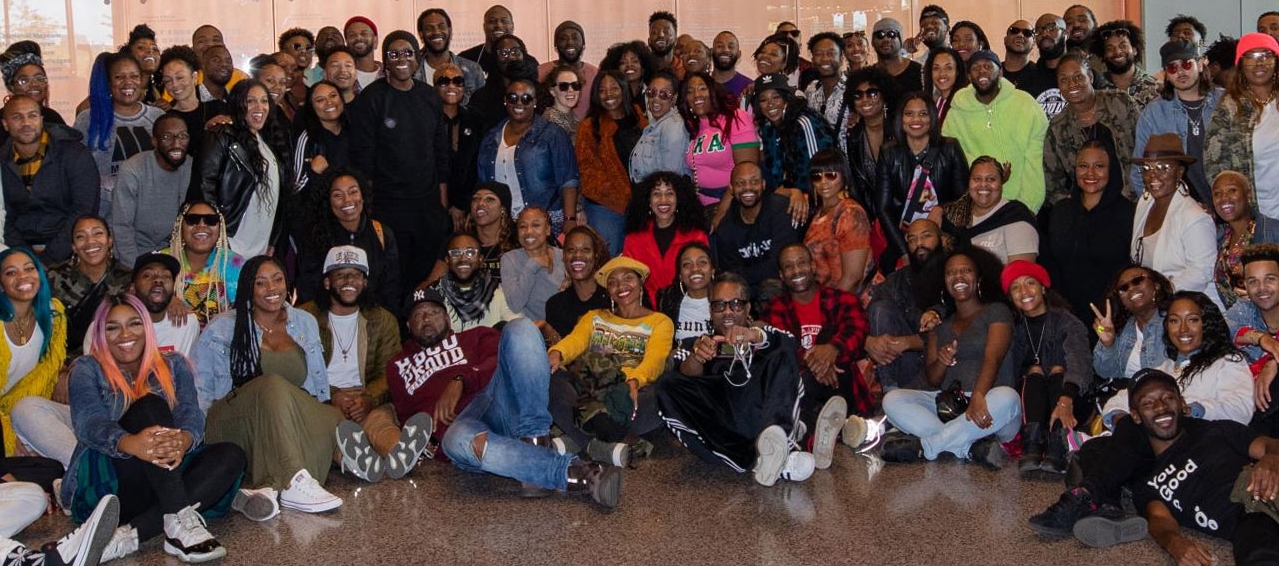
Group Reservations
Some locations require group reservations or passes. Visit the websites below for details:
- African American History and Culture Museum
- Air and Space Museum (DC)
- American Art Museum and its Renwick Gallery
- American Indian Museum (DC)
- American Indian Museum (New York)
- Asian Art Museum (encouraged)
- Cooper Hewitt (New York)
- National Zoo
Group Tours
Some locations offer group tours, which can be arranged by appointment only. Visit the websites below for details:
- African Art Museum
- Anacostia Community Museum
- American Latino Museum (email)
- Asian Art Museum
- Hirshhorn Museum
- Natural History Museum
- Portrait Gallery
- Postal Museum
- Smithsonian Gardens
Field Trips
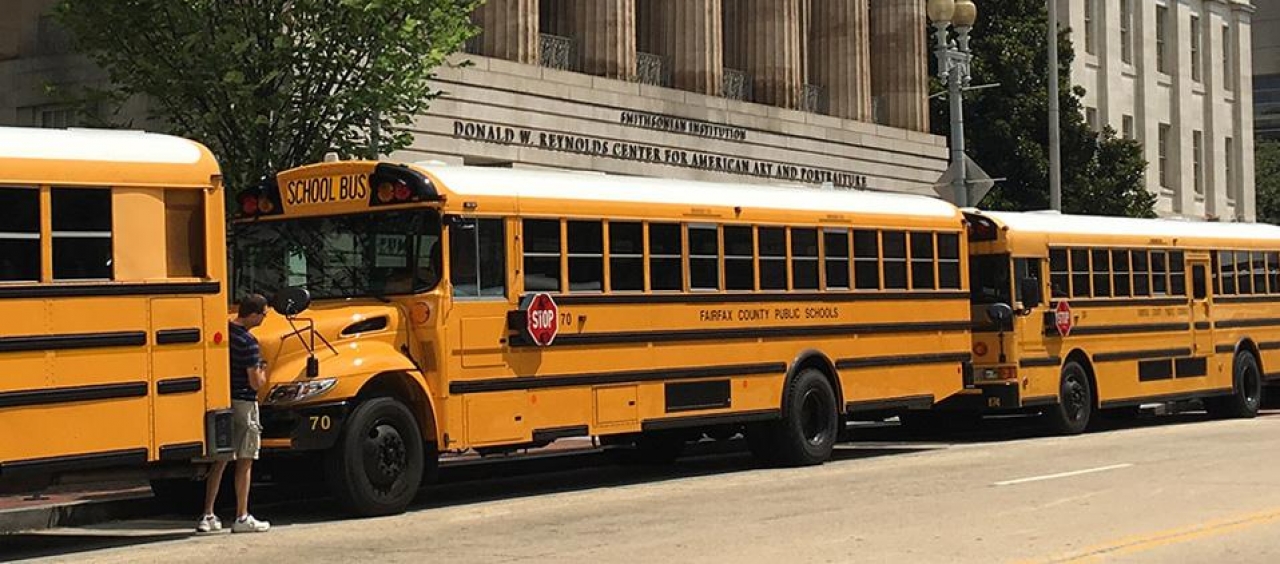
Need information on planning and scheduling a field trip? Many locations provide self-guided tours and additional educational resources to support your visit. Visit Smithsonian Field Trips for more information.
For assistance with/information on group dining at the following museums, please visit the group sales page for more information.
- Air and Space Museum’s Udvar-Hazy Center
- American History Museum
- National Portrait Gallery
- Smithsonian American Art Museum
Please note: No accommodations are available for eating bag lunches within the museums except in the Kogod Courtyard at the Smithsonian American Art Museum and National Portrait Gallery.
Public Transportation
Metrobus and Metrorail Washington's bus and subway system link the city with communities in nearby Maryland and Virginia. Every subway station is equipped with an elevator and/or escalators. For information on Metrobus and Metrorail schedules as well as parking at Metro stations, call 202.637.7000 (voice) or visit the Metro website . DC Circulator operates commuter buses around the National Mall and monuments on its red line/National Mall route. For rates and schedules, visit the DC Circulator website or call 202.962.1423.
The Smithsonian does not operate any parking facilities except at the National Zoo and the Steven F. Udvar-Hazy Center. Parking is available for free at the Anacostia Community Museum.
Tour Bus Parking Near the National Mall There are several areas where tour buses can park on a first-come, first-served basis. For information on bus parking sites, contact the National Park Service Mall Operations Office at 202.426.6841. On-street parking for buses is available at the Anacostia Community Museum.
Car or Van Parking Near the National Mall On-street parking for cars and vans on Jefferson and Madison Drives on the National Mall is limited and the metered 3-hour regulations are enforced. Parking is available in nearby commercial lots and garages. Reserved parking near the museums can be purchased in advance through ParkWhiz .
Parking at the National Air and Space Museum's Steven F. Udvar-Hazy Center Free tour and school bus parking is available. Car or van parking costs $15 per vehicle; free after 4 p.m. There is a 30 minute grace period if you are just dropping off passengers.
Parking at the National Zoo Visit the Zoo's website for information on parking and online reservations.
- Hours and Locations
- Entry and Guidelines
- Maps and Brochures
- Dining and Shopping
- Accessibility
- Visiting with Kids
- Group Sales
All Articles Education Making field trips to museums memorable this school year
Making field trips to museums memorable this school year
Whether you’re focusing on the learning experience, logistics or links to curricula, the Smithsonian has ideas to support field trip planning that make the process a little less daunting, no matter when and where you plan to visit this school year.
By Ashley Naranjo 09/16/24

Astronomy educator Shauna Edson leads students through the Smithsonian’s National Air and Space Museum. The Space Shuttle Discovery behind them is currently on display at the Stephen F. Udvar-Hazy Center in Chantilly, Va. In 2012, NASA transferred Discovery to the Smithsonian after a delivery flight over the nation's capital. (National Air and Space Museum)
As the school year begins, educators across the Smithsonian tend to get super excited as the first yellow school bus pulls up to our museums. Field trips offer the potential to connect content from the classroom and apply it in context; they can inspire future career pathways, hone fundamental skills and offer new perspectives on a topic.
Last spring, Phoebe Sherman, an educator at the Smithsonian’s National Postal Museum , offered the Education Department the following tips for teachers when planning a museum field trip:
- Explore the museum website. Check all of the program offerings, explore the topics covered and pay attention to the targeted age groups.
- Reach out to the museum. Share your questions and work with the staff to build a customized program that will best serve your students’ needs
- Introduce the museum to your students. Explore materials online together to generate excitement and build context of what they might see and experience when they arrive.
- Share your expectations. Communicate your goals and expectations with students and chaperones.
- Unleash student curiosity. Allow your students some space to explore on their own.
- Debrief the trip. Once back in the classroom, discuss the students’ experiences to solidify learnings.
- Keep referencing the trip. Find ways to link new content taught in the classroom back to learnings from the trip.
Sherman is a former classroom teacher and now shares her expertise widely with visiting classrooms from across the country. Having had the chance to join Sherman as she led a group of local kindergartners through the Postal Museum, I noticed the care and thoughtfulness that went into the structure of the program to ensure it was developmentally appropriate, relevant and captured their attention.
On the day of the field trip, we connected at a designated meeting point in the museum lobby and Sherman introduced some key expectations for the young learners. She did so with laminated visuals, seeking input from the students about their own ideas. She previewed the objects they would visit in the exhibition spaces, allowing their anticipation to build. The program was split into multiple connected activities to maintain high engagement, from reading a storybook ( Dear Juno , by Soyung Pak) that previewed themes of the visit to moving through the exhibit spaces and taking in collection objects related to the group’s previous discussions. The students even practiced their own skills in mailing a letter at the museum’s in-house post office. It was all a master class in knowing your audience and the ways they would best connect with the targeted content and skills .The teachers and chaperones, too, received clear pre- and post- instruction and an introduction that likely alleviated any uncertainties about expectations.
As Sherman puts it, “The most powerful field trips find their roots of success back in the classroom with the teacher.” It was important to her that the time and resources the visiting teacher invested in making the field trip a reality translated into a meaningful learning experience for the students.

Sherman is one of hundreds of educators across the Smithsonian who welcome learners to our museums, libraries and the National Zoo each year. In addition to the National Postal Museum, which offers students from grades Pre-K to 12 opportunities to make connections to problem-solving, communications and civic engagement, the Smithsonian has a wide range of experiences to tap in to with your students.
For example:
- The National Museum of Asian Art provides quality field trip programs that deepen students’ understanding of Asian arts and cultures, develop students’ capacity for slow looking, and broaden students’ perspective-taking capacities. Topics for both online and in-person field trips include animals and nature, symbolism in art, celebrations and festivals, and ancient civilizations. For the second year in a row, their museum educators have won the Center for Interactive Learning and Collaboration’s Pinnacle Award for their accomplishments in creating live, virtual field trips that have high educational value, actively involve learners at their level and are professionally delivered.
- The National Museum of Natural History offers field trips for schools, plus homeschool-specific offerings. Students in grades K-2 can visit the museum and focus on animal adaptations, or classifying shells; while students in grades 3-5 can identify minerals or explore insect survival—among a wide menu of options. Secondary students take on hands-on investigations that put the learners in the role of the museum’s scientists, such as studying real 66-million-year-old microfossils and reconstructing past ecosystems, or observing and analyzing images of plates with the organisms that live in the ocean to better understand human impact on coral reefs. Sign-ups for online programming are also available, with limited free spots opening approximately two months in advance.
- The National Air and Space Museum has two locations offering field trips for student groups—including one of the most visited museums in the world at the iconic National Mall building, plus a museum filled with thousands of space and aviation artifacts in two large hangars at the Steven F. Udvar-Hazy Center in Chantilly, Virginia. In addition to guided tours, students can experience the museum through engaging offerings such as science demonstrations and story times. Online programs offered by the museum include virtual planetarium shows and the museum’s Emmy-nominated program for middle school students, STEM in 30 . New monthly episodes are released, featuring hands-on activities, explanations of aviation and space topics aligned with national standards, and interviews with experts.

While some Smithsonian museums don’t specifically offer facilitated field trips or student visits at the moment, museums like the Hirshhorn Museum and Sculpture Garden offer suggestions and tips for pre-visit lessons, as well as exhibition guides that encourage students to think critically, look closely and draw creatively through conversation, activities and reflection.
If you live outside of the Washington, D.C. area, you may already know that the Smithsonian is not solely based in our nation’s capital, but in fact, has research centers and museums in other cities too.
The Smithsonian Environmental Research Center in Edgewater, Md., offers unique on-site school programs that focus on Chesapeake Bay biodiversity and the science of the Smithsonian. Students take on the role of scientists, using similar sampling techniques and methods to learn about life in the Bay and their connection to that life.
In addition to the museum on the National Mall, the National Museum of the American Indian has a second location based in New York City. Students ages 10 and up can enjoy the interactive imagiNATIONS Activity Center , a lively space to explore scientific principles behind Native innovations and technologies that are so ingenious many remain a part of our daily lives. One of the key takeaways of the space is that Indigenous people are the original innovators of the Americas.
The Cooper Hewitt, Smithsonian Design Museum is also based in New York City. Cooper Hewitt welcomes K-12 classes to experience design at the museum. Their field trips explore how design shapes and reflects our everyday lives. In the 2024-25 school year, students will be led by a Cooper Hewitt educator on a visit to the exhibition, “ Making Home—Smithsonian Design Triennial ,” followed by a hands-on activity that immerses them in the design making process. Design Field Trips are tailored to meet the needs of students in every stage of their learning journey. Each track has been developed to meet national and New York State Standards and is aligned with the Culturally Responsive-Sustaining Education framework.
The Smithsonian also has a network of over 200 museums and organizations nationwide as part of the Smithsonian Affiliations program. What field trip offerings are hosted by your local museum spaces? Museums such as the Durham Museum in Omaha, Neb., produce Museum Live! and other engaging virtual field trip offerings. Each week, during the school year, Museum Live! brings 30 minutes of an interactive, broadcast-style show to classrooms nationwide. The program includes segments featuring guest speakers from the Smithsonian network, a behind-the-scenes look at museum exhibits and artifacts, cultural connections to the community, and current events.

Of course, museum field trips are not solely limited to teachers and students. Out-of-school time groups can also find inspiration in museum spaces. Boys & Girls Clubs of America teens from across the country visit the Smithsonian during their Summit for America’s Youth, an annual youth advocacy event held in Washington, D.C., to make connections between historical case studies of changemakers and their own role in becoming civically engaged around the issues they care about most.
No matter how you decide to engage your students in museum learning this school year, we recommend referring back to Sherman’s tips as you plan the experience. While postal history or design might not be topics that first come to mind, museum educators take on the integral role of bridging content from our collections and exhibitions to align to subject areas and skills that will engage students and offer unique hooks into a topic. Remember too, effective field trips can come in many forms–from facilitated to self-guided, from onsite to online, from hands-on to discussion-based.
A full listing of Smithsonian spaces and field trip opportunities is available at the Smithsonian website .
Opinions expressed by SmartBrief contributors are their own.
____________________________________
Like this article? Sign up for ASCD SmartBrief to get news like this in your inbox, or check out all of SmartBrief’s education newsletters, covering career and technical education, educational leadership, math education and more.

IMAGES
COMMENTS
Despite what many people think, the Smithsonian isn't a single museum. Rather, it is a collection of world-class museums, galleries, gardens, and a zoo. With 11 sites clustered around the National Mall and six other museums and the National Zoo elsewhere in the Washington, DC, area, the Smithsonian's collection of knowledge centers serve as a treasure chest for visitors curious to learn ...
All Smithsonian locations permit the use of manual and motorized mobility devices (e.g., scooters, walkers, wheelchairs) and have at least one entrance accessible to visitors using mobility aids. Visitors who bring a mobility aide or device with them should plan to maintain possession of the item throughout their visit.
10 Travel Tips For Visiting The Smithsonian. Although you can't bring food into the museums, you can bring bottled water (which I highly recommend because the museums are gigantic and you'll be walking a lot). You'll want to plan for a max of two museums a day (just to take in the whole experience).
Plan your Smithsonian visit. When you visit the Smithsonian, you're entering the world's largest museum complex, with approximately 157 million artifacts and specimens in its trust for the American people. Most of our museums are located in the Washington, D.C., area with two in New York City.
Get the most out of these by following our eight top Smithsonian museum tips. 8 Tips for the Smithsonian and FREE museums in DC. 1. Plan your Smithsonian visit in advance. There are so many Smithsonian museums and individual exhibits that it can feel overwhelming to navigate. It is really helpful to look at the websites for the Smithsonian ...
Exploring everything in Washington D.C.'s Smithsonian museums could take an entire vacation. Here are the must-see highlights if you only have a short time to explore.
The Castle is a great place to start your trip as it is home to the Smithsonian Visitor Center. While you are there, make sure you take photos of The Castle and visit the garden in the back. ... The museum is free like the rest of the Smithsonian museums but plan to pay $15/car. Open daily except Christmas. National Zoo . 3001 Connecticut Ave ...
The Smithsonian Museums in Washington, DC are world class attractions with a variety of exhibits ranging from a 3.5 billion-year-old fossil to the Apollo lunar landing module. Visitors enjoy examining more than 137 million objects, including many irreplaceable historic artifacts, works of art, scientific specimens and cultural exhibits.
Planning Your Visit to the Museum FAQs. ... Visitors are encouraged to travel as lightly as possible and refrain from bringing large bags and packs for the best museum experience. ... The Smithsonian permits still and video photography for noncommercial use only in its museums and exhibitions, unless otherwise posted. ...
Washington DC is often synonymous with the Smithsonian, but it's not just one museum—it's a treasure trove of 19 museums, a zoo, and enchanting gardens, all scattered across the vibrant city. As a family-focused travel agent, I understand the importance of engaging experiences for all ages, and the Smithsonian delivers just that.
Smithsonian magazine has launched its new "Visitors Guide & Tours" app. The app, now available for both Apple and Android-based smartphones, will aid Smithsonian visitors planning a trip to the Institution's Washington museums and the National Zoo. It includes custom-built tours, navigational tools, maps and museum floor plans.
The Smithsonian permits still and video photography for noncommercial use only in its museums and exhibitions, unless otherwise posted. For the safety of our visitors and collections, the use of tripods, monopods, and selfie sticks is not permitted at any time. Working members of the media who need to use a tripod or monopod must obtain ...
Here are a few tips to help navigate your way through the marble halls of the Smithsonian. Stick to a plan: The Smithsonian is an enormous complex, made up of 18 museums, galleries and even a zoo. Although spread across the city, the major museums are centrally located along the National Mall sandwiched between the U.S. Capitol and Washington ...
The Smithsonian is the world's largest museum, housing over 145 million artifacts. ... Pro Tip for Planning Your Visit. ... Minnesota native and Midwest travel expert Jennifer provides insider tips and budget-friendly trip ideas for families looking to explore the Land of 10,000 Lakes. Through her travel blog DayTripper28, she draws on first ...
With 4 days in Washington DC, you have a little more time to see the museums and historical landmarks. 5 days in DC allows you to take a day trip to a nearby site like Arlington Cemetery, Mount Vernon, or somewhere even further. You can easily hop on the metro for a quick day trip out of the city itself.
Smithsonian Institution. The Smithsonian's virtual presence comprises millions of educational resources for learners of all ages. Younger students (and their teachers or caregivers) can visit ...
Experience the world your way - let's start planning your custom-made itinerary today! Smithsonian Journeys Newsletter Be the first to hear about new tours, exciting travel experiences, and special offers on our 350+ departures.
Trip Planner Live Chat agents available Monday - Friday: 07:00 AM - 07:00 PM EDT, Saturday - Sunday: 08:00 AM - 07:00 PM EDT, excluding holidays FROM (has autocomplete) Reverse. TO (has autocomplete) Travel by Bus Rail Both.
"Plan your trip ahead of time," Paselok, who is also with Accuweather, adds. "Get to those places, because they fill up fast." The leaves on deciduous trees turn colors as the tree begins ...
Need information on planning and scheduling a field trip? Many locations provide self-guided tours and additional educational resources to support your visit. Visit Smithsonian Field Trips for more information. For assistance with/information on group dining at the following museums, please visit ...
Last spring, Phoebe Sherman, an educator at the Smithsonian's National Postal Museum, offered the Education Department the following tips for teachers when planning a museum field trip: Explore ...